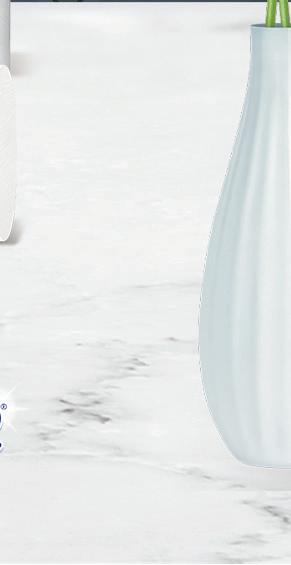


















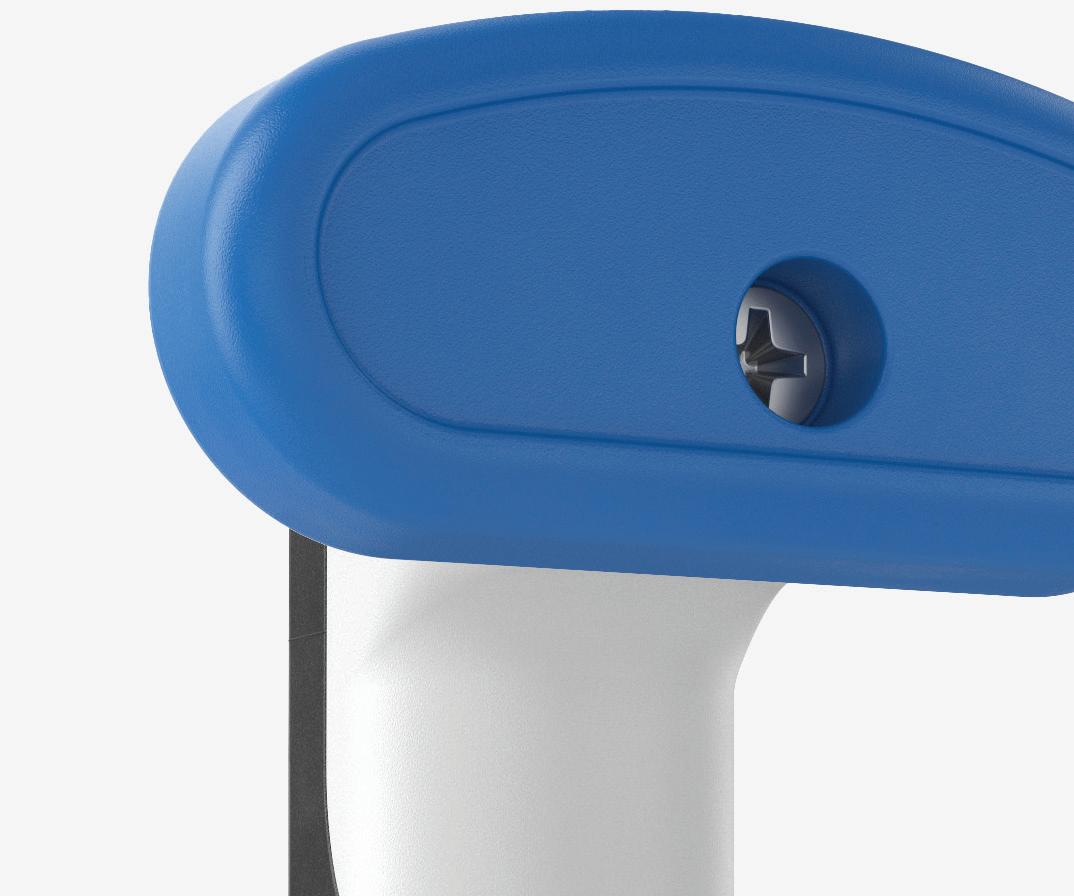



Our Classmate® range of school bag & hat hooks, offer a durable, safer alternative to sharp metal bag & hat hooks. The Classmate® range of bag & hat hooks, now four great designs and a wide range of colours to choose from. Suitable for installation indoors or out.
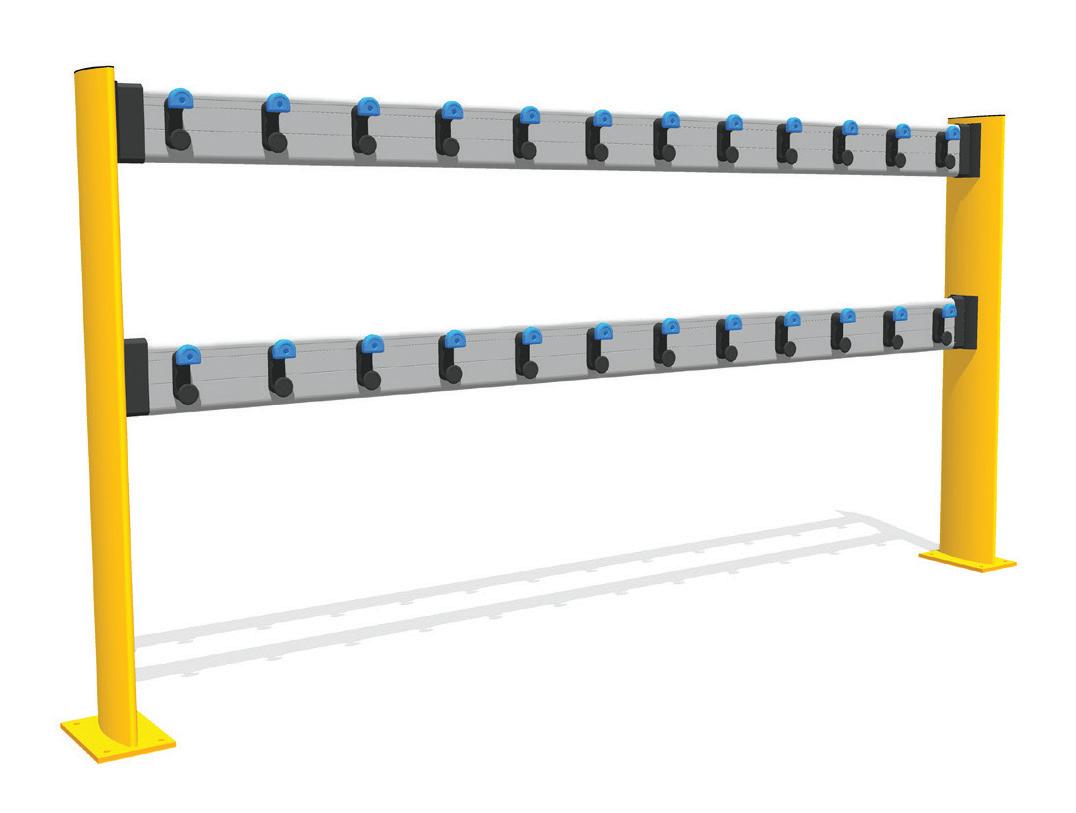

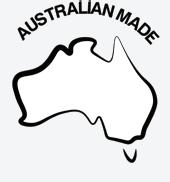
All New Stowmate® Aluminium BagTrac FS2400, designed specifically for use with your Safehook Ihook products. Stowmate offers End-Users and Specifiers a smarter, safer way to mount bag and hat hooks. Double sided, floor mounted storage.









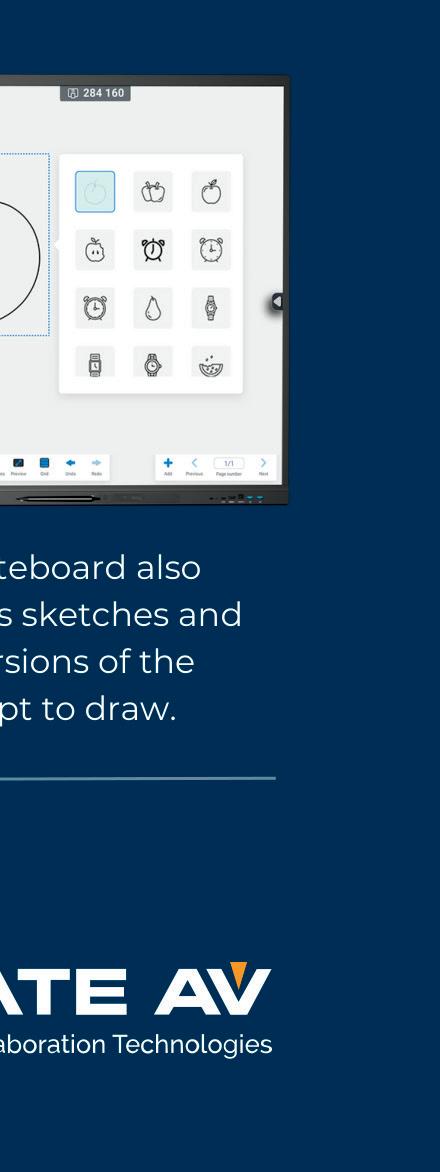



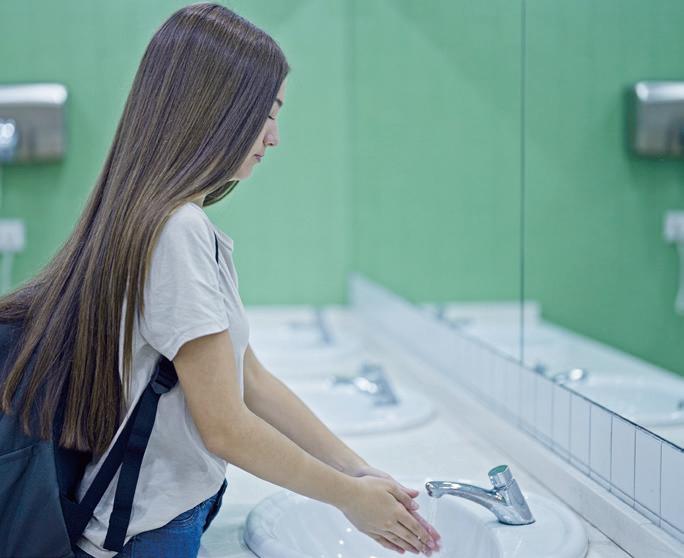
School News is distributed to primary, secondary and intermediate schools throughout Australia by Multimedia Pty Limited.
The views and images expressed in School News do not necessarily reflect the views of the publisher. The information contained in School News is intended to act as a guide only, the publisher, authors and editors expressly disclaim all liability for the results of action taken or not taken on the basis of information contained herein. We recommend professional advice is sought before making important business decisions.
The publisher reserves the right to refuse to publish or to republish without any explanation for such action. The publisher, it’s employees and agents will endeavour to place and reproduce advertisements as requested but takes no responsibility for omission, delay, error in transmission, production deficiency, alteration of misplacement. The advertiser must notify the publisher of any errors as soon as they appear, otherwise the publisher accepts no responsibility for republishing such advertisements. If advertising copy does not arrive by the copy deadline the publisher reserves the right to repeat existing material.
Any mention of a product, service or supplier in editorial is not indicative of any endorsement by the author, editor or publisher. Although the publisher, editor and authors do all they can to ensure accuracy in all editorial content, readers are advised to fact check for themselves, any opinion or statement made by a reporter, editor, columnist, contributor, interviewee, supplier or any other entity involved before making judgements or decisions based on the materials contained herein.
School News its publisher, editor and staff, is not responsible for and does not accept liability for any damages, defamation or other consequences (including but not limited to revenue and/or profit loss) claimed to have occurred as the result of anything contained within this publication, to the extent permitted by law.
Advertisers and Advertising Agents warrant to the publisher that any advertising material placed is in no way an infringement of any copyright or other right and does not breach confidence, is not defamatory, libellous or unlawful, does not slander title, does not contain anything obscene or indecent and does not infringe the Consumer Guarantees Act or other laws, regulations or statutes. Moreover, advertisers or advertising agents agree to indemnify the publisher and its’ agents against any claims, demands, proceedings, damages, costs including legal costs or other costs or expenses properly incurred, penalties, judgements, occasioned to the publisher in consequence of any breach of the above warranties.
The Multimedia Pty Ltd team acknowledges Aboriginal and Torres Strait Islander peoples as the First Australians and Traditional Custodians of the lands upon which we gather, work, and publish. We want to pay our respects to Elders past, present, and future, who continue cultural, educational, and spiritual connections to Country.
© 2024 Multimedia Pty Ltd. It is an infringement of copyright to reproduce in any way all or part of this publication without the written consent of the publisher.
PO Box 1080, Noosaville BC, Queensland, Australia 4566 Phone: (07) 5440 5322 Fax: (07) 5604 1680 mail@school-news.com.au school-news.com.au
EDITOR, Gemma Easton editor@school-news.com.au
INDUSTRY REPORTERS
Naomii Seah and Sarah Davison
PRODUCTION, Richard McGill
ADVERTISING, Pip Casey advertising@school-news.com.au
CONTRIBUTORS
Rochelle Lewis, Michelle Hewison, Sarah Drysdale, Katharyn Cullen and Denyse Ritchie KEY
Autumn is a great time of year. The craziness of the start of the year is well behind us, yet there is still plenty of time before the end of the year to get everything done.
Well. At least that’s what we tell ourselves!
Each term as we wrap up an edition of School News, I feel like my work to-do list is finally under control. It isn’t long, though, until the tasks start piling up again as we work on a new edition of the magazine. Things get busy, and we’re all once again in the chaos and excitement of meeting our deadlines. Everything does always get done, though, and it’s a great feeling to be part of a team who work together to make sure we get across the line
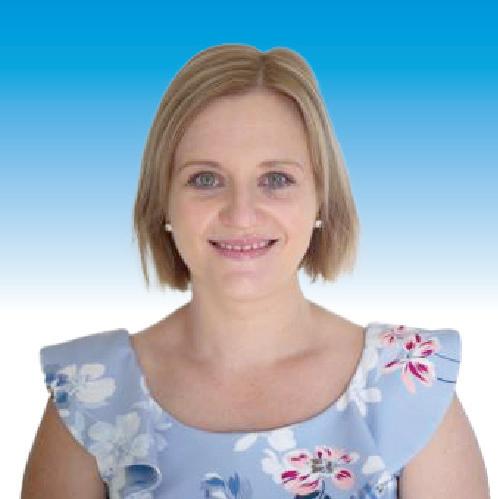 Gemma Easton, Editor, SchoolNews editor@school-news.com.au
Gemma Easton, Editor, SchoolNews editor@school-news.com.au
every time. I expect many of you feel the same way as one term ends, and another one begins.
We’ve seen headlines this year of upset parents, protesting the change of their child’s school from single sex to coeducational. It’s an emotive issue, with passionate debate from parents, teachers and students.
In our Special Report this term, our reporter Sarah Davison


investigates why schools are changing, and what the academic and wellbeing outcomes are for students in both models.
For our Profile this term, we visit The Australian Industry Trade College. Proudly di erent, the AITC seeks to empower young people who don’t fit conventional definitions of ‘smart’. By engaging these students in practical, hands-on learning that fasttracks their entry to the world of work, the AITC is helping all students to shine. We spoke with Executive Principal Mark Hands to learn about the school’s growth, and future plans.
As the weather cools down, cosying up in the library is an appealing idea. In this edition, we
look at the importance of school libraries, and share some tips for making them well-used and well-loved spaces for all in your school community. Collection management, style and design, furniture choices and digital resources all contribute to this.
And finally, everyone in the education sector knows the importance of ongoing professional learning and development. We discuss di erent types of PLD available, delivery methods, external providers, and opportunities for non-teaching sta . Continuing our own learning journeys is an excellent example to our young people.
I hope you enjoy this term, and this issue of School News.
The School News team acknowledges Aboriginal and Torres Strait Islander peoples as the First Australians and Traditional Custodians of the lands upon which we gather, work, and publish. We want to pay our respects to Elders past, present, and future, who continue cultural, educational, and spiritual connections to Country.

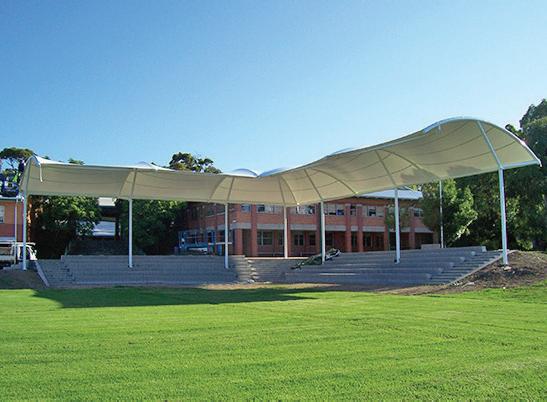

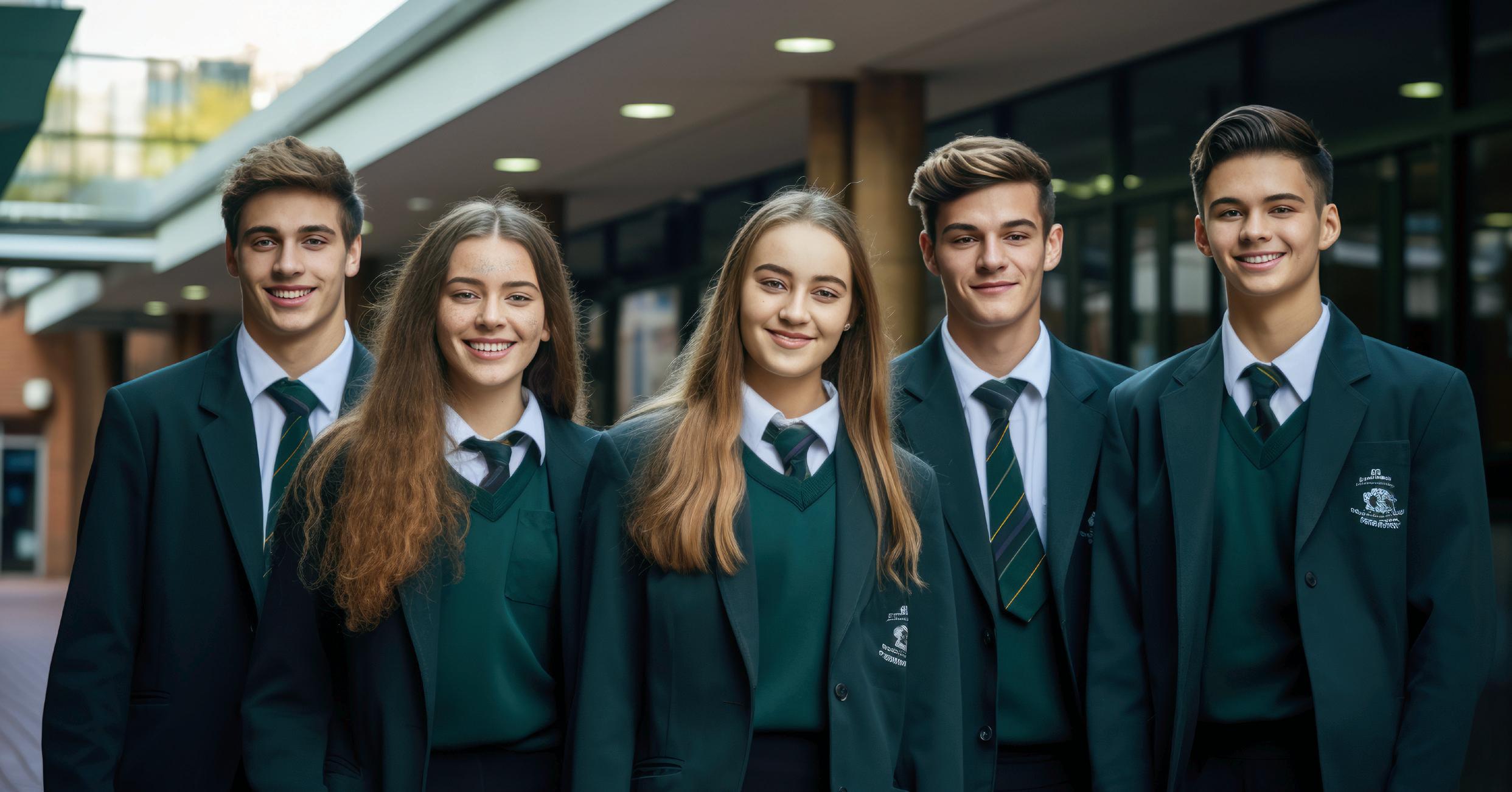 By Sarah Davison, Industry Reporter
By Sarah Davison, Industry Reporter
A video of parents passionately objecting to a decision by Sydney’s Newington College to transition to co-ed went viral earlier this year.
Through tears, Newington College parents spoke to the media about the “catastrophic” decision to start admitting girls into the school from 2028. Newington has a 160-year history as a boys-only college, and many said they feared this legacy will be eroded by the presence of female students. Others expressed concern that academic achievement would decline.
Another elite Sydney all-boys institution, Cranbrook School, will begin admitting girls in Years 7 and 11 in 2026, with the whole senior school to be
One of the most important parenting decisions is the choice of school
co-educational by 2029. Like Newington, there was some resistance among the school community and alumni. Younger alumni, though, supported the proposal, with about two dozen recent head prefects writing to the school council considering the co-ed proposal, saying private boys’ schools foster behaviours and attitudes that are no longer acceptable in broader society.
From 2025, Randwick Boys High School and Randwick Girls High School will become one coeducational school.
So why the shift from single-sex to co-ed? And does it really matter?
Overwhelmingly, co-education is the dominant school model in Australia, with less than four percent of the nation’s more than 9500 schools being single-sex.
Of the 4 million students enrolled in primary and secondary schools, single-sex schools educate just 284,000. Most of Australia’s single-sex schools are
in major cities, and nearly half of those are in New South Wales. Secondary education facilities account for 86 percent of singlesex schools, and 85 percent are non-government schools.
The split between all-girls, and all-boys is fairly even, with the former making up 54 percent of students in single-sex schools.
Single-sex schools do remain the preferred choice for some parents and students for a variety of reasons. And while recent media attention has highlighted schools planning to convert to a co-educational model, Loreto College Marryatville Principal Kylie McCullah says samesex schools are still seeing strong enrolment numbers.
“While there is a widely promoted claim that there has been a significant shift towards co-education, the recent data does not support this belief,” Ms McCullah said.
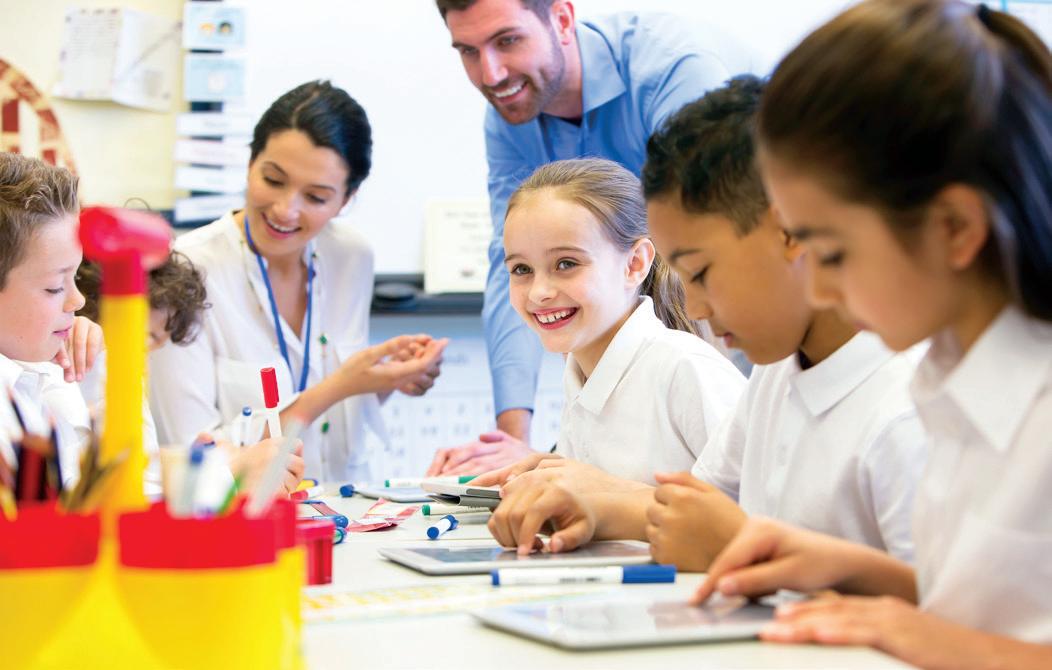
“Over the last decade, there has indeed been a decline in the share of students educated in singlesex schools, however it has been very modest, from 7.2 percent in 2018 to 7 percent in 2022.
“It is also important to note that the absolute number has grown by 11,000 students, with enrolment growth greater in girls’ schools than boys’ schools.”
Individual schools will have distinct reasons for transitioning to co-ed, and will manage the change in their own way. Budget considerations, student outcomes, and future planning, though, are likely common factors in many schools’ decision-making process.
Of course, moving away from a single-sex model increases the potential enrolment pool, and in turn may boost enrolments. This can lead to more funding for the school, particularly if enrolments have not been full in recent years. Students may benefit from this funding, with improved facilities and resources.
An increased and more diverse student population can also extend academic opportunities. Some single-sex schools find it challenging to offer a complete range of subjects, including
varied STEM disciplines, as well as visual and performing arts, and hospitality. Low student interest in these subjects may mean a school is unable to resource them, and so they are not offered for students. More student enrolments and the addition of the opposite sex may see interest in all subjects reach a level where including them in the school curriculum is sustainable.
And for some families, choosing a co-ed school is a matter of convenience. Having both boy and girl children at the one institution can alleviate the pressure on busy parents, juggling school events, extra-curricular activities, and regular school attendance. Building community and strong relationships can also be made easier, as parents with more than one child, of different genders, can get to know the school, staff and other parents well.
When it comes to academic advantages for students attending either model of school, the research varies.
Recent insights from David Curtis, Adjunct Associate Professor at the College of Education, Psychology and Social Work, Flinders University, suggest the school type may have negligible impact on student literacy rates.
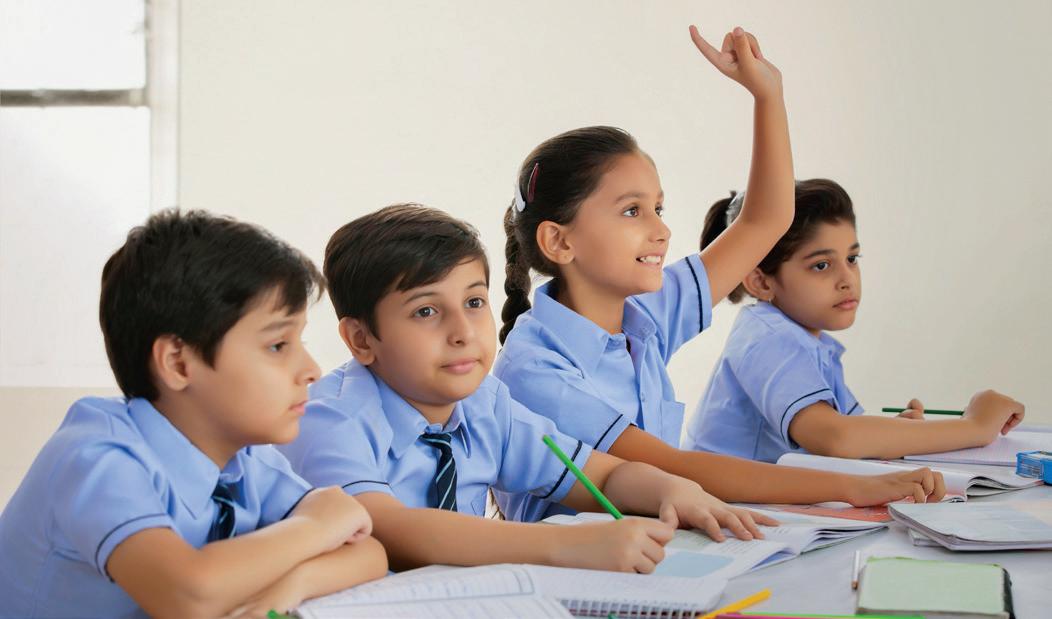

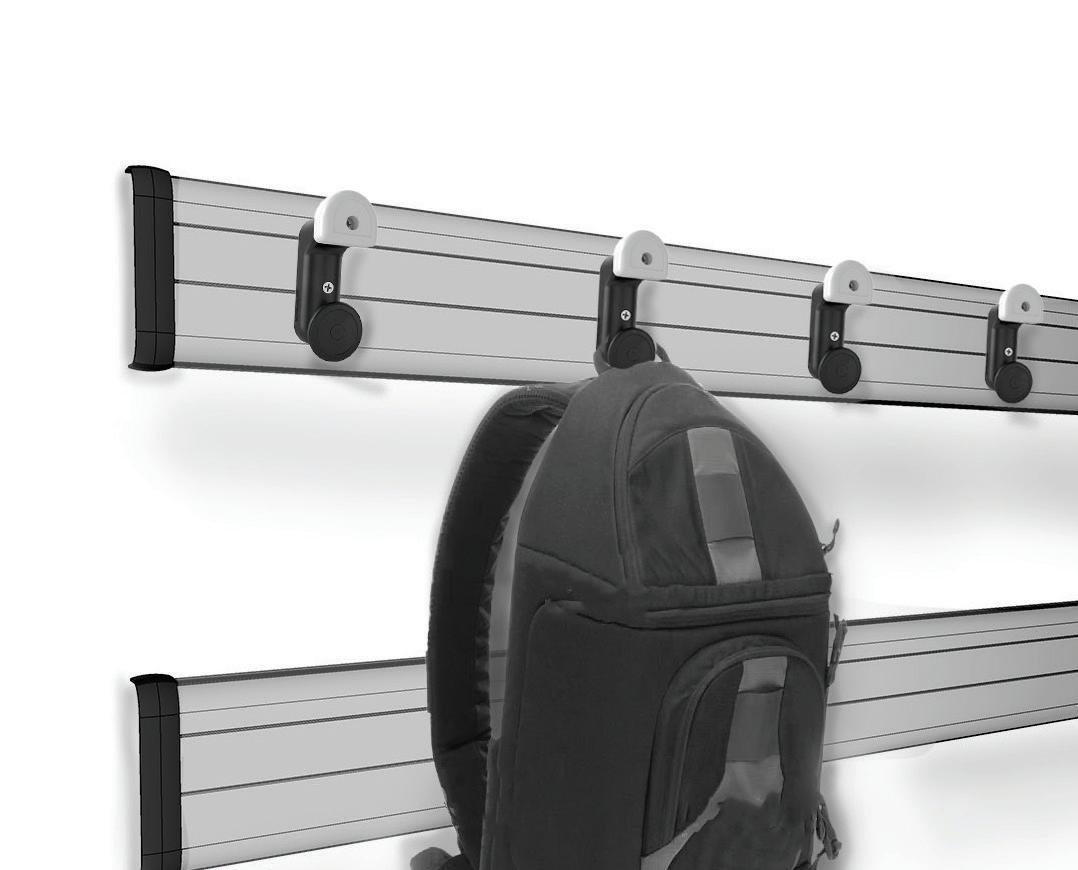

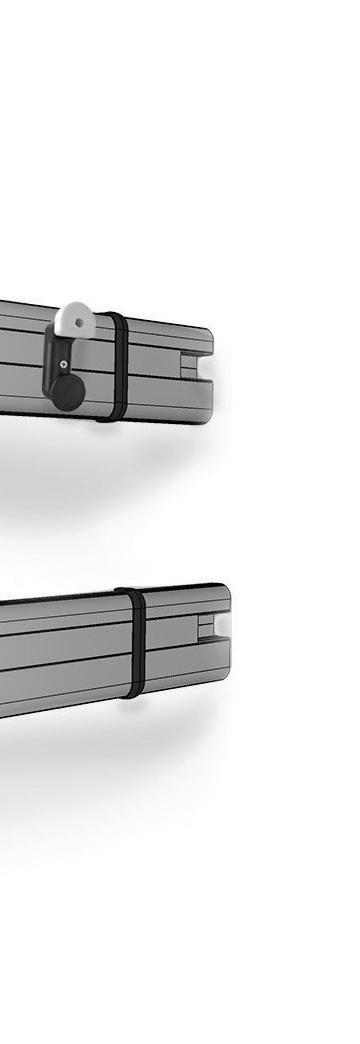
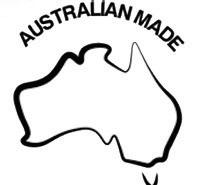
Stowmate ® Wall Mount Systems provide for a smarter, safer way to mount your Safehook bag & hat hooks. Wall mounted aluminium rail extrusions alter native to traditional wooden rails & bag racks.
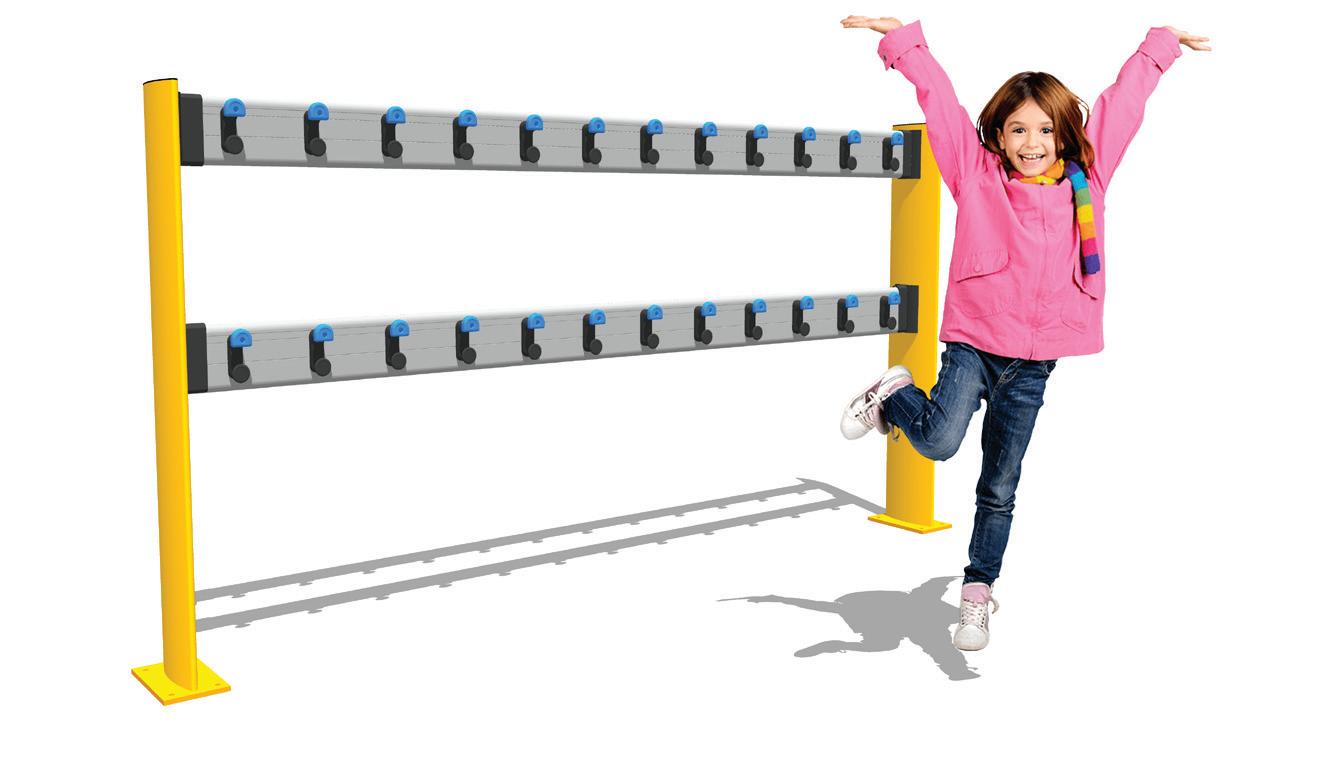
Stowmate ® BagTrac FS2400 when wall space is a
Analysing data from the national Programme for International Student Assessment (PISA), Prof Curtis found that the academic performance gap between genders in reading literacy remained, irrespective of school type. By Year 10, boys lag almost three terms behind girls, a disparity that persists whether students attend singlesex or coeducational schools. However, in mathematics and science subjects, school type does appear to make an impact- particularly for girls.
Recent HSC data shows that girls’ involvement in higher-level maths is steadily declining, yet data from the Victorian Certificate for Education shows that girls at single-sex schools are 85 percent more likely to take advanced mathematics than girls in co-ed schools.
They are also 79 percent more likely to study chemistry, 68 percent more likely to take intermediate mathematics, and 47 percent more likely to study physics.
Another study found that although just 22 percent of female students in New South Wales attended a single-sex school, 40 percent of female engineering students at the University of Technology in Sydney were from all girls’ secondary schools.
While academic achievements and outcomes often centre the debate surrounding single-sex or co-education, the true benefits may lay in students’ social and emotional development.
“Some of the benefits pertaining to all-girls schools that I have witnessed at Loreto include increased confidence and participation in class and improved leadership skills,” Ms McCullah said.
“Additionally, girls are provided opportunities to take on leadership roles and participate in activities that are not necessarily associated with their gender without fear of judgement.
“All-girls schools offer specialised learning environments catering to specific needs of girls while at the same time encouraging gender-neutral interests.”
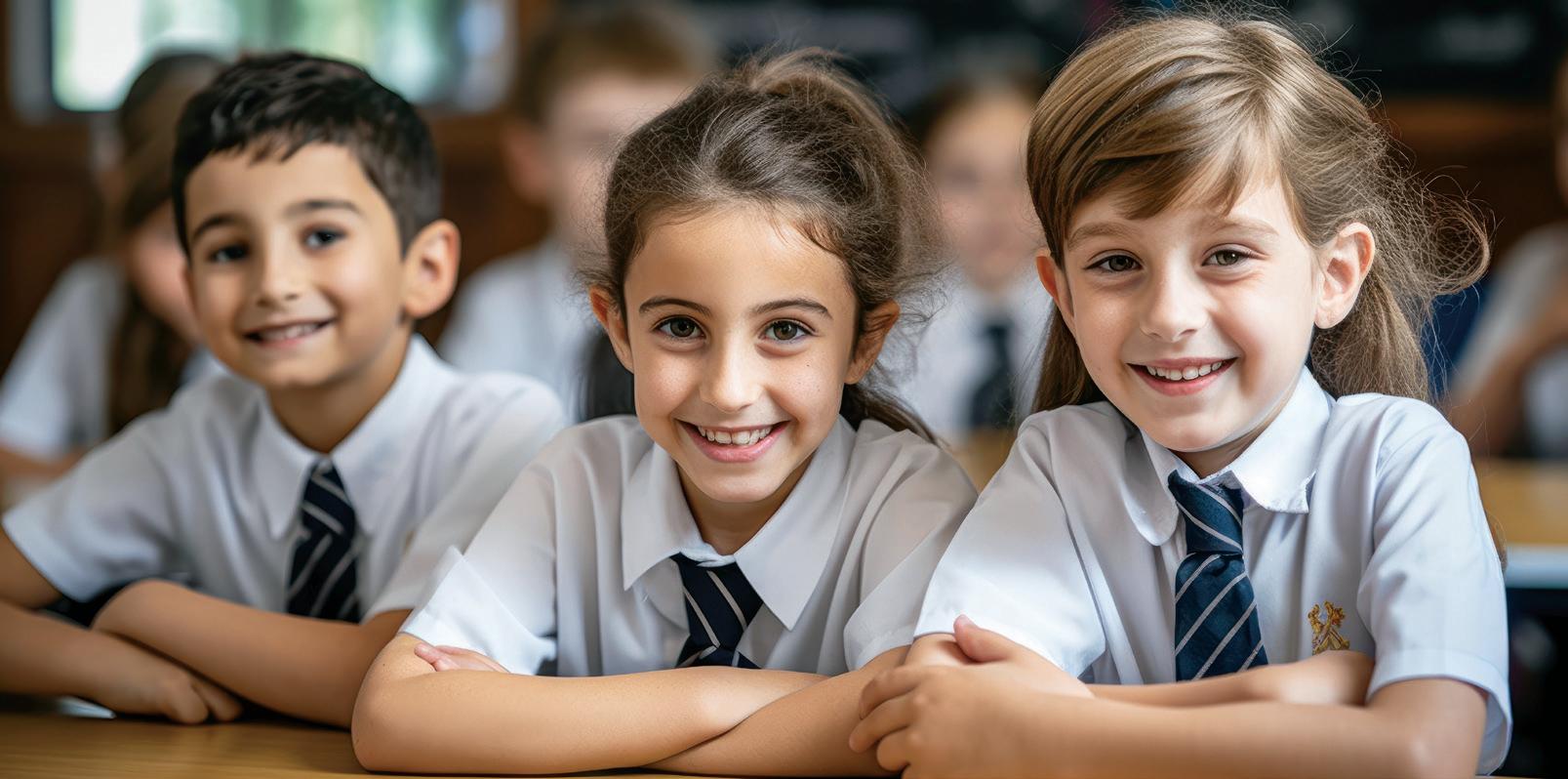
There is research to support Ms McCullah’s observations. A recent study from the University of Queensland found that girls leaving single-sex schools were more confident than those leaving co-ed schools.
The report, commissioned by the Alliance of Girls’ Schools Australasia, was conducted using OECD data. It found girls from single-sex schools reported a positive difference on 227 out of 314 measures, or 72 percent. These include higher scores and more confidence in science classes, better academic engagement and a greater sense of school belonging than girls at co-ed schools.
Girls who attended singlesex schools also reported a higher intention of completing a degree or doctorate – 69 percent at single-sex schools intend to go on to tertiary education compared to 51 percent of co-ed girls.
Alternatively, advocates of the co-ed experience point to how co-ed schools offer a parallel to the real world, preparing them to be better equipped to work with people outside their own demographics. There is also literature that suggests that co-educational environments may be beneficial for boys.
“There is a small but noticeable trend of single-sex schools converting or merging into co-ed schools, most of these examples are of boys schools,” Ms McCullah said.
“Part of the reason is that the co-educational environment seems to favour boys more than girls. Some research suggests that boys may do better in co-ed, and some educators go as far as to suggest that girls can be a positive influence on boys in co-ed schools, though this is often to the detriment to their own learning.”
Additionally, single-sex schools may provide a safer culture for young women, with a recent study of South Australian schoolchildren aged 11 to 19, revealing that sexism and gender stereotyping remains prevalent in modern classrooms.
The study by Flinders University found that girls experience significantly higher rates of sex-based harassment in co-ed schools. Adjunct Professor Roslyn Shute’s research established that boy-to-girl harassment is the most frequent type of sex-based harassment in co-educational schools.
Boys are far more likely than girls to be the perpetrators of sexually-

toned bullying, victimising mainly girls, and, to a lesser extent, boys who fall outside of stereotypical gender roles.
An analysis of Australian and New Zealand PISA data found that the rate of bullying of girls in single-sex schools is markedly lower than for girls in co-educational schools.
While the debate around singlesex versus co-educational school models is likely to continue, and more single-sex schools look to move into a co-educational model, the true marker for student success may lie outside school type altogether.
A striking finding from the PISA data insights found that socio-economic status has a significant impact on educational achievement. The findings found that students from low-SES backgrounds in both single-sex and co-educational settings are significantly disadvantaged, trailing their peers from higher-SES backgrounds by about two years in learning.
These findings highlight the need for a broader focus on socioeconomic factors in education, beyond the scope of school type.
Despite the diversity of opinions and research on the topic, the choice of school remains an individual one.
“One of the most important parenting decisions is the choice of school, and Australian parents enjoy the freedom to choose from a range of education options,” Ms McCullah explained.
“It is important to consider individual student needs and preferences to make the right decision.”
Single-sex, co-ed, public or private – the discussion is sure to consider.


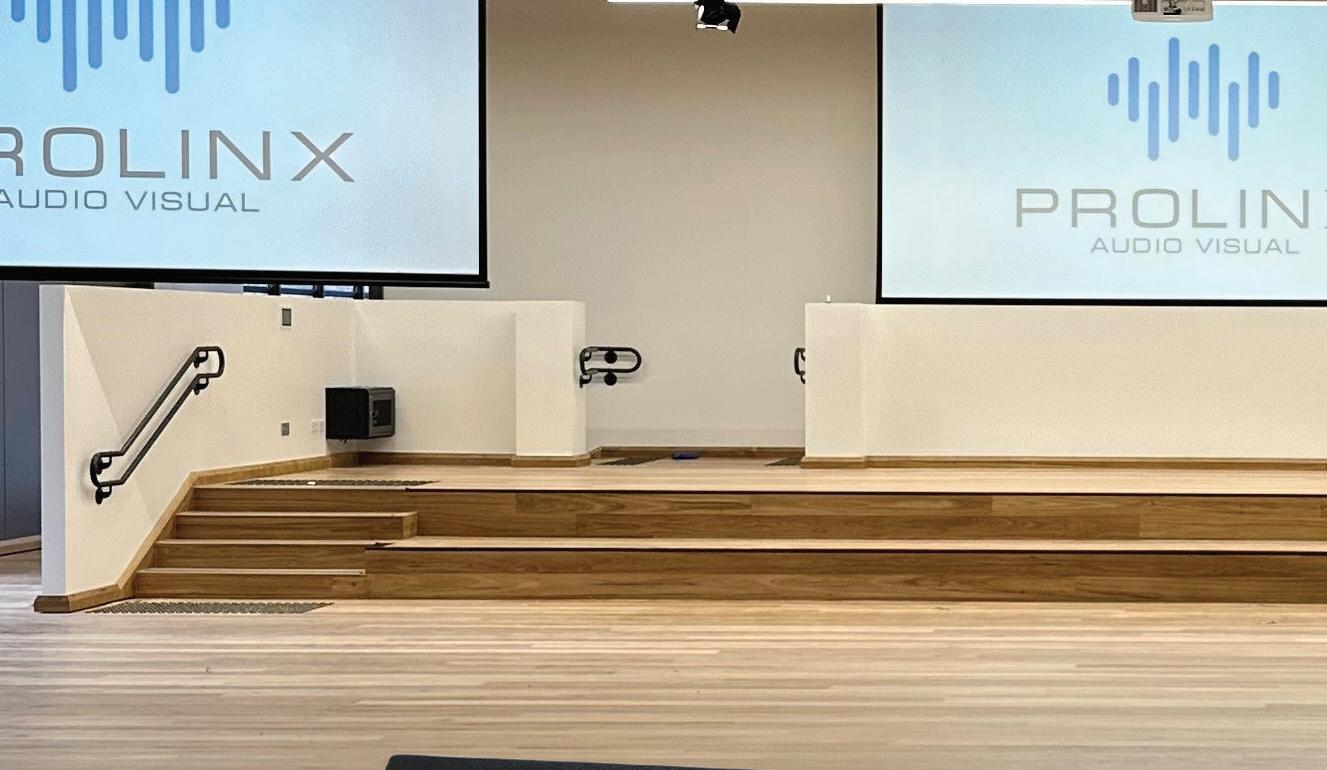
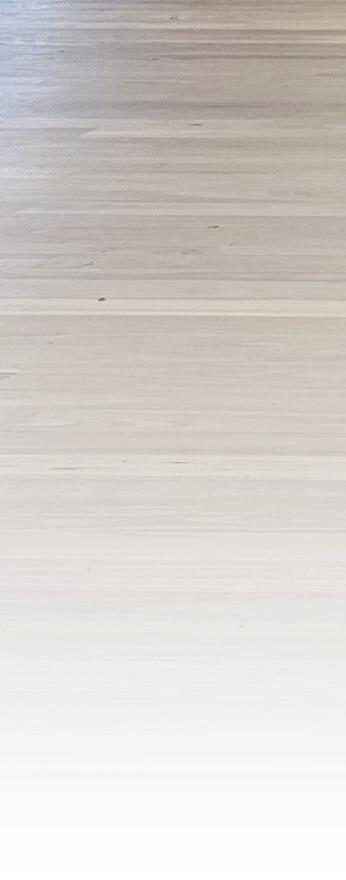
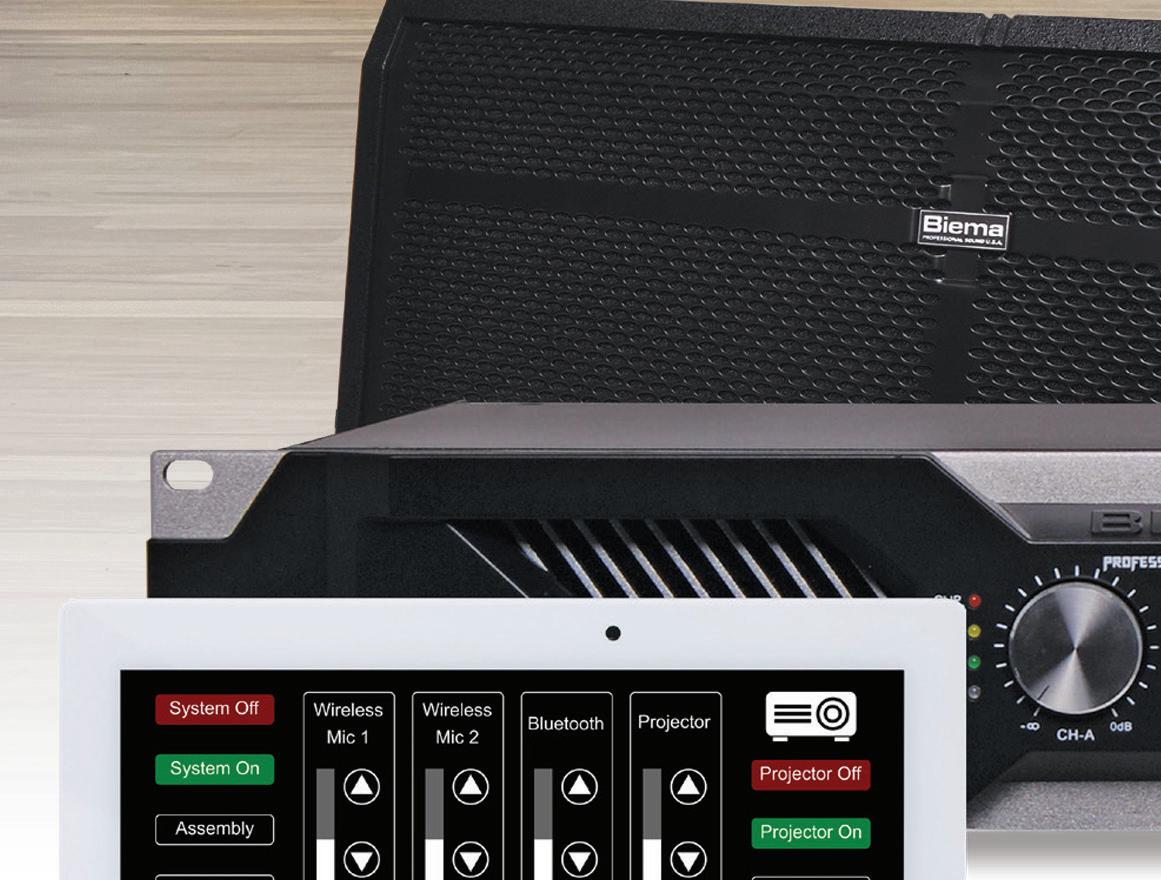
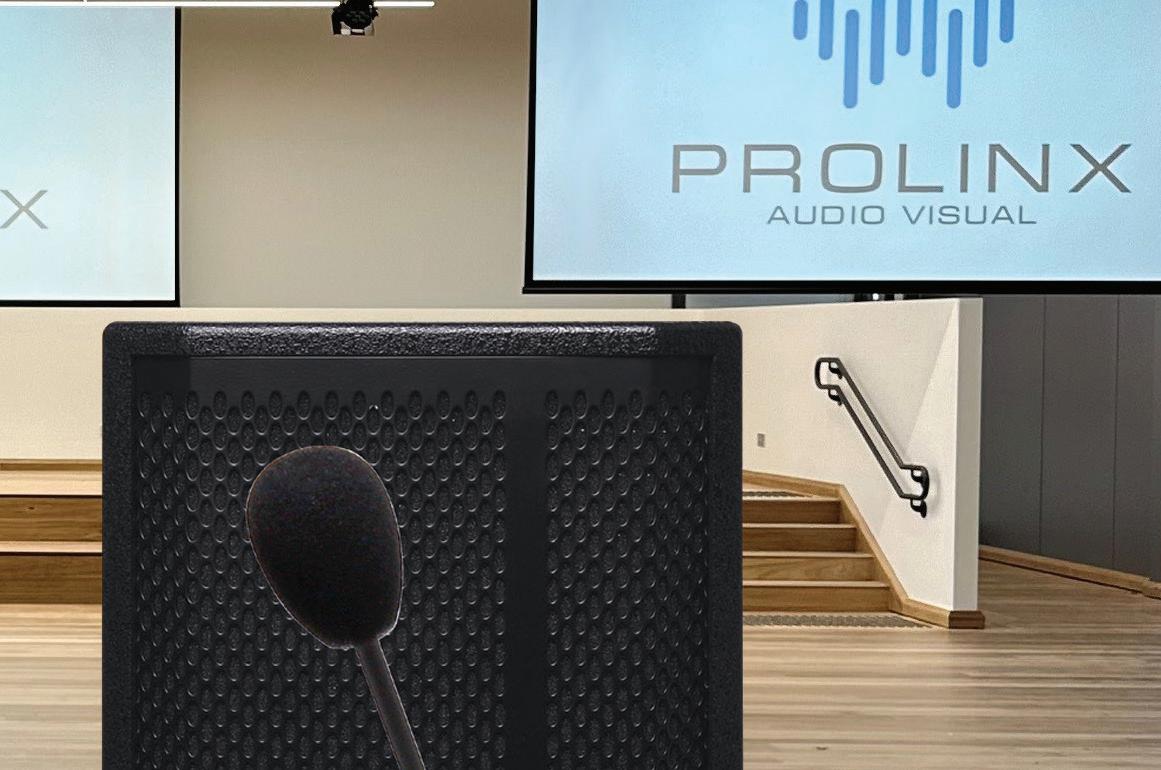
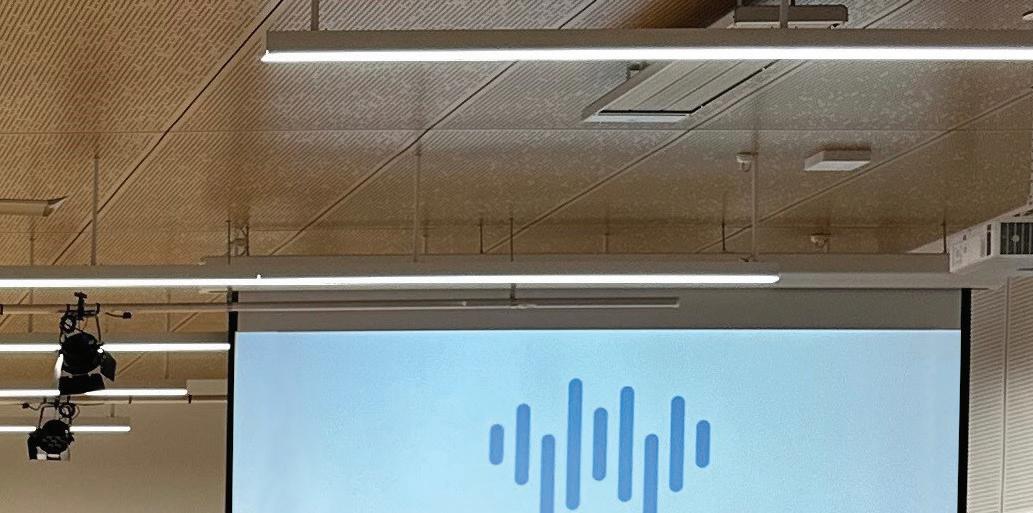
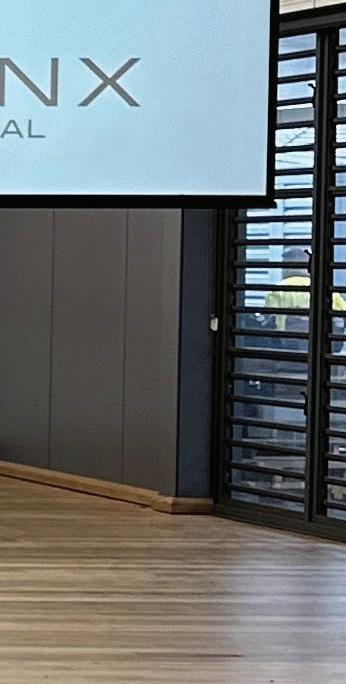
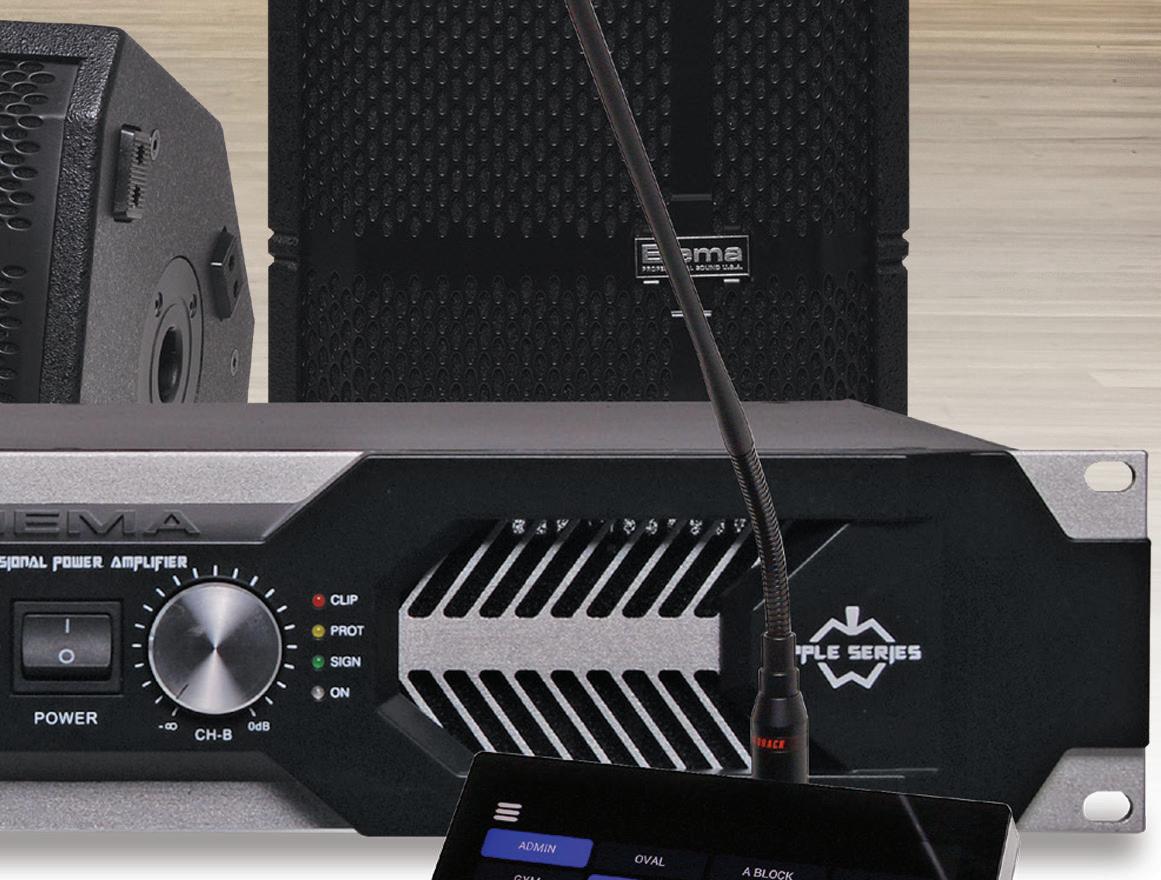
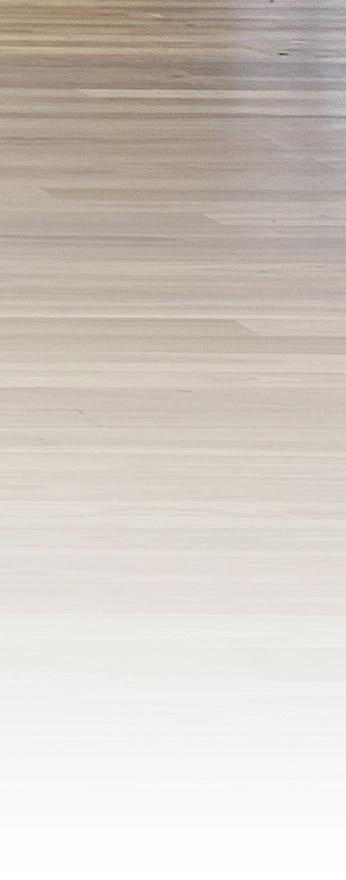



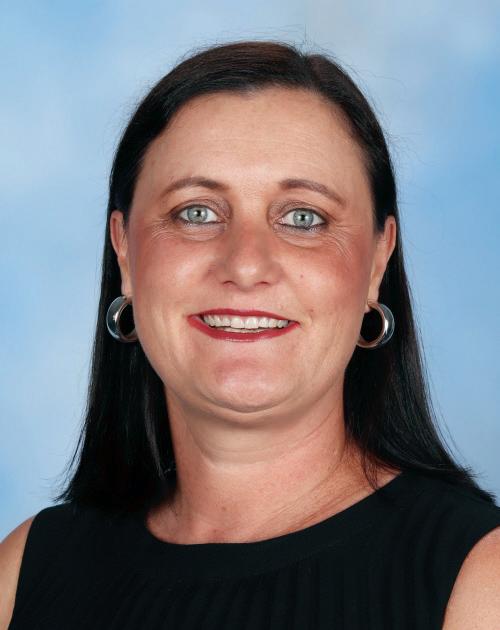
 By Rochelle Lewis , Principal and Michelle Hewison , HOD Wellbeing and Engagement, Elanora State High School, QLD
By Rochelle Lewis , Principal and Michelle Hewison , HOD Wellbeing and Engagement, Elanora State High School, QLD
In today’s educational landscape, addressing complex issues like student vaping requires more than just disciplinary actions. It demands a proactive and collaborative approach that prioritises student wellbeing and fosters a positive learning environment.
At Elanora State High School (ESHS), our journey towards tackling vaping incidents has been marked by innovation, collaboration, and a commitment to student empowerment. Through our Vaping Intervention Program, integrated within the Positive Behaviour for Learning (PBL) framework, we’ve not only reduced vaping incidents but
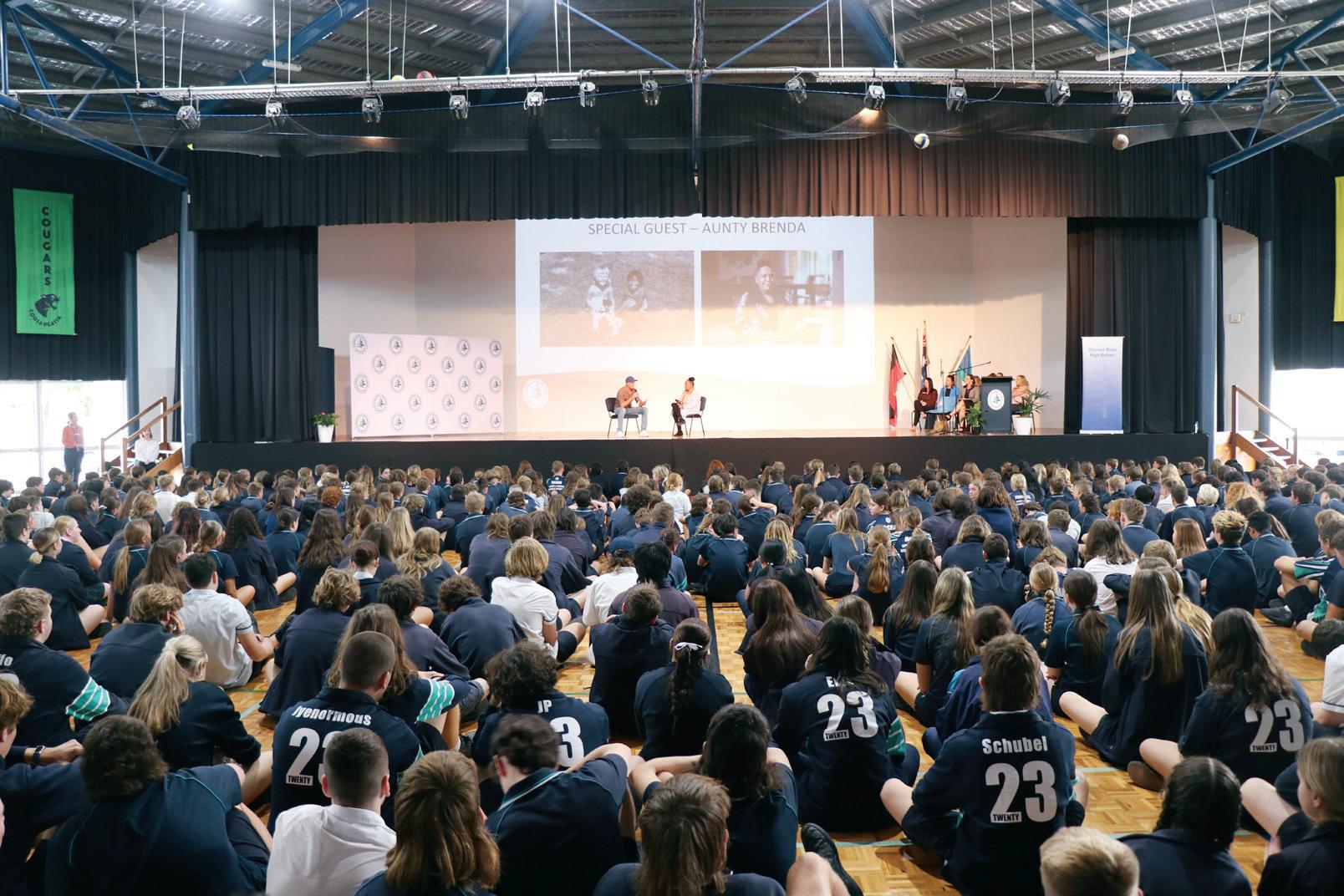
also equipped students with the knowledge and skills to make healthier choices.
Four years ago, ESHS embarked on a journey of philosophical change, moving away from punitive disciplinary measures towards proactive behaviour management strategies. Recognising the limitations of traditional approaches such as suspension for vapingrelated offenses, we sought to understand the root causes of such behaviours. This shift emphasised the importance of collaboration among staff, students, and the community, highlighting the need for a unified approach in fostering a positive school culture.
Initially, punitive measures like suspension were employed for vaping incidents, but they proved ineffective in addressing the underlying issues. This highlighted the need for a deeper understanding of vaping behaviour and its impact on adolescent development. By shifting our
perspective to focus on the addictive nature of vaping and its effects on students, we transitioned towards a more supportive and educational approach. This change underscored the importance of addressing the root causes of behaviour rather than merely punishing the symptoms.
Central to the success of our approach is the collaboration among stakeholders –staff, students, and the wider community. This collaborative effort ensures that interventions are tailored to meet the specific needs of our school community and have widespread support. By involving students in decision-making processes and empowering them to take ownership of their learning and wellbeing, we’ve created a culture of responsibility and accountability.
The Vaping Intervention Program operates across three tiers of support within the
PBL framework. Tier 1 focuses on universal interventions implemented school-wide, including vaping education and awareness campaigns. Tier 2 provides targeted support for students at risk of engaging in vaping behaviour, offering personalised interventions to address their specific needs. Finally, Tier 3 interventions cater to students with the most intensive needs, ensuring they receive the necessary support to overcome challenges.
One of the key strengths of our approach is its emphasis on proactive measures. Rather than waiting for incidents to occur, we actively educate students about the dangers of vaping and equip them with the necessary skills to make informed choices. This preventative approach not only reduces vaping incidents but also fosters a culture of responsibility and accountability among students.
The success of the Vaping Intervention Program is evident in the tangible outcomes observed at ESHS.

We sought to understand the root causes of such behaviours
Incidents of student vaping have significantly decreased, alongside related issues such as vandalism in school toilets. Importantly, students who have engaged in the vaping education program have not repeated their off enses, highlighting the eff ectiveness of the proactive interventions implemented.
As a testament to our commitment to student wellbeing, ESHS has shared its successful strategies with more than 50 schools across Australia. By collaborating with Queensland Health and external providers, we’ve become a beacon for schools nationwide seeking eff ective strategies to address similar challenges. Our dedication to fostering
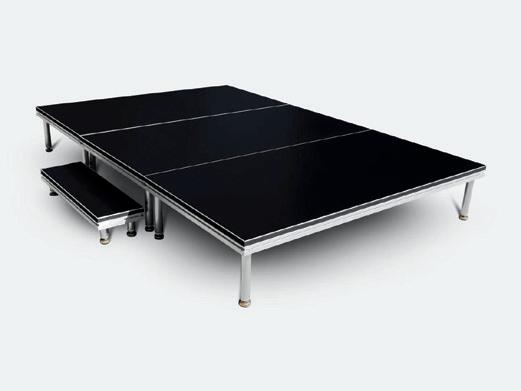
a supportive environment has earned recognition from the local council, further highlighting the impact of our collaborative eff orts.
Elanora State High School’s Vaping Intervention Program represents a comprehensive and innovative approach to addressing complex behavioural issues in educational sett ings. Through collaboration, innovation, and a commitment to student empowerment, we’ve not only reduced vaping incidents but also equipped students with the knowledge and skills to make healthier choices. As we continue our journey towards promoting student wellbeing, we remain committed to proactive intervention and collaborative approaches, believing that together, we can make a positive diff erence in the lives of our students and the wider community.

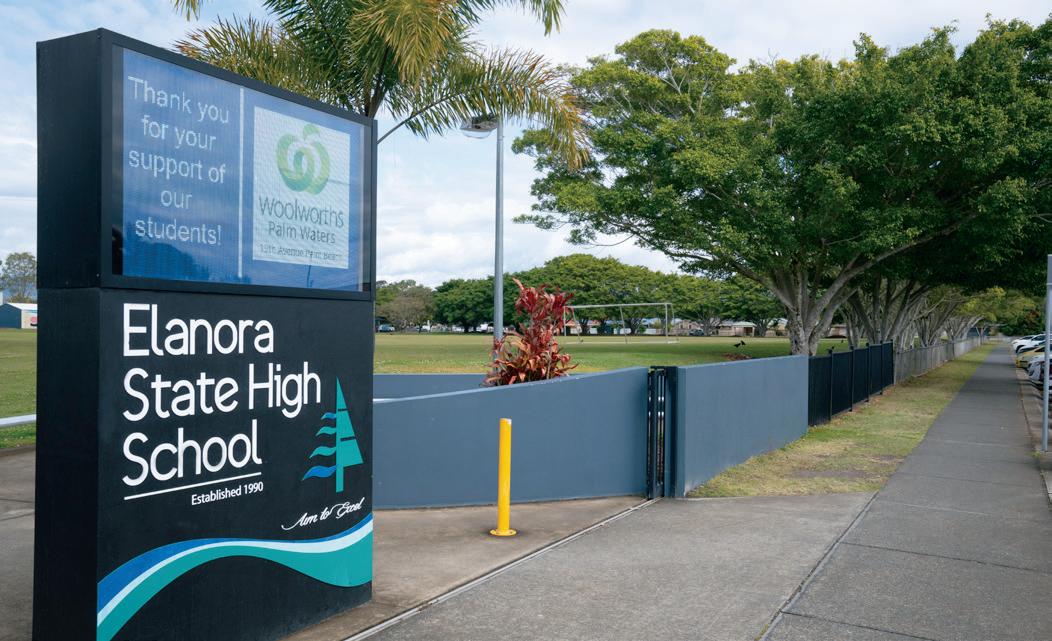


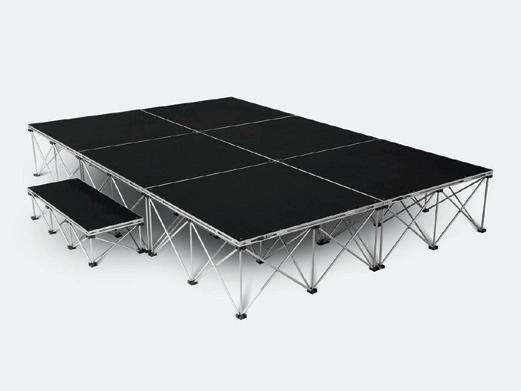

Not all students thrive in the traditional classroom, and not every young person feels at ease in the typical, mainstream schooling model.
The Australian Industry Trade College (AITC) was established with these students in mind and aims to help them find their place at school, and beyond.
First opening its doors in 2006, the AITC was originally a Registered Training Organisation, the Australian Trade College, before transitioning to a school in 2008.
Then, in 2010, the school rebranded to the AITC. 110 young people were congratulated on their graduation that year, and left the school empowered to pursue their pathway in industry.
CEO and Executive Principal Mark Hands has been with the AITC since the beginning, originally serving as Principal at the school’s Gold Coast campus. He said a lot of thought was put into what the school needed to be, and the role it could play in the education and employment landscape.

“We spoke to educators and to industry, and saw that the options available to technically talented, bright minded young people were diminishing.
Thinking seemed to be narrow around what constitutes ‘clever’ and the ‘best’ path to success,” Mr Hands said.
“We are unlike any other Queensland school, and proudly so. We want to elevate
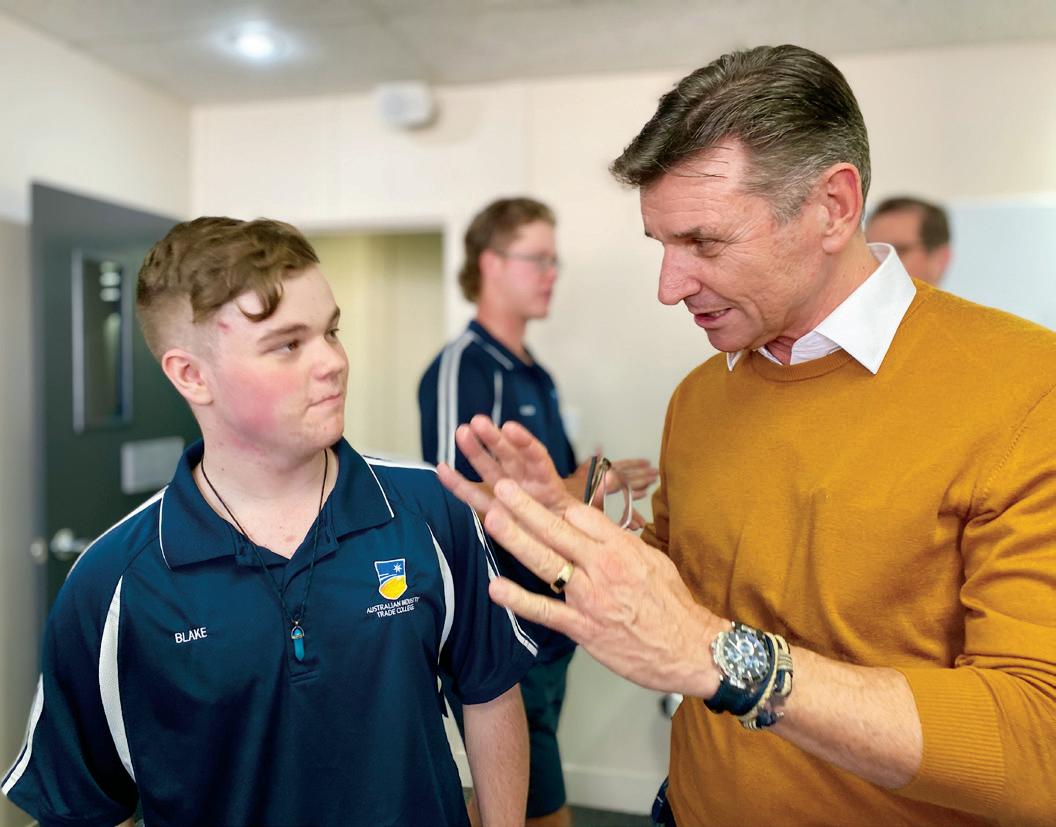
and enhance the value and reputation of industry careers.”
Enrolling students from Years 10 to 12, students at the AITC spend two-thirds of their year outside the classroom, immersed in industry. This time allows them to learn the skills of their trade, as well as practical aspects of working in the industry. Access to industry professionals on an ongoing
basis provides invaluable learning, that cannot be replicated in a classroom setting.
During Education Block, students are back on their school campus. Here they learn from the AITC curriculum, which, Mr Hands said, is informed and contextualised by various industry sectors in teaching, learning and assessment.
“All theory components are delivered in a practical, pedagogical method, with content linked to the College’s values,” he said.
Students in Year 10 complete core subjects English, Maths, History, Science, and Health and Physical Education, with electives including Geography, Civics and Citizenship, Design and Technologies, and Work Studies.
In Years 11 and 12, students study Literacy, Numeracy, and Vocational Education. This will see successful students graduate with Certificate qualifications, making them job-ready as soon as they finish school. For many, the relationship building with people in the industry while they are still at school, gives them a leg up to finding a job, apprenticeship, or pursuing further study.
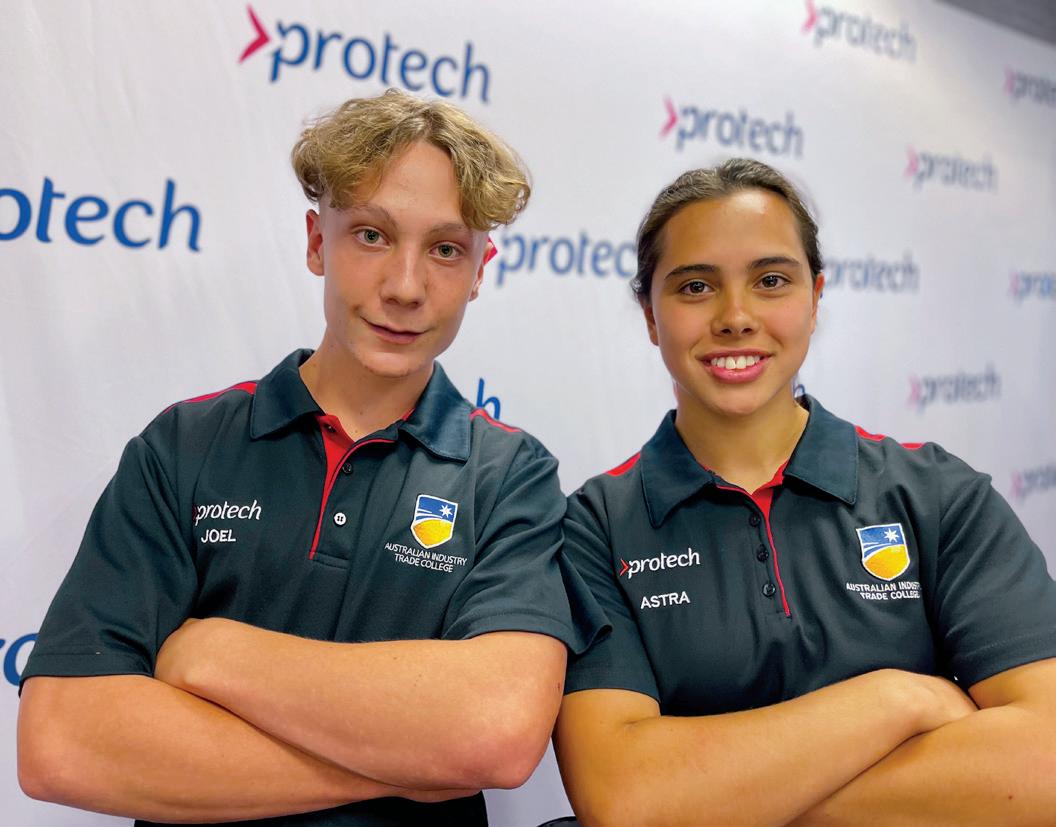

Through all subject areas, the learning program at the AITC focusses on employability skills, work experience, community service and character development. All learning links to preparing students for a job in industry, and uses real-world examples to inform and extend learning. Students are supported to see the practical applications of their learning, so they become interested in and engaged with content in a way they may not have in the traditional classroom.
Mr Hands said the model is all about giving technically talented students the chance to shine. “In some cases, our students may not have found their place in a traditional education setting, and may not have thought that they were intelligent. Once they have found their place at the AITC, these students are absolutely soaring.”
The first step on each young person’s journey at the AITC is the Rookie’s Challenge. This helps students prepare for the world of work, while ensuring they establish a connection to the school, and to their classmates. With students spending much of their time off-campus and in industry, fostering a sense of belonging is important.
“We’ve always told our young people that character counts and mindset matters,” Mr Hands said.
The program has three important phases, and allows young people to discover their pathway forward. The first phase is Be Prepared, a twoday orientation at the student’s chosen campus. This helps to familiarise students with their
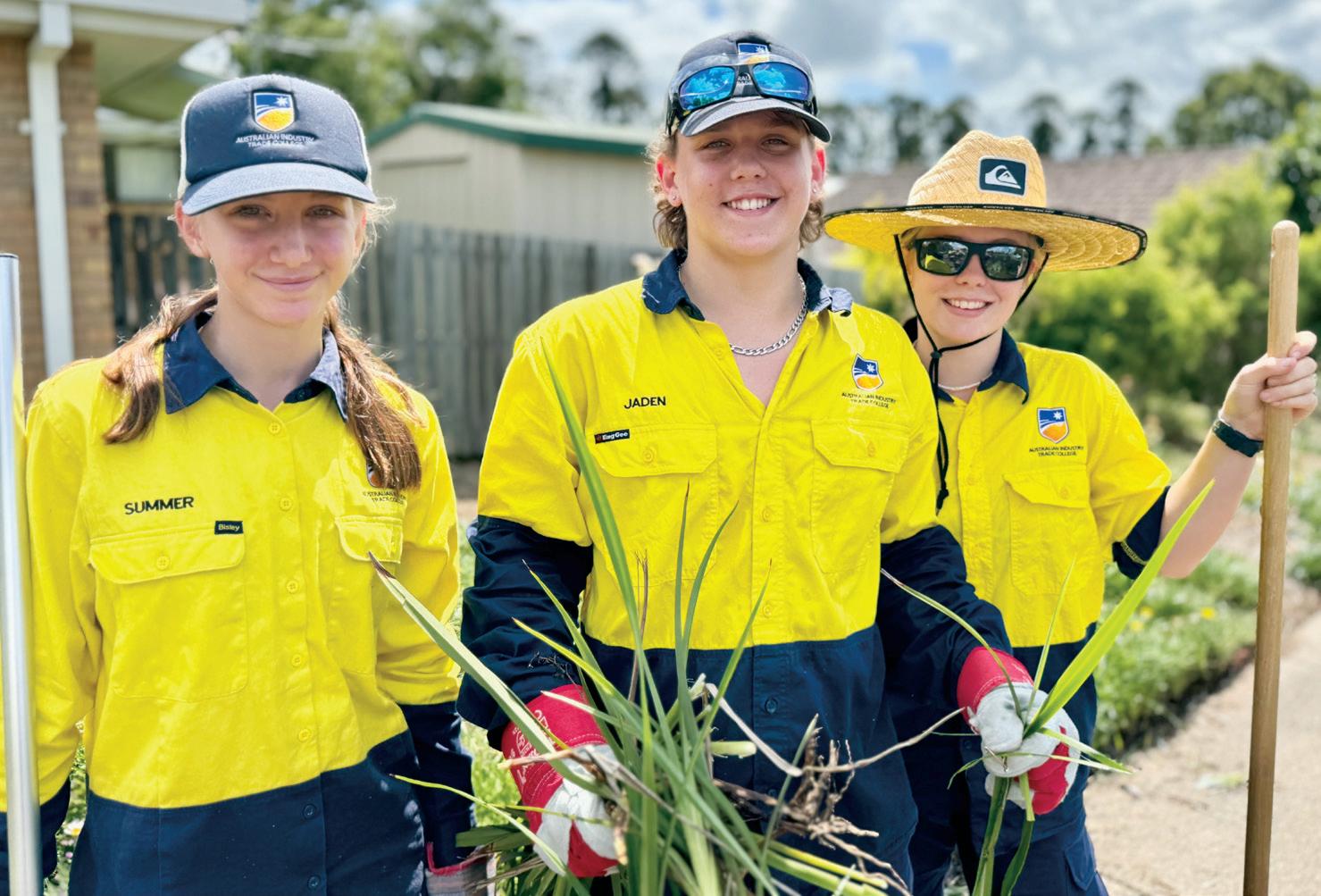
campus, and lets them meet some of their new school mates.
Second, is the Rookie Challenge, a three-to-five-day adventure learning experience at Emu Gully Adventure Education. New entrants must complete the challenge as part of their induction to the AITC. This experience will help students develop their decision-making skills, independence, and personal and social responsibility.
Be Ready Training is the final step in the Rookies program, and is completed during the student’s first term at the college, within their industry weeks. Young people experience a range of industry activities designed to expand their view of the world of work. Activities are planned to prepare students for their first work experience, and will include workplace visits, community service opportunities, white card safety card, TAFE training, and careers advice.
Now in its sixteenth year, the AITC has about 1200 students across six campuses. A comprehensive list of trade apprenticeships are available for study, including baking, electrical, landscape tradesperson, arborist and more. Not just for builders, plumbers and electricians, then, any student looking for an alternative to the mainstream schooling model can find their place at the AITC.
Currently in a growth phase, the AITC has a clear vision for the future. “In 2018, we launched our 10-year strategic plan with three distinct phases identified: get fitter (2018-2020), measured growth (2021-2024) and scale
up (2025-2028). Beyond building capacity and expanding our reach, phase one saw us invest in clearly defining our identity,” Mr Hands said. “The Strategic Plan shares how we will bring our purpose to life, and captures our intent, and the actions we will take to make an impact in the world.”
Mr Hands, though, said the journey has not always been easy. “The AITC had to overcome a lot of challenges, in the early days, and we often questioned if
it would remain open,” he said. “But now, we are thriving.”
The approach to learning taken by the AITC demonstrates that alternative education pathways are a sensible option for many students.
“Our young people when they learn in a hands-on way, can see that they are technically talented. Helping these students reach their potential is why the AITC was founded, and watching them thrive is deeply rewarding.”
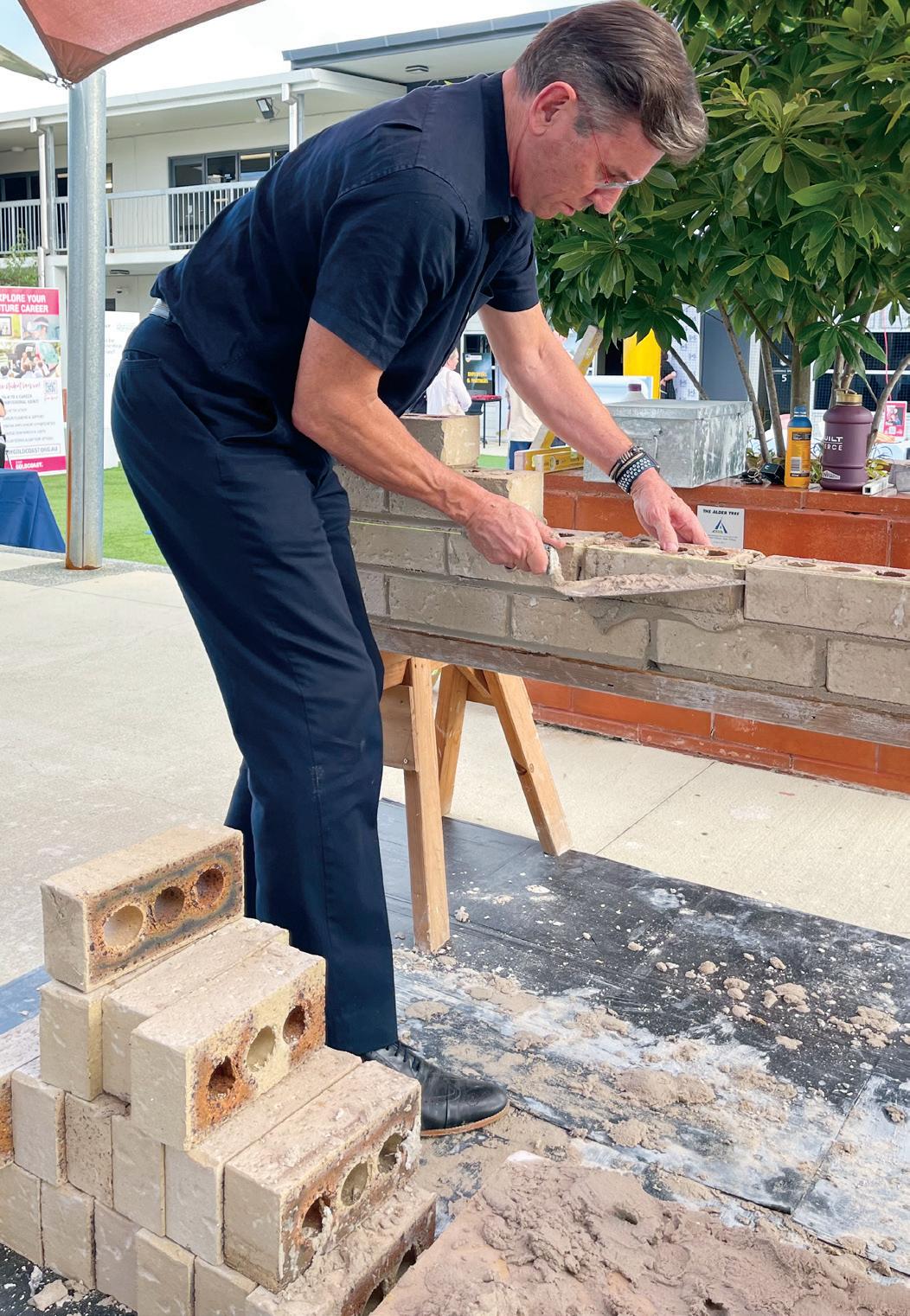
Schools have a significant part to play in environmental education, including in waste management.
Through leadership by example and explicit teaching, children can learn about environmental responsibility and form lifelong habits that help to minimise waste, reducing their overall environmental footprint.
There are a number of sustainability programmes available for schools nationwide. Each state has appropriate local providers that can tailor programmes to your school and context, and there are a range of related topics available to explore. Providers have linked their programmes to the national curriculum, and such programmes are also a great way to explore concepts such as citizenship, responsibility and community building.
Educators may also wish to introduce waste reduction topics into the classroom themselves in practical ways such as separating waste into landfill, recycling and organic waste, which normalises the process of waste management for children. Teachers and schools might also demonstrate and model eco-conscious consumption by utilising recycled materials in lessons and choosing products with low carbon footprints or ecofriendly aspects.
Waste management in the classroom should reflect wider school practices. Schools should monitor their waste-systems and identify areas where refuse can be diverted from the landfill. This should extend beyond the obvious rubbish items, and
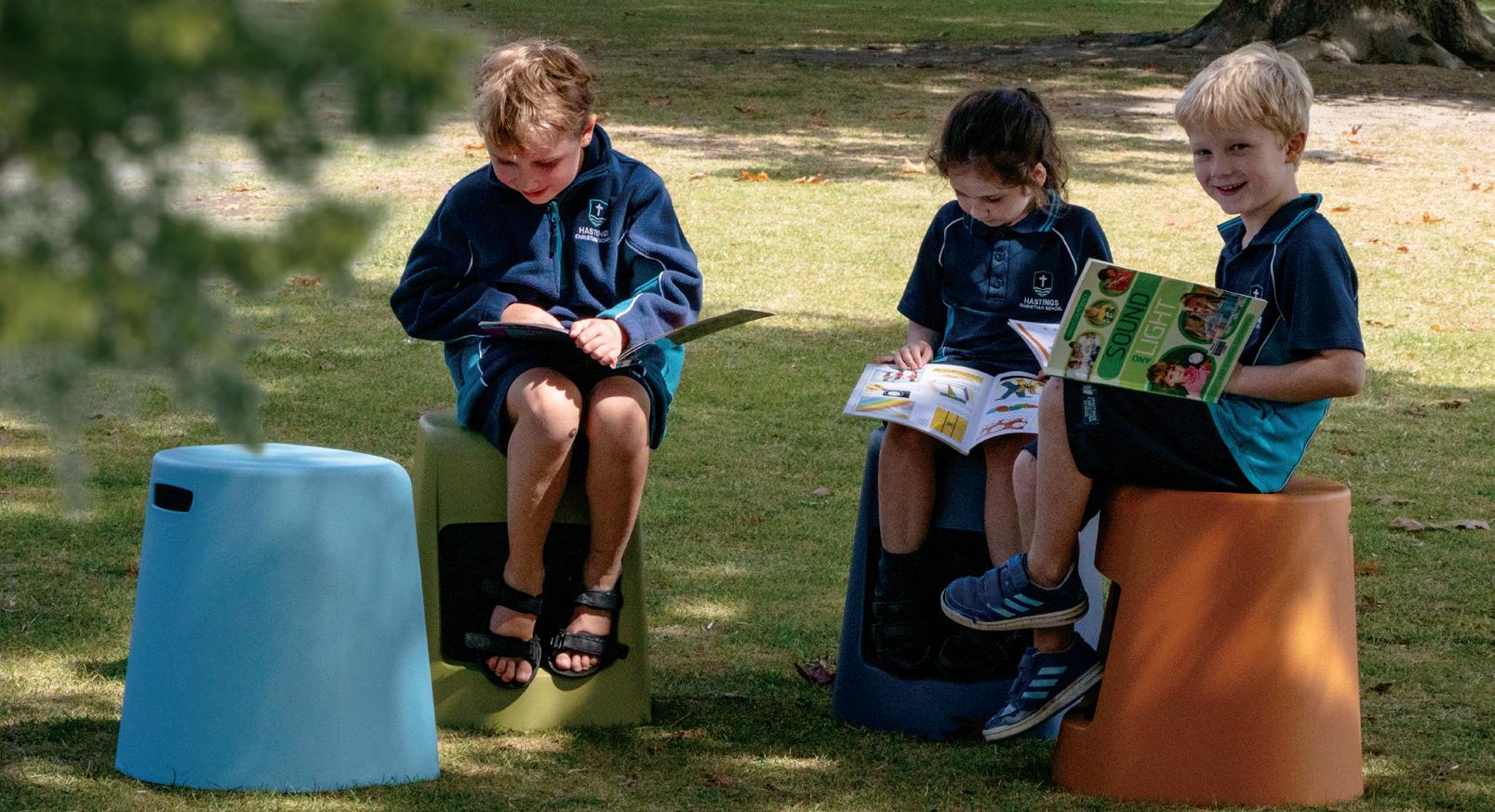
the sustainability of furniture, whiteboards, appliances and other items should be considered.
Jaime Hallett from Sebel said considering a sustainable approach is important across all industries, as we all need to do our part for the future.
“Sustainability is especially important in schools so students can understand the impact that they have on the environment. Teaching students
at an early age that there are many ways to create a better future for them is essential.”
Modelling environmentally conscious behaviours to students is important. Ms Hallett said this should extend to choosing furniture items for schools, and disposing of them when they are no longer needed. “With sustainability becoming a growing requirement in many schools, it’s important to inquire with their

suppliers who can help them work out the best option for them. Purchasing quality products that will last the test or time and will not need to be replaced often is a great way to be more sustainable and cost friendly for the school.
“There are many opportunities for schools to reduce environmental impact when disposing of their furniture,” Ms Hallett said. “By donating used, but still in good condition furniture, to other schools or groups in need they can reduce the waste that goes into landfill and extend the life of the product for another user. For plastics, some companies will offer a disposal service that includes recycling the product. This is another great option that can help with reducing environmental impact.”
Lindsay Stead from Astra Street Furniture said reducing waste with recycling should extend beyond everyday items, and include large items like furniture. “Recycling in furniture manufacturing refers to the process of taking used or discarded materials and transforming them into new furniture products. This can involve breaking down old furniture and repurposing its components, such as wood, metal, or fabric,” Mr Stead said.
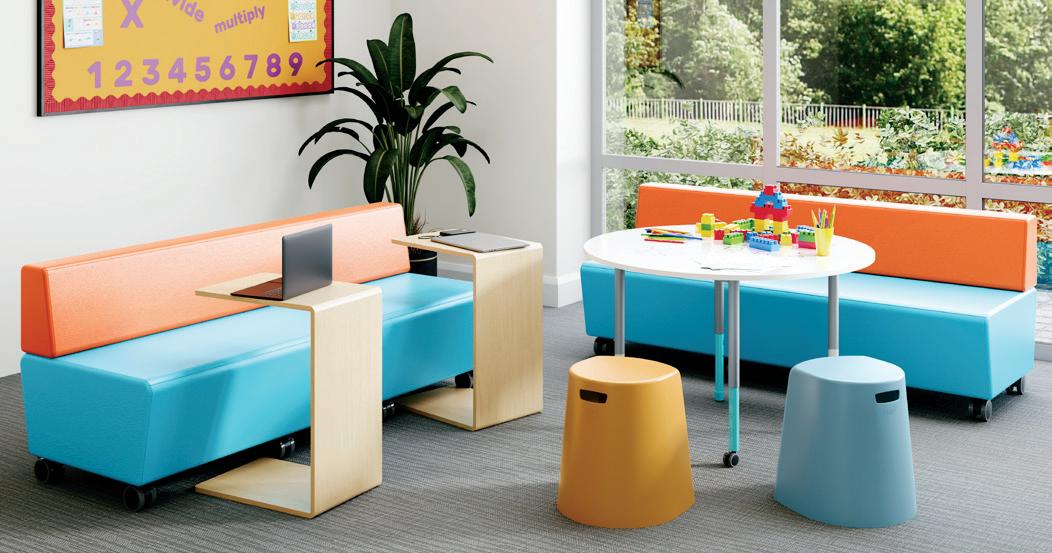
“Recycling in furniture manufacturing can also involve using materials that have been recycled or repurposed. It may include reclaimed wood from old furniture pieces or recycled plastic from discarded products.
“The goal of recycling in furniture manufacturing is to reduce waste, conserve natural resources, and minimise the environmental impact of furniture production. By using recycled materials, furniture manufacturers create sustainable products that are both environmentally friendly and cost-effective.
“A product’s carbon footprint can be measured by considering recycled content, repurposing, lifecycle expectancy, carbon star rating and carbon content.”
S e b e
l
M
An effective and well-established way to eliminate waste is to conduct a waste audit.
Schools may choose to get an external professional in to conduct a waste audit, or they may undertake one themselves. A waste audit generally involves collecting a representative, snapshot sample of the waste at your school which generates a data set that can be used to minimise waste. There are various online resources about how to conduct a waste audit. Schools wanting to teach students about waste management may choose to involve them. Choosing an appropriate day and time to do a waste audit may be specific to your school’s needs and desired outcomes,



and the frequency of waste audits. However, each presents a learning opportunity for students to learn about data collection as well as identifying which waste streams can be diverted.
For example, a waste audit may reveal a hotspot for certain kinds of refuse. Perhaps the bin beside the library has an overabundance of paper recycling. One waste solution could be as simple as installing the right kind of bin, like a paper recycling. Another simple initiative could be providing separated bins in key areas, or clear labelling to ensure the right items go into the right bins.
By doing a waste audit, schools can target areas where waste management can be made more efficient, sometimes with surprisingly low cost or effort. Subsequent waste audits can

show progress, improvements or further areas of need. Simply providing the correct bins in the right places could be a huge benefit. Another very easy method of diverting waste is to channel food waste into a circular system within the school, for the benefit of the community. This diverts waste from landfill and saves resources that would otherwise have turned into harmful greenhouse gas. Using food scraps to compost and grow food presents several learning opportunities for children. From the science of decomposition to the process of converting sunlight into energy, there are a myriad of learning opportunities to engage children in waste reduction, which benefits the planet both immediately and into the future.







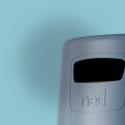
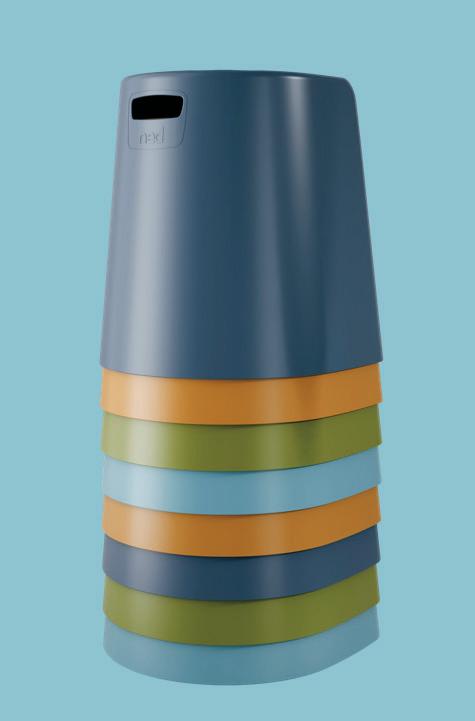
The library is the heart of any school, providing a calm space for creativity, collaboration, and learning.
A great school library is a must, and the Australian Library and Information Association (ALIA) has warned that if libraries are not prioritised, literacy levels and student well-being could be negatively impacted.
“If we are serious about addressing literacy levels, student wellbeing, and support for teachers we need to be serious about restoring school libraries,” ALIA CEO Cathie Warburton said. “There is clear evidence that school libraries improve student outcomes and student wellbeing, and yet across Australia, we have seen a steady decline in the staffing and resourcing of school libraries, particularly in the public sector.
“School libraries operate as safe spaces for young people and promote and resource mental health and wellbeing initiatives, including reading for pleasure. All Australian students should be able to have a space to enjoy reading, should be able to borrow their favourite author, should be able to access the resources they need for their studies, and understand how to find the resources they need for life.”
With this in mind, ensuring your school library is both functional and aesthetically pleasing will ensure the space is well-used and well-loved by teachers and students.
By investing in functional and inviting furniture options such as low-level seating, cosy reading nooks, and modular couches and ottomans, schools can create areas that accommodate various activities. These flexible setups

encourage individual study as well as space for collaboration. Additionally, mobile library shelves can allow library staff to highlight books and resources that may be relevant to student learning throughout the year.
To get the best out of a library space, Annabel Parletta from Resource Furniture recommends spending some time in the current library to closely observe the space, the students, and the staff. “This allows you to identify potential areas for improvement, such as enhancing accessibility to specific book collections, optimising study areas, streamlining returns, and identifying high-traffic points.
“Observing the library’s unique characteristics and any elements that might impact design ideas will help to create an engaging and inspiring library,” Ms Parletta said.
“Picking furniture that will suit the space is key. Large comfortable chairs for quiet reading, desks and chairs for quiet study and booths for group work and activities should all be considered. Keeping shelving mobile will help with flexibility and give the option of creating different areas in the library for particular lessons and study times.”
A diverse collection of books is another cornerstone of an inspiring school library space. Ideally, schools should focus on curating a collection that covers various genres and authors, catering to different age groups and interests. As important as the books themselves, an IT system that is easy to navigate for both students and staff will ensure quick access to resources.
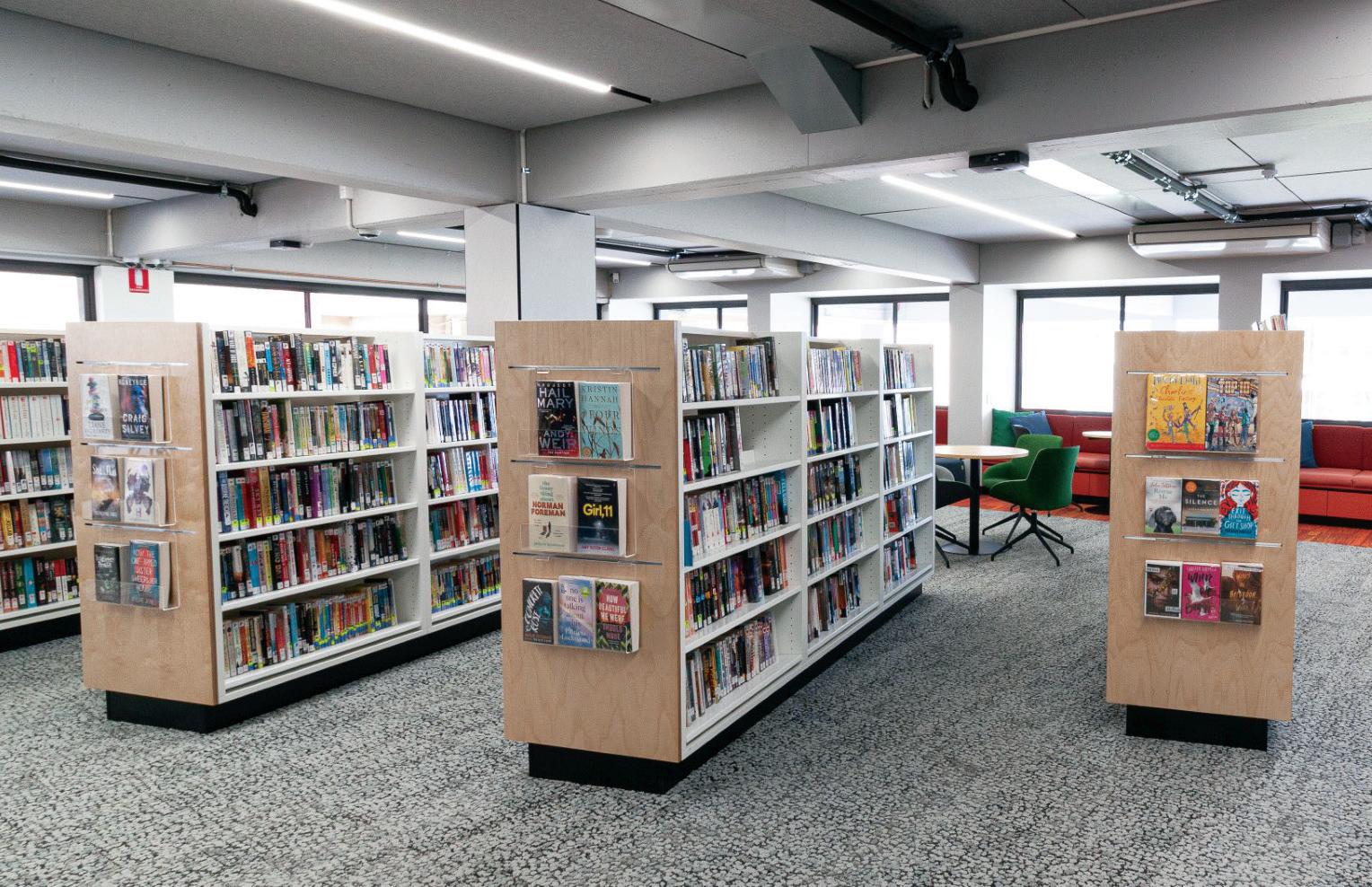
In today’s digital age, libraries encompass more than just books. Interactive spaces incorporating digital resources such as online databases, e-books, VR headsets, and educational platforms play a crucial role in enhancing learning. This is often housed in the library, and must be managed be library staff.
AJ Johnston, from Accessit Library said a library management system should help library staff open the world to their students, and reduce the time a librarian spends on administration.
“A system which links with the school’s other systems can help make borrower sync and communication seamless. A good system should also automate daily tasks like managing overdues, so librarians get the time back to take a lead in learning.”
And while books are at the heart of the library, Mr Johnston noted that the literacy journey is different from student to student.
“Some may start with watching videos that capture their passion for a topic, which leads them on a journey to reading books or listening to audiobooks that keep them hooked. It’s about having the right media to connect with people and get them engaged in the library and learning.”
Schools are always heavily investing in assets, and a simple spreadsheet is no longer good enough to keep track. “Too many schools don’t realise how much they have invested in books let alone the other assets. This means they often aren’t even insured correctly,” Mr Johnston said.
“Leading library management systems can keep track of all assets in one place, from school drama costumes and musical instruments to school sports equipment. The ability to include the price paid and automatically include depreciation in the asset’s records is invaluable.”




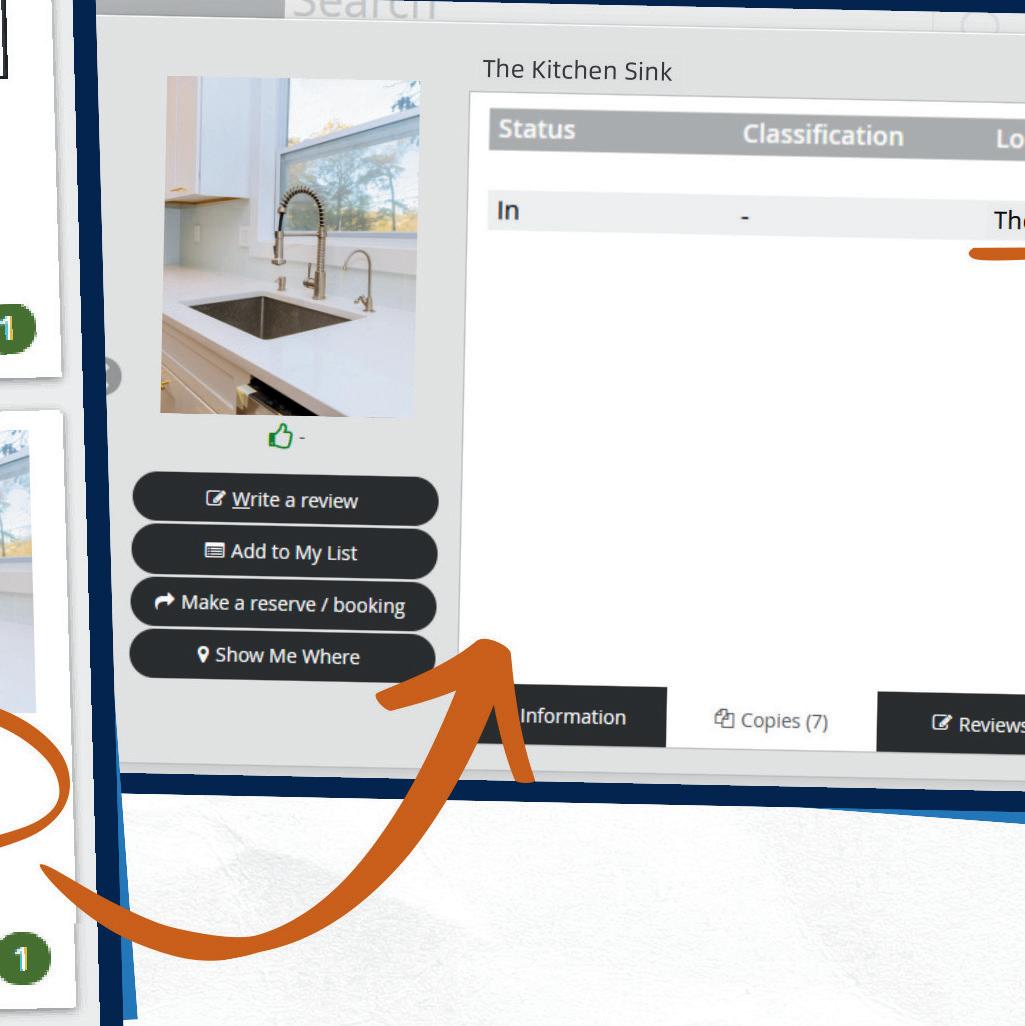
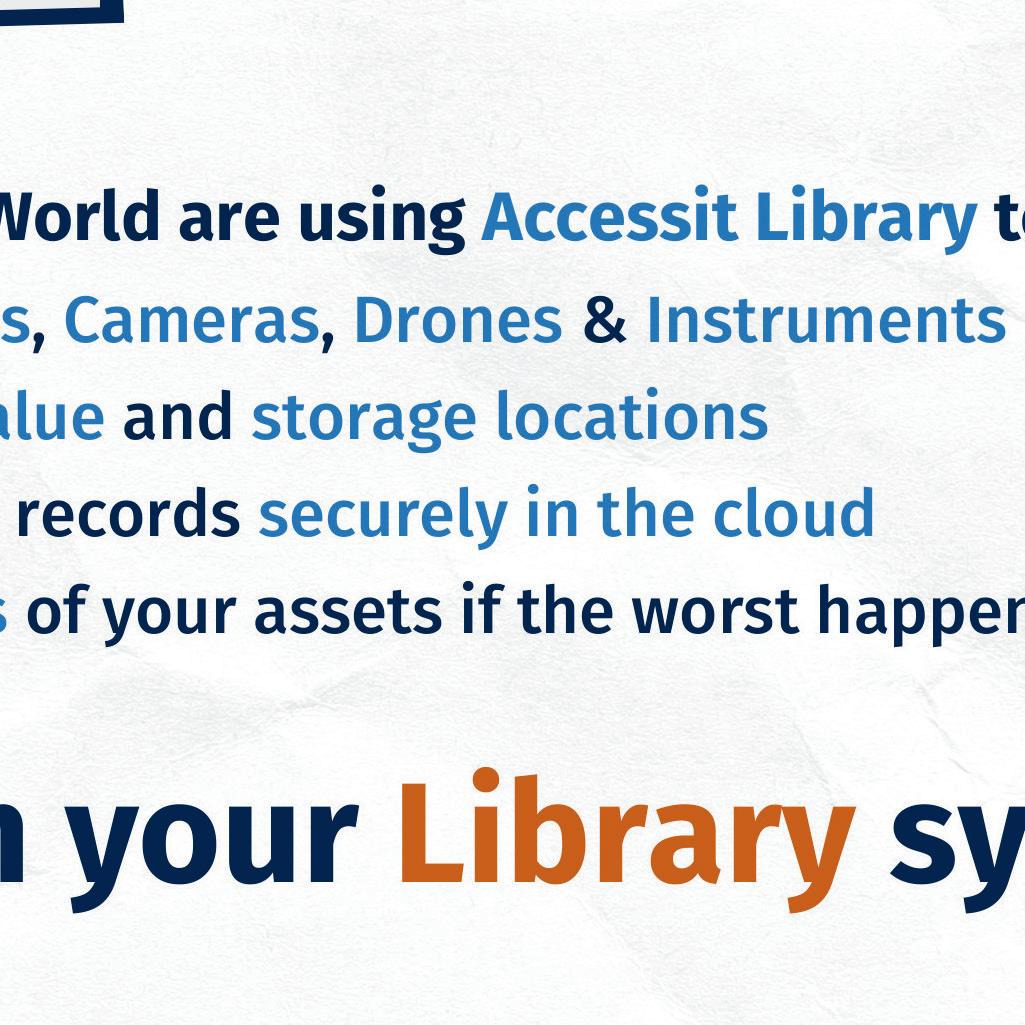



Recently, Resource Furniture worked with Woodcroft College on the fit out of a new library, in partnership with architects Swanbury Penglase.
“We have worked with Swanbury Penglase on other school library projects and provided a similar service which included assisting with working with the book collections and space planning,” Annabel Parletta from Resource Furniture said.
Mobile shelving was chosen to run through the centre of the
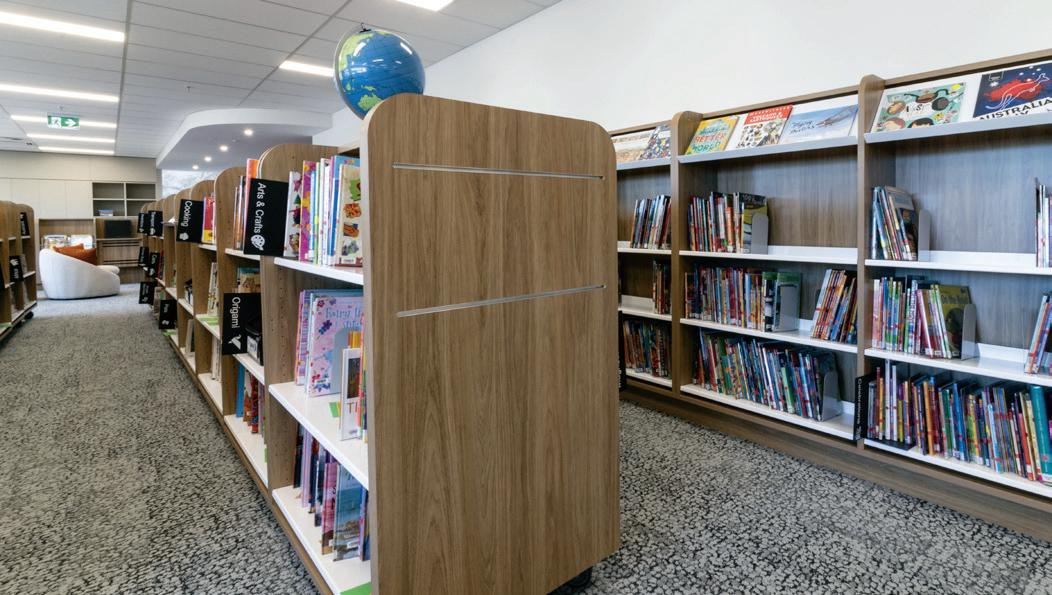

library, providing flexibility for the space now, and into the future. Custom height shelving was also created, to allow a clear line of sight through the library and to ensure windows were not obstructed.
“The design itself was fairly straight forward, but the architects did request that the tops of the shelving units had radius corner tops to add a different feature to the units. This created a bespoke aesthetic to the final library design,” Ms Parletta said. Woodcroft College Junior School Librarian, Michelle Guy, said after shelving was chosen, the
school talked with Resource Furniture to fine tune placement of shelving. Where possible, shelving was adjusted to ensure the entire collection would fit.
“We have had a very positive response to the library fit out from both staff and students,” Ms Guy said. “The books fit nicely on the shelves and contrast well against the light shelving, making them easy to locate. The colours chosen also work well in our library space. A favourite place in the library is the reading corner. Students love to sit here and read at lunchtime. Games are also popular in this space -- there are drawers underneath where we can store these.”
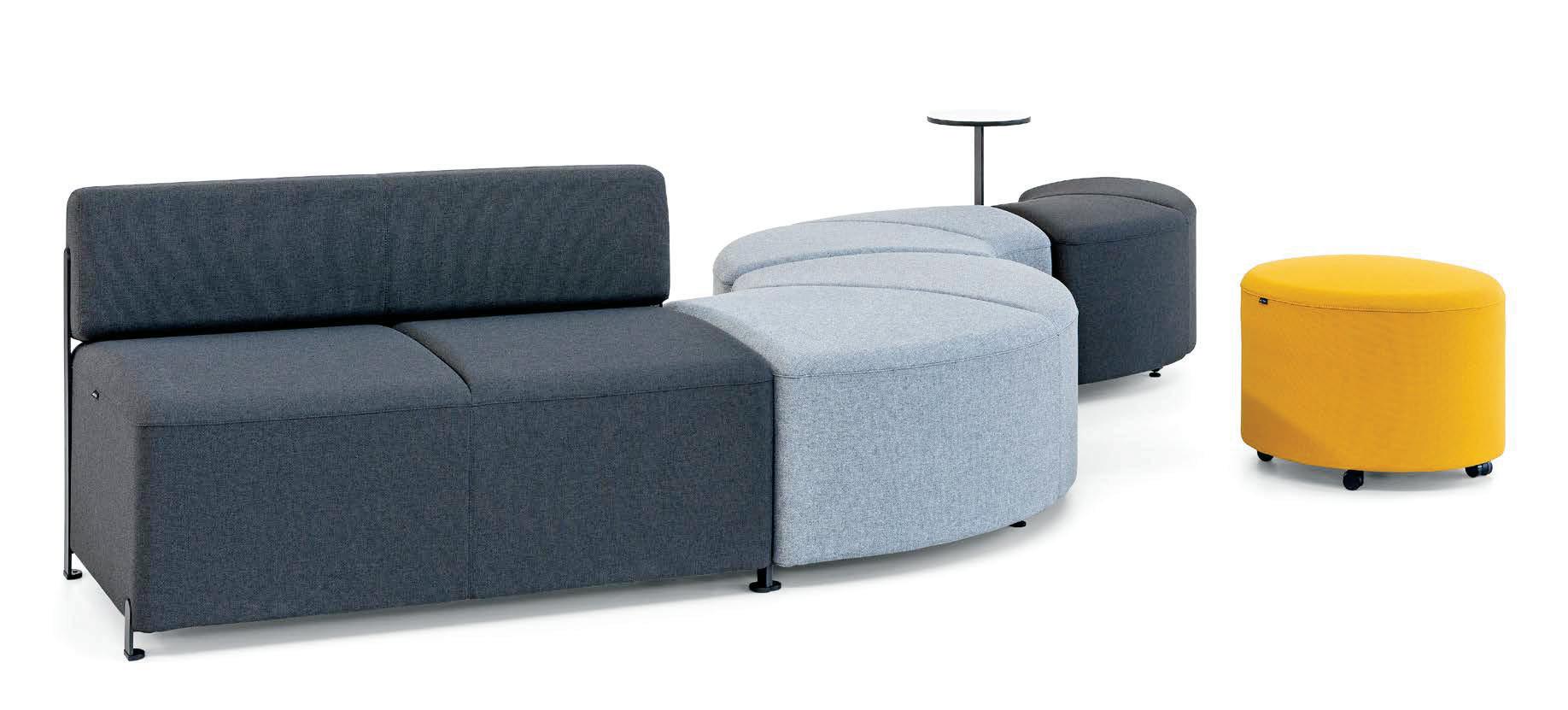






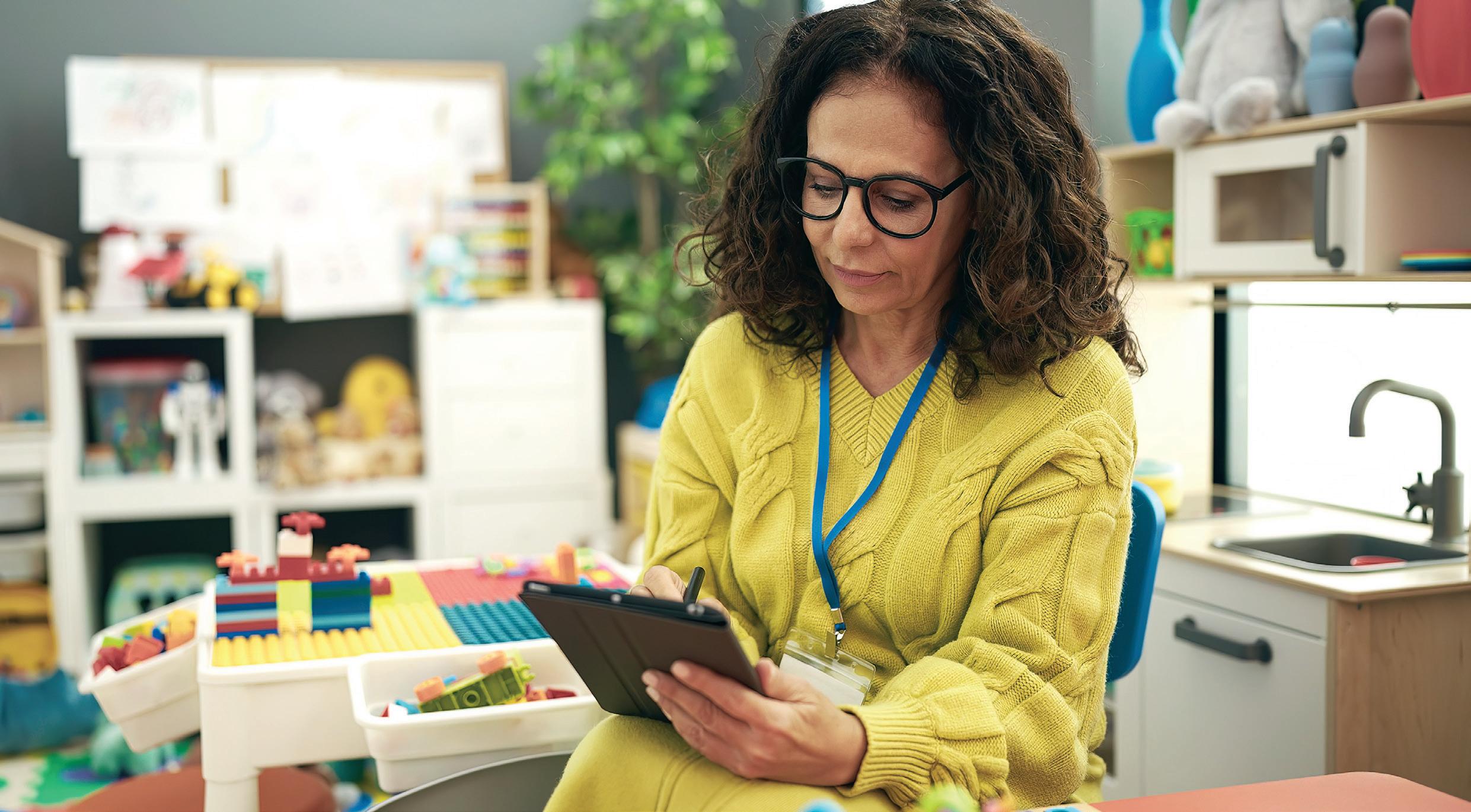 By Gemma Easton, Editor
By Gemma Easton, Editor
While teaching and learning is the core business of schools, there is a lot going on behind the scenes to facilitate this.
Managing enrolments, school finances, timetables and teacher schedules, communication with families, as well as maintaining compliance with reporting and necessary accreditations can become overwhelming. Often, several staff members or administrative departments will need to collaborate, sharing information and data.


Ensure your system is providing the best value for money
Most schools will have a school management system to manage some or all of these tasks. School management systems are flexible and adaptable, and can often be customised to your school’s specific needs. Multi-campus, stand alone,
large and small schools can all be accommodated.
It is worth considering if your current system still suits your school’s needs. While your current school management system may have been fit for purpose at the time, expanding
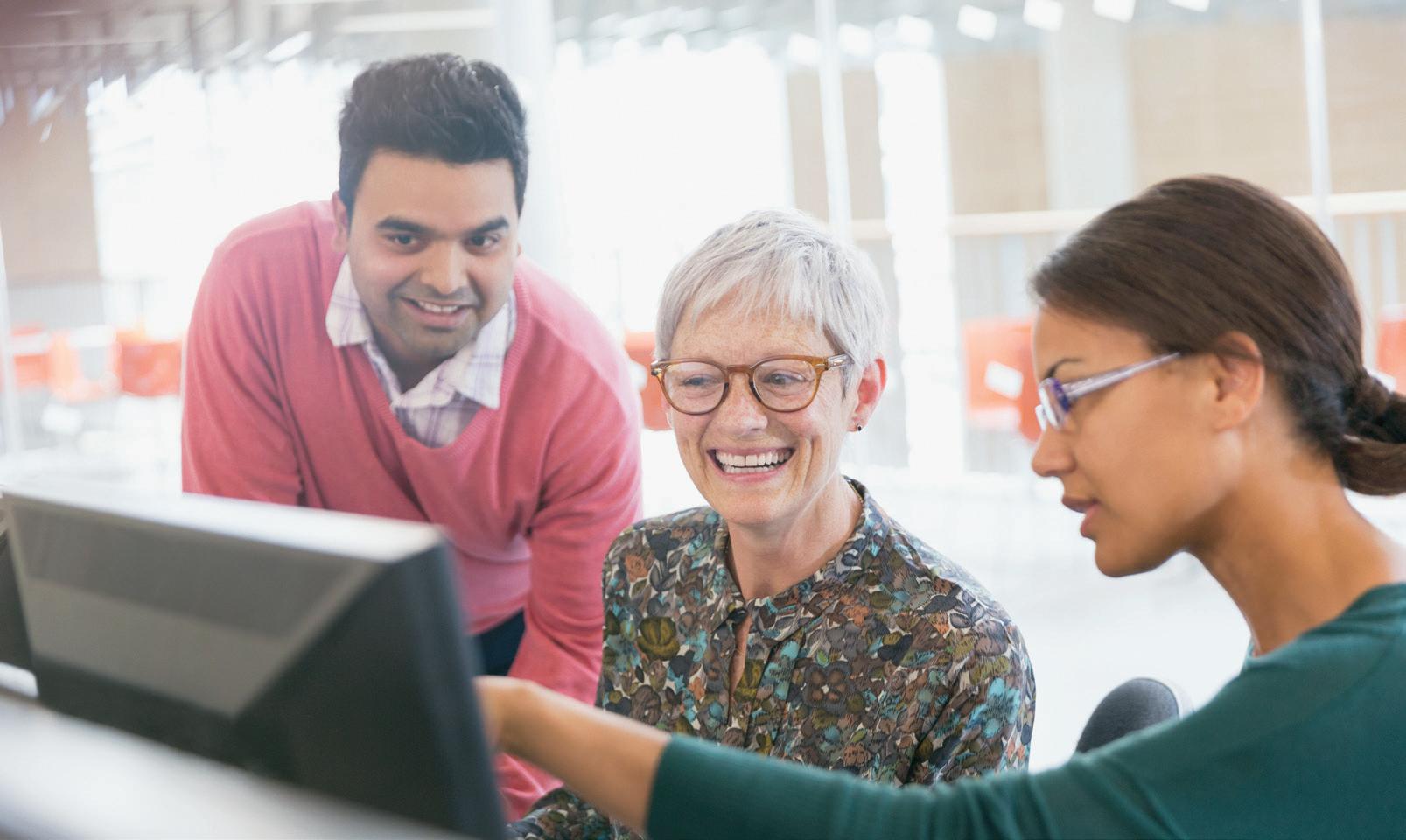
enrolments, more teachers and administrative staff, the addition of an extra campus, a transition to co-educational, or the addition of new year levels may mean your school has outgrown it.
School management systems are constantly being updated with new features, and technological advancements are increasing their capabilities. Consider if your current system offers all the features your school wants or needs, and if the system is user-friendly.
Similarly, think about whether you might be paying for features that your school does not use. It may be useful to explore the market and find out what options are available, to ensure your system is providing the best value for money. A conversation with the support staff of your current school management system could ensure you are using your current system to its full potential.
Changing school management systems may seem like a daunting prospect, with countless important, irreplaceable documents and data being moved. It is important to work with both your current and new system provider, to ensure a smooth transition. Ask for an indicative timeframe of how long the transition should take.
Think about the best time to initiate the migration. This may be during a holiday period, though some staff need to be available to support the move.
Adequate time must also be allowed for school staff to be properly trained to use the new system, so the impact to teaching and learning, and the effective operation of the school, is minimal.
Communication with parents and students is also important. Make sure your whole school community knows when the transition is happening, and if there will by any down time on access to school data, or if alternative communication or administrative arrangements will be implemented on an interim basis.
Parents and students will need to be educated on how to use the new system, and will need to be supported by staff through the transition.
Robert Radley, EGM, Sales –Australia, New Zealand and APAC at FACTS, said cybersecurity and data protection should be
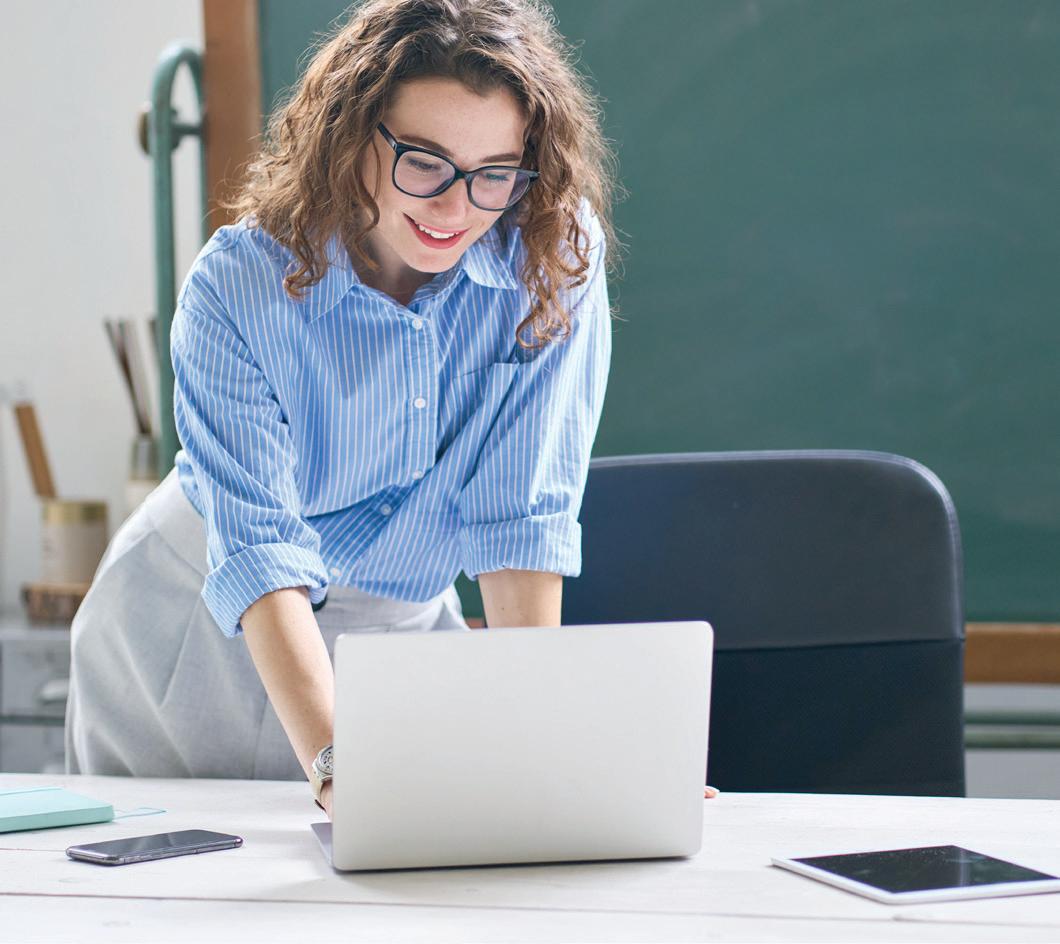
front of mind when selecting a school management system; a fully hosted solution is the best option to keep your school’s systems and data safe.
School management solutions should also offer integration with the other systems school’s use, including administration and learning management systems (LMS), admissions, enrolment, tuition management and library applications, timetabling, communication and financial management software, and more.
“An open API library where
schools connect to their platform of choice with their existing software solutions, empowers them to provide a seamless whole-school experience with more time to focus on the things that matter,” Mr Radley said.
Data collection, user access and permissions, and financial reporting and analysis are areas where customisation is key.
“Schools capture and hold a plethora of confidential personal data which should only be accessible to certain roles and users. Make sure




your management system supports your school to securely collect, store and analyse the information you need across the entire student lifecycle –from enrolment to attendance, timetabling, assessment and reporting, graduation and alumni management.
“Functionality allowing administrators to send bulk messages to the entire school or specific year levels, classes, sports teams or subject groups supports targeted communication rather than a scattergun approach – a godsend for busy families. It goes without saying that school portals, event calendars and other assets must be mobile friendly, allowing users to consume information on the go,” Mr Radley said.
“Importantly, school management solutions need to reflect complex family relationships and manage communication accordingly. They need to customise communication preferences to capture the information that should be shared (and not shared) with different caregivers, supporting schools to navigate this sometimes-tricky landscape with confidence.”




































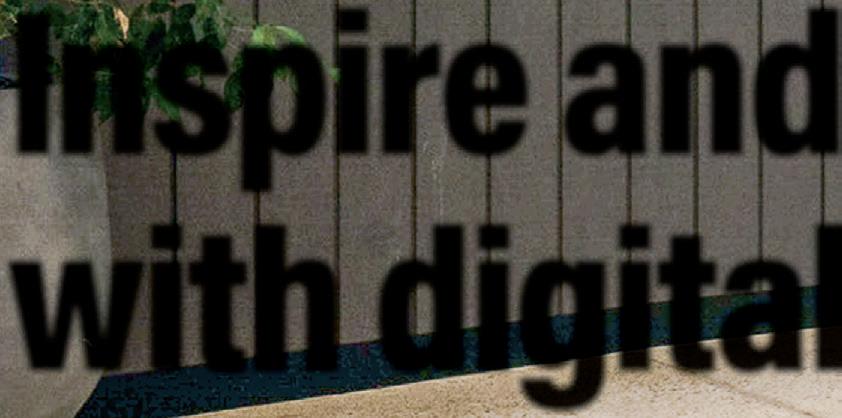

 By Sarah Drysdale, COO and Head of Product, CommBox CommBox
By Sarah Drysdale, COO and Head of Product, CommBox CommBox
Digital Signage is revolutionising communication within educational environments, providing a dynamic and engaging way to share information, spark creativity, and motivate students.
By integrating technologies like interactive and commercial displays with digital signage applications such as CommBox Signage, schools are empowered to create a connected and vibrant educational atmosphere. Here’s why digital signage is a critical asset schools and how it can enhance students’ school experiences.
Digital signage offers a highly effective and efficient method for communicating with students, staff, and visitors. Unlike static bulletin boards or paper notices, digital screens can be updated instantly, ensuring that everyone in the school has access to timely and accurate information. This capability is crucial in a busy school environment where events, schedules, and announcements are constantly changing.
The Intelligent Display and the CommBox Classic Interactive
touchscreens by CommBox allows schools to showcase a variety of content, from daily announcements and lunch menus to emergency alerts and event schedules. These devices support multimedia content, including videos and animations, making communications more appealing and digestible for students who are native digital users.
Digital signage’s versatility supports a broad spectrum of creative expressions. Schools can use digital screens to display
student artwork, digital projects, and school productions, giving students a platform to showcase their creativity. This exposure boosts students’ confidence and encourages them to engage in creative activities.
Additionally, the ease of updating digital displays means schools can regularly feature new student works, keeping the content fresh and relevant. This constant renewal of displayed content keeps the school environment lively and inspiring.
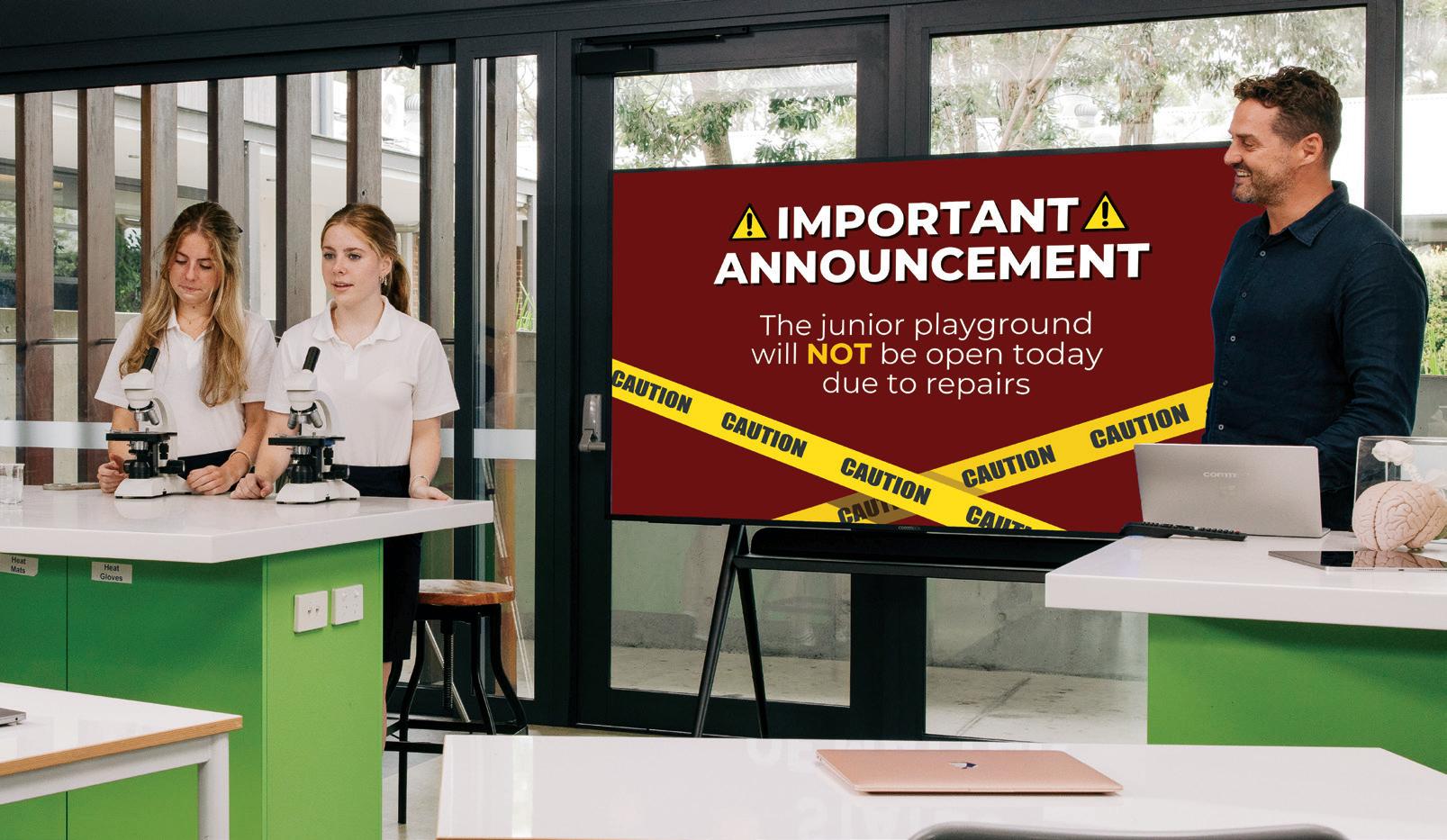

Digital signage plays a pivotal role in motivating students by recognising achievements and celebrating success. Whether it’s highlighting academic achievements, sports victories, or extracurricular accomplishments, seeing their efforts publicly acknowledged boosts students’ morale and motivates them to continue striving.
Moreover, motivational quotes, success stories, and alumni achievements displayed on digital signage can serve as daily inspiration for students. CommBox’s digital solutions provide an excellent platform for such motivational content, with clear displays and easy content management system that allow schools to regularly update their motivational messages.
Using digital signage is a marker of a modern and forwardthinking educational facility. It aligns well with the digital skills crucial for the future workplace, thus preparing students for the technological landscape of the modern world. Schools equipped with stateof-the-art CommBox Displays not only stand out but also attract prospective parents and students, as well as staff looking for innovative learning and teaching environments.
CommBox Digital Signage is a cost-effective alternative to traditional printed materials. By reducing the need for printed flyers, posters, and newsletters, schools can cut costs and minimize their environmental impact. Digital signs require
an initial investment and minimal maintenance, but over time, they prove to be economical by cutting recurring costs associated with printing and paper use.
CommBox Digital Signage is straightforward and easy to use. It takes only 3 minutes to get started and comes with a host of built-in templates that make content publishing simple.
User-friendly and featurepacked, you can use CommBox Signage on any existing screens across the school. To get started you don’t have to buy new screen hardware.
Are you already a CommBox school? Did you know that CommBox Manage, our remote device management
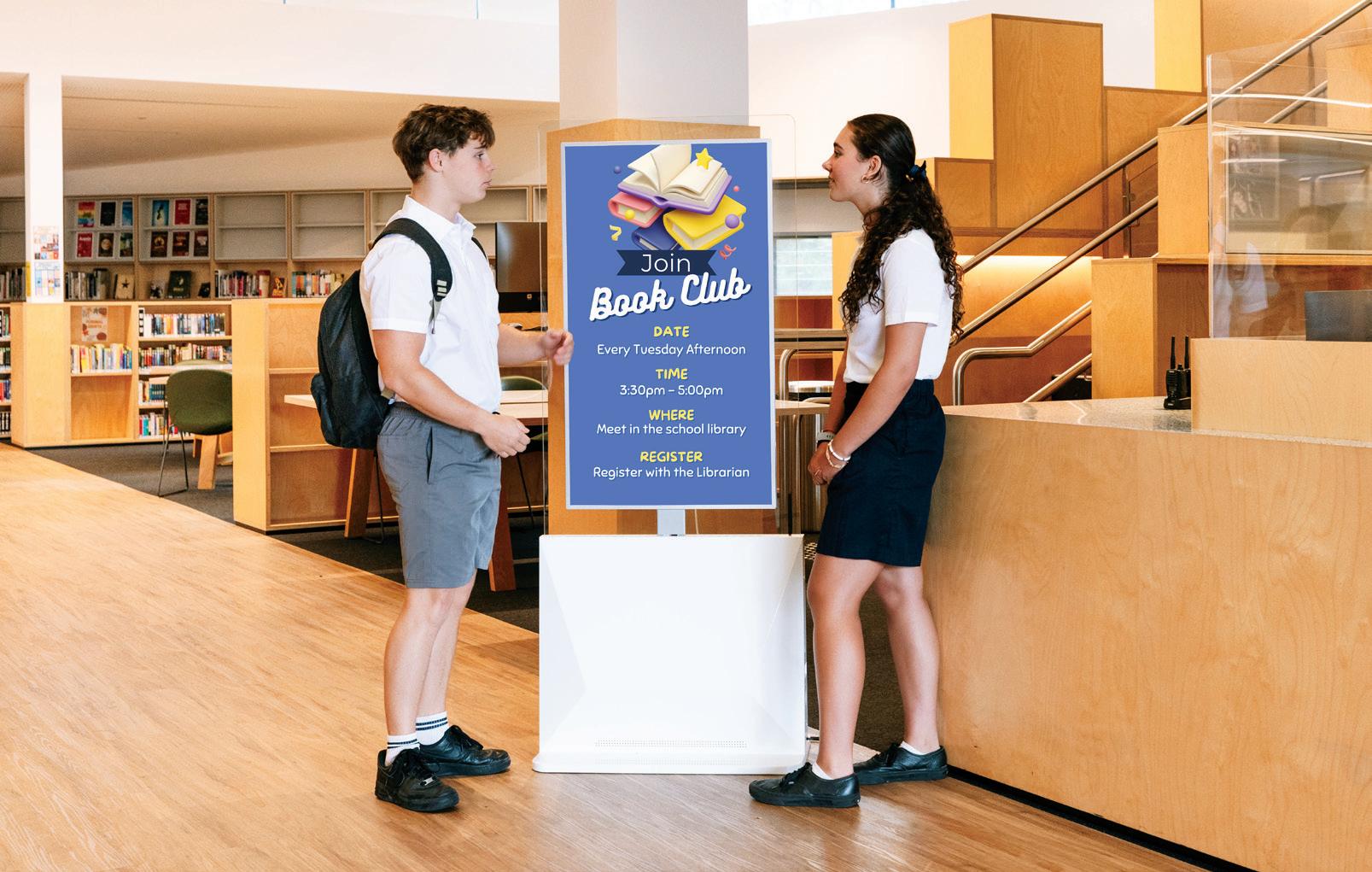
software, includes simple signage solutions? You can start communicating today, for more information reach out to the Customer Success Team.
Incorporating digital signage in schools by CommBox offers numerous benefits. It enhances communication, boosts student engagement, inspires creativity, motivates students, and supports a modern learning environment.
By adopting this technology, schools can not only improve the educational experience but also prepare students for a future where digital literacy is essential. In today’s digital age, digital signage is not just a tool; it’s an essential component of a progressive educational strategy that inspires and educates the leaders of tomorrow.
Sarah Drysdale has over 25 years of experience as a teacher and tech innovator. She holds an MComm, EMBA, and Grad Dip Edu. As the Head of Product at CommBox, Sarah partners with teachers, IT managers, and school principals to create the best interactive screen for Australian schools. Because she understands the needs of schools and she’s passionate about making technology that changes the classroom for the better.
Integrate AV is a Commbox Platinum Partner and has a dedicated education team who can assist you with an interactive flat panel solution for your school. Integrate AV is a supplier on contract with the NSW Department of Education Multimedia Solutions 278 State Contract, QLD Department of Education Standing Offer QEDSOA-71789 and the Tasmanian Information and Communication Hardware C150 contract
Make an impact with Crystal-Clear LED Signage Displays!

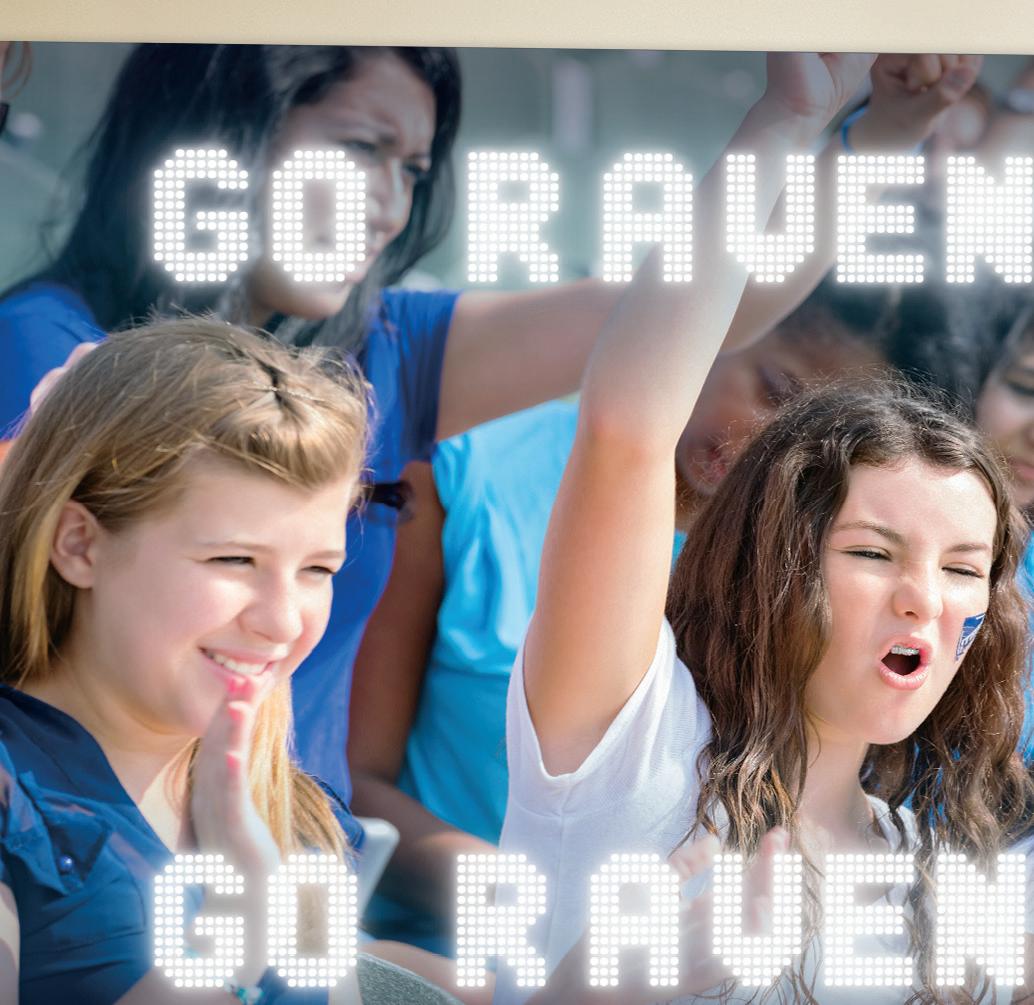
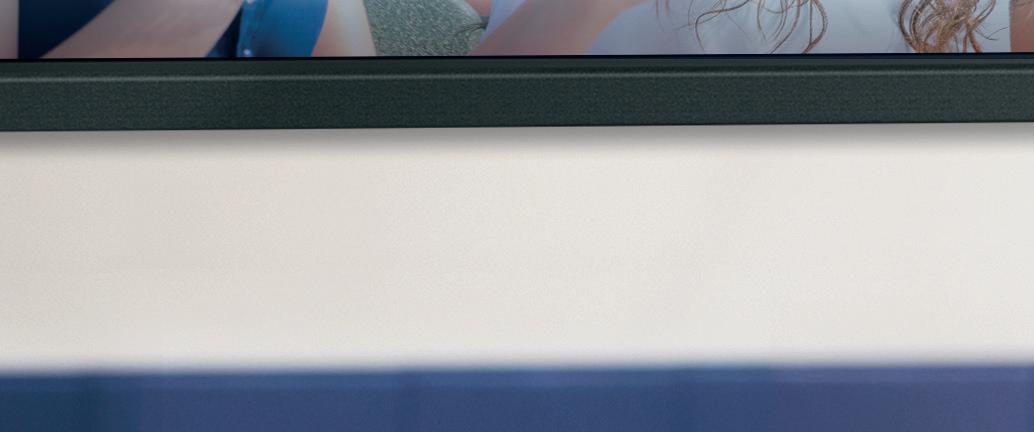









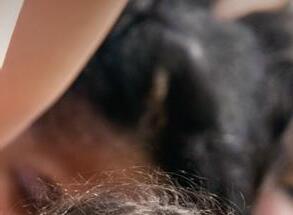
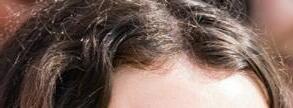



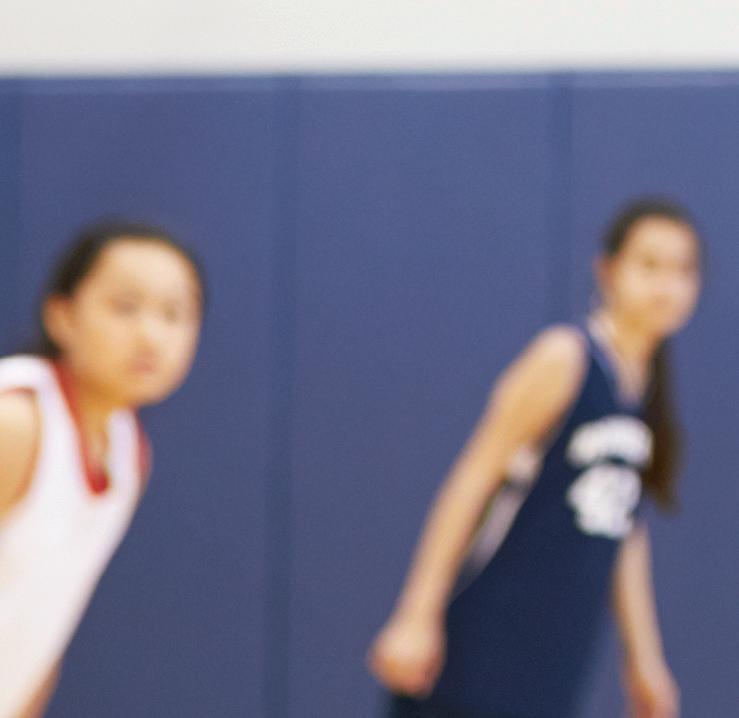


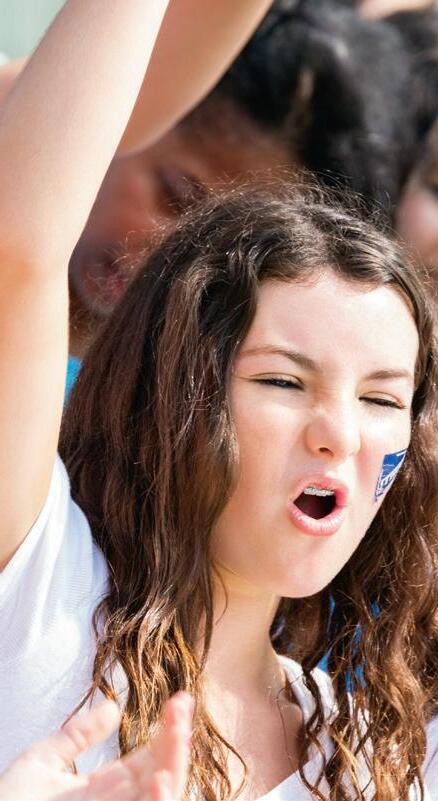





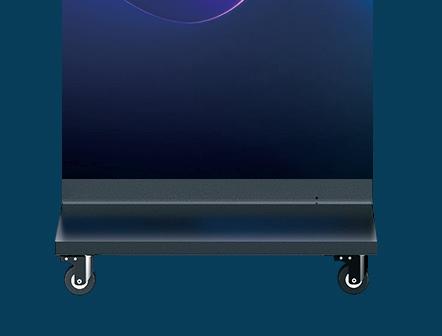



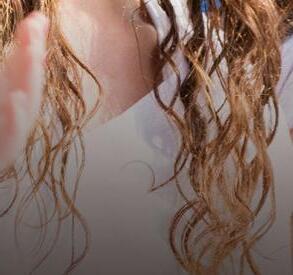






Step into the future of communication with cutting-edge LED Signage Displays from CommBox! Designed to deliver vibrant, dynamic messages, these screens ensure that your presentations, school notices and signage are seen and understood.
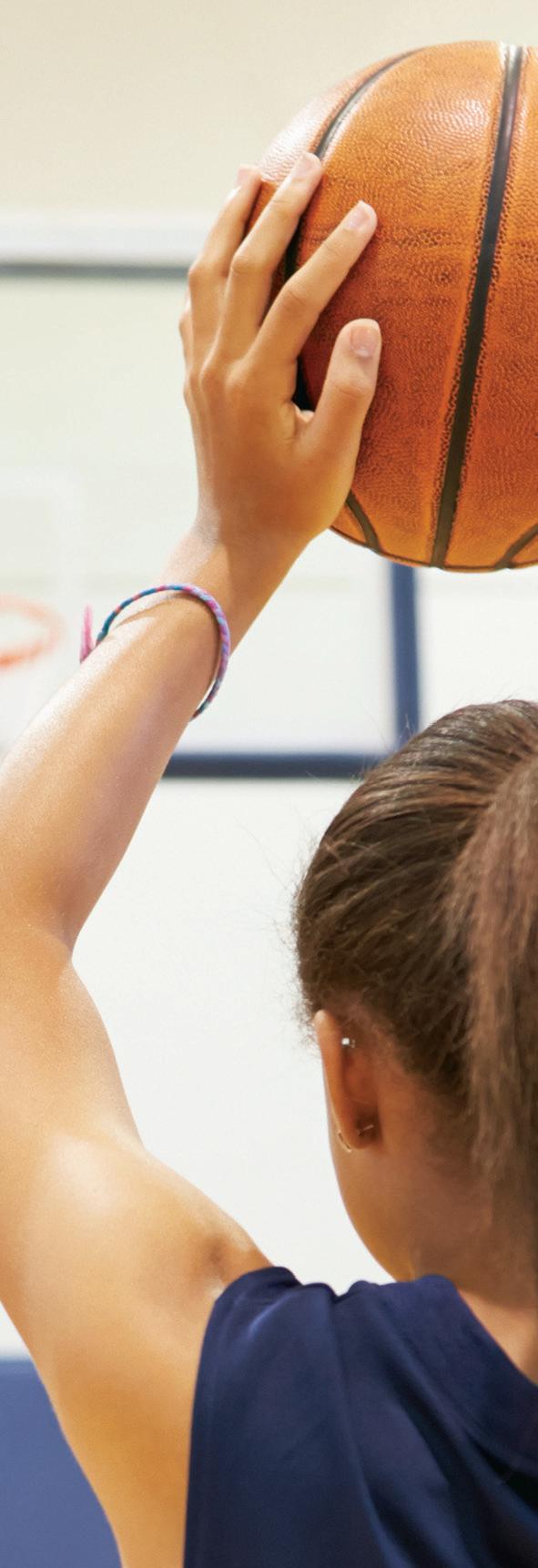
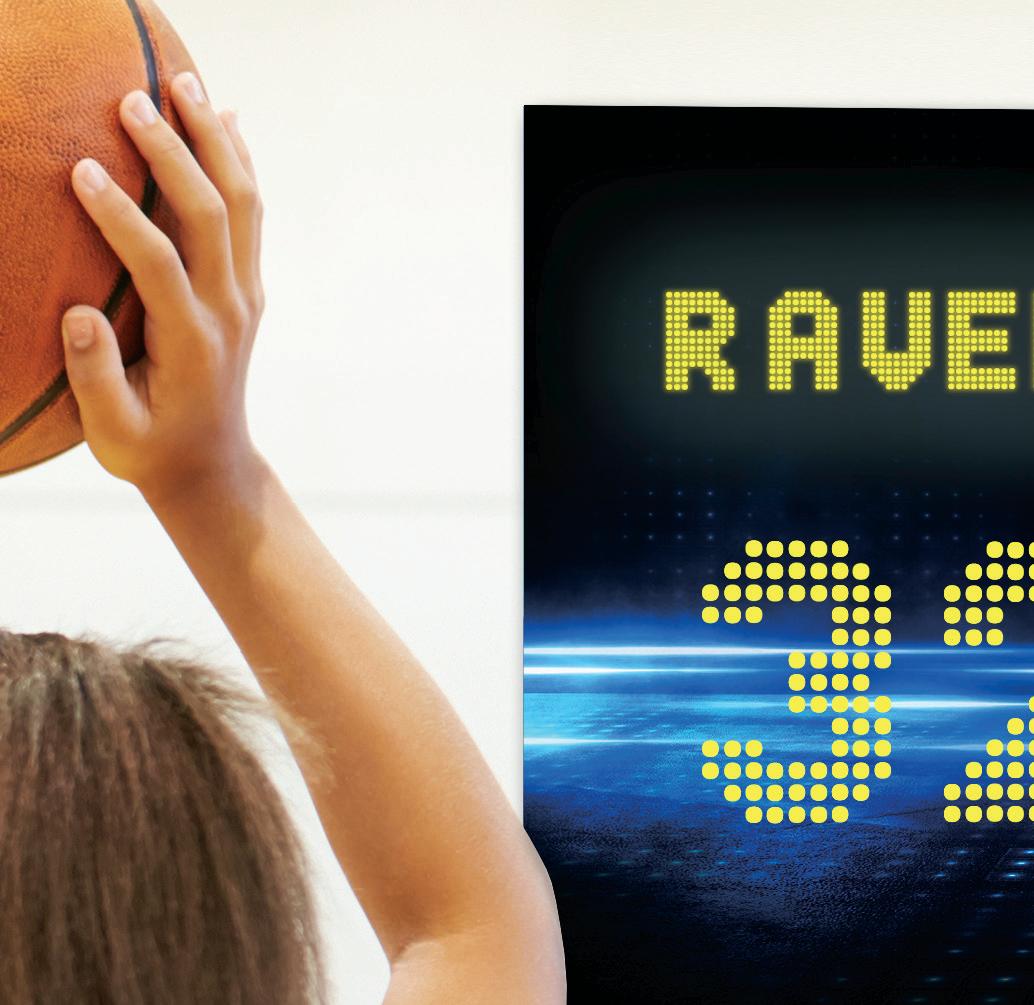




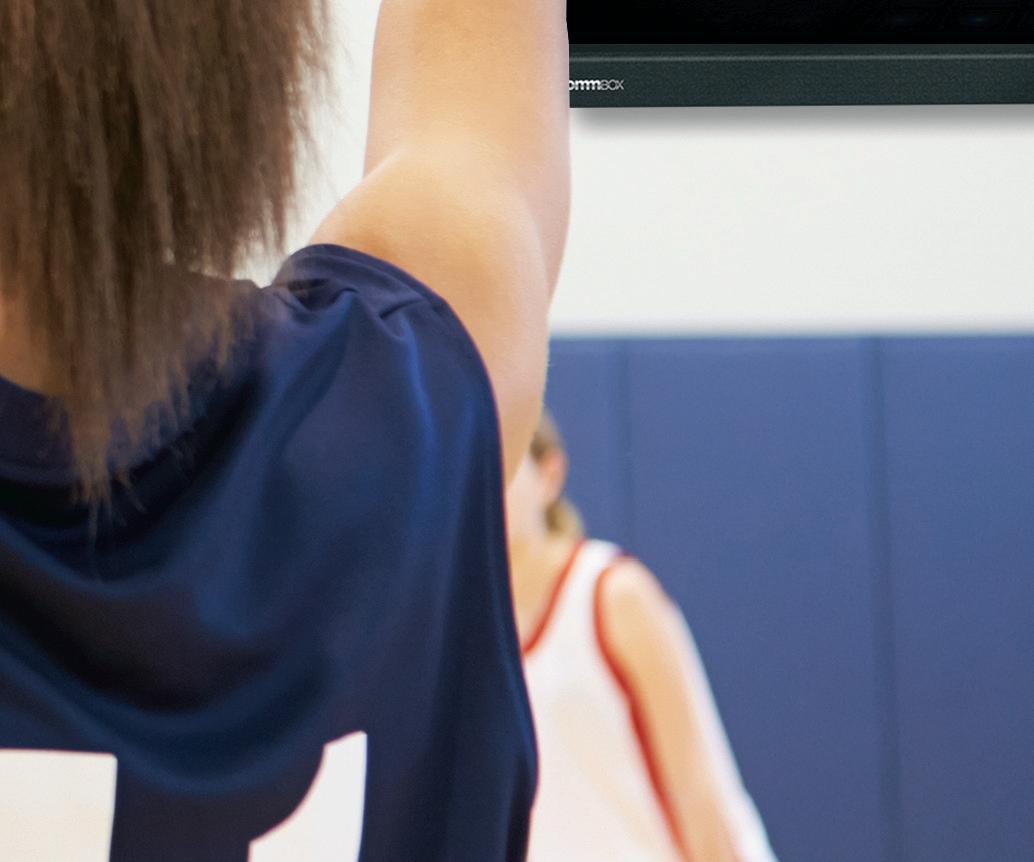







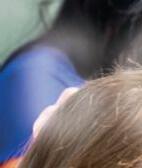










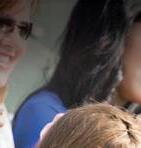

























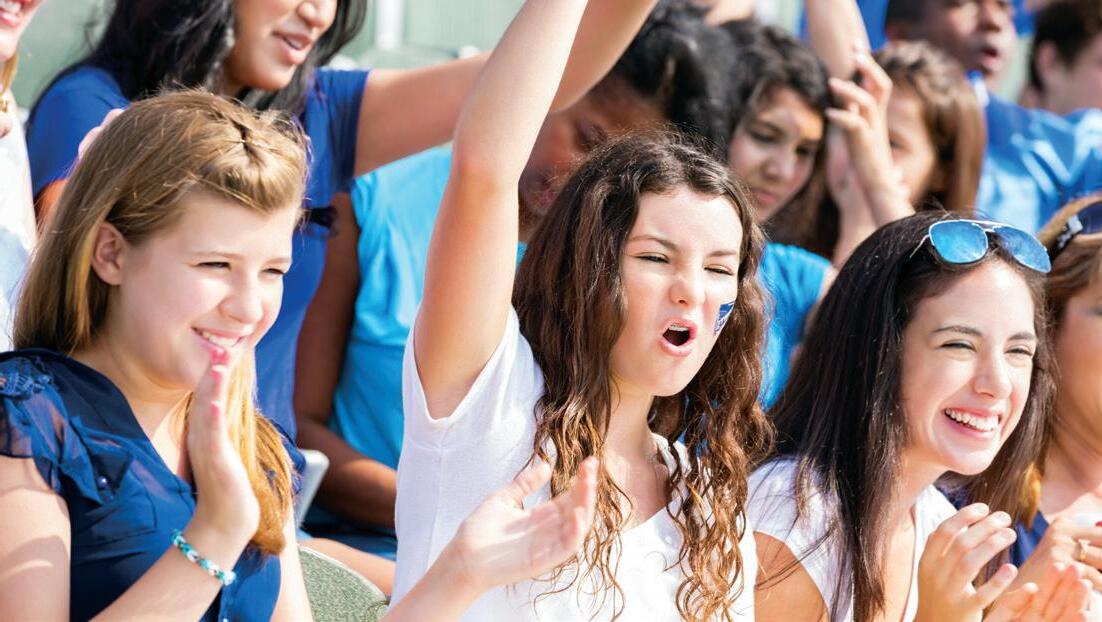








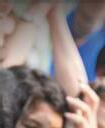










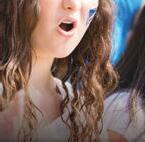

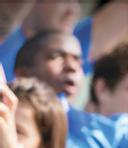













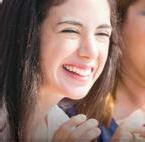
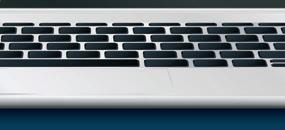


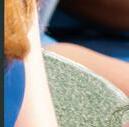






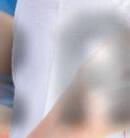








Aspect Ratio: 16:9 or 9:16




DIGITAL SIGNAGE CAptivate with dynamic content

School halls are a locus of activity, regularly hosting a range of events including school assemblies and presentations, performances, community events and much more.
A well designed, easy to use audio visual system is essential in this space, and can elevate school events to a professional standard.
Recognising a need to update the AV system in its hall, Hurstville Public School partnered with Prolinx Audio Visual. Hurstville is a K to 6 school, with close to 1200 students. Community involvement and participation are highly valued and encouraged at the school, and the hall is used regularly.
Zoran Aleksovski, Director at Prolinx AV, explained that the existing system in the Hurstville Public School hall was complicated to use, and as a result, it was under used. “Hurstville asked us to deliver a simple and easy to use system,” Mr Aleksovski said.
In consultation with school leadership, Prolinx AV designed a user-friendly system. The team ensured disruptions to staff and students throughout the project delivery were kept to a minimum.
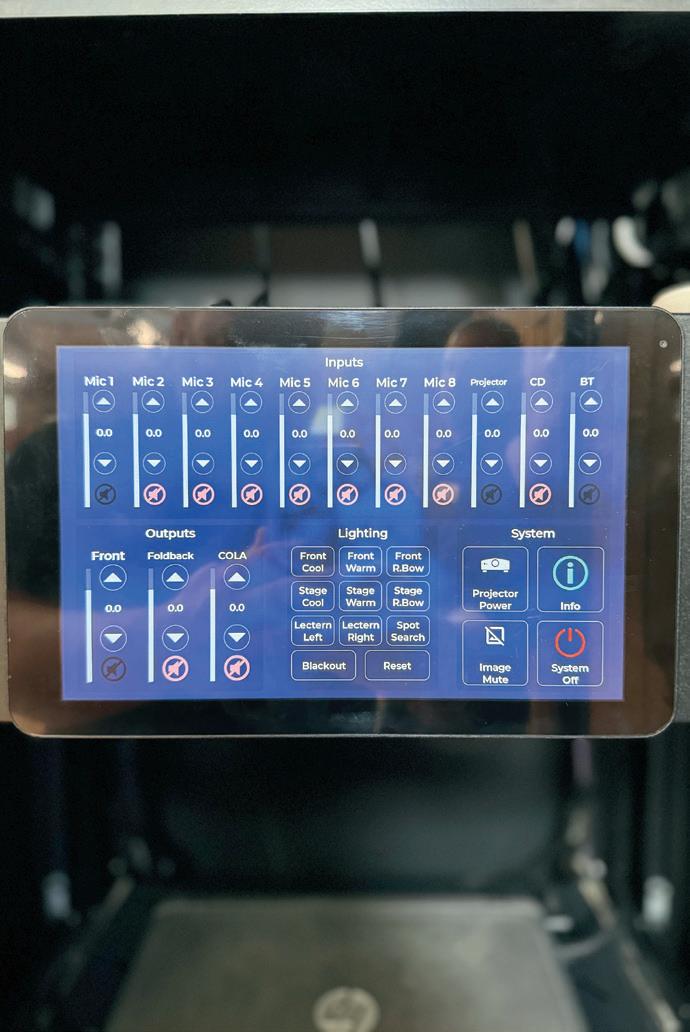
We had great feedback from the Principal and staff at how simple the AV system was to use

AV
As with all improvement projects undertaken by schools, delivering on budget was paramount. Prolinx AV worked to balance the school’s budget while delivering a high-quality system. “To get within the school’s budget, we opted to utilise some of the school’s existing audio-visual products, while including our new hardware for a seamless, simple to use system,” Mr Aleksovski said.
Incorporating existing equipment into the AV upgrade was also a more sustainable choice, ensuring items do not go to landfill before they are past their usefulness. In the future, Hurstville Public School can upgrade other components of the AV system as necessary, and when budget allows.
“We included an RTI automation system with a touchscreen installed at the AV rack location, together with Ipad control. This enabled the customer flexibility to control the audio, video and stage lighting from anywhere within the school hall.
“We had great feedback from the Principal and staff at how simple the AV system was to use. Now, they can use the system more frequently, and they don’t have to rely on one or two tech savvy teachers to operate the system, which is quite common within schools.”
Prolinx AV has worked extensively with schools, and is an Advanced Supplier to the New South Wales Department of Education, under the Department of Education Vendor number: 100 490 170SCM0020 and SCM0256 schemes. The team pride themselves on working collaboratively with schools to ensure they receive maximum results from their new system.
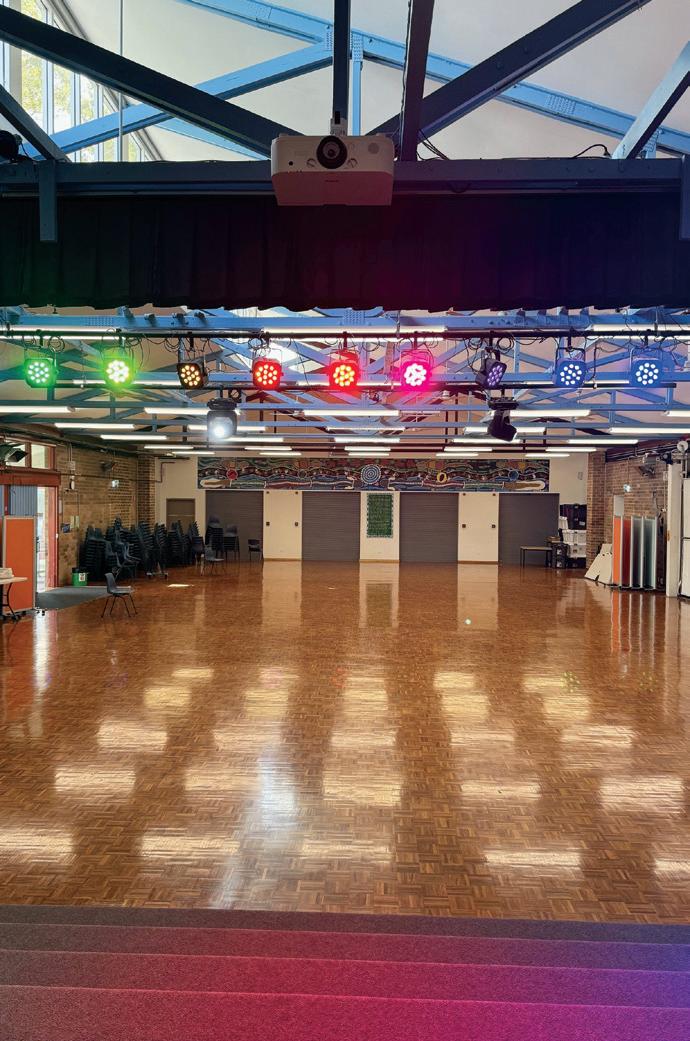



A cultural melting pot, unofficial sporting capital of Australia, and considered one of the world’s most liveable cities, Melbourne offers much for school groups to explore.
Whether you are visiting the area from a neighbouring town, or your school is situated within Melbourne, multiple subject areas and cocurricular interests can be enriched by exploring the garden city. Melbourne can also make a great base for exploring attractions in neighbouring areas, providing access to adventure based activities like hiking, kayaking, and much more.
Of course, the Royal Botanic Gardens is a must see, with opportunities to extend learning in biology, geology, and conservation.
Home to more than 140 cultures, Melbourne is one of the most multicultural cities in the world. Students can explore these different cultures
through food, visiting significant sites, and meeting people. This will help them expand their world view beyond their immediate lived experience.
A museum for all interests can be found in Melbourne, with spaces dedicated to science, art, First Nations history, sport, music, transport, fashion, and a range of different cultures. A variety of performance venues in the city offer students the chance to see a live show, or connect with and learn from local performers. Similarly, Melbourne boasts world-class facilities for most sporting codes, making it an ideal destination for your school sport team.
Along with the excitement of visiting a big city, and the explicit learning opportunities, an overnight trip, or longer, to Melbourne could have unintended benefits. Away from home and out of their comfort zone, students will need to fend for themselves. They may need to manage their finances, ensure they have clean clothes and other supplies each day, and make choices about when and where to eat.
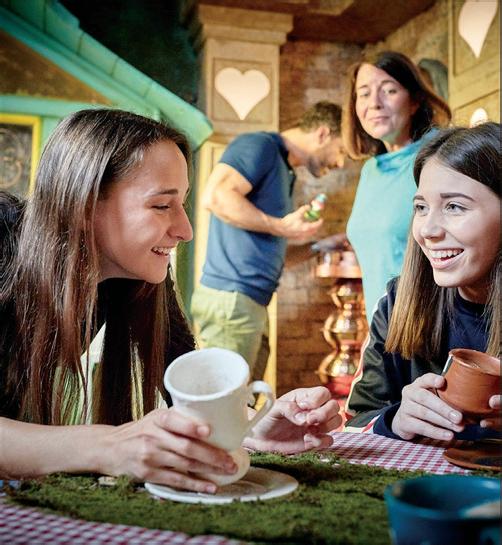

Melbourne
is one of the most multicultural cities in the world
For some students, it may be their first time navigating public transport, or using a map to explore a new place.
This will all help students build resilience, teamwork, problem solving skills, and communication capabilities, which will benefit them across all subject areas. A trip away from home also offers an excellent bonding experience, helping students become closer.
Students from remote and regional areas may have never visited a big city before, and a school trip to Melbourne will provide this opportunity. Many students may experience their first visit to a museum, major sporting venue or

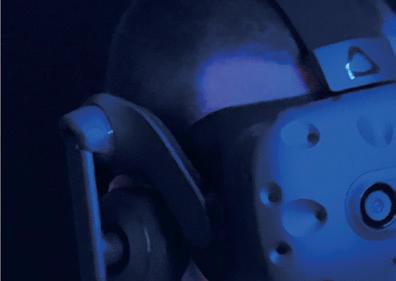
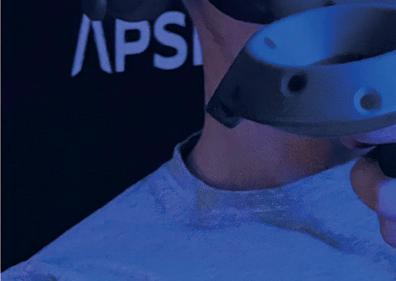


culturally significant site while visiting Melbourne, as these opportunities might not be accessible to them in their hometown.
For students approaching graduation, experiencing a big city firsthand will provide insights into the lifestyle, and assist students contemplating a move to a similar area. A taste of Melbourne will show students what to expect, if they are considering moving to pursue further study or employment, and help them decide if the hustle and bustle is for them.
To plan your Melbourne adventure, students could be tasked to identify appropriate


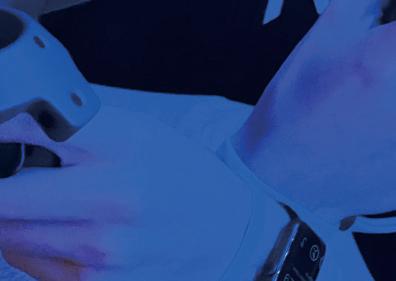



sites to visit linked to the curriculum area. To extend the learning activity, students can plan itineraries using public transport, and organise a budget. This activity would work for students at schools central to Melbourne, as well as further afield.
Alternatively, external providers can be engaged to help plan your school trip. These providers can assist with accommodation, learning activities and itineraries.
An overnight stay or longer will give your school group time to explore even more. A range of accommodation options are available, including dedicated school camp sites, hostels, and hotels.
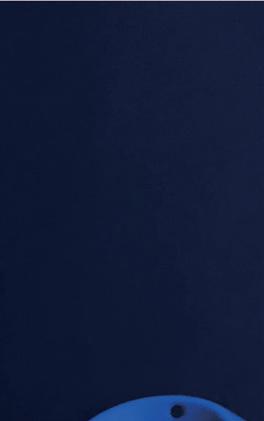
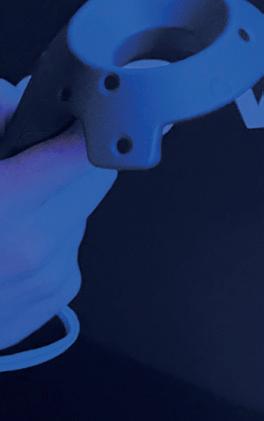


And for teachers, remember that Melbourne is renowned for its coffee scene, so you can make sure you remain fuelled and energised throughout you visit!
Escape Hunt Melbourne offers students the opportunity to escape the classroom and leap into their wonderfully appointed worlds. Students are tasked with finding clues and completing missions in an adrenaline fuelled race against the clock.
Packed with excitement, these team building experiences inspire communication, teamwork, critical thinking and problem solving.
Escape Hunt Melbourne has five escape rooms available that run simultaneously, accommodating up to thirty players at any one time over a one-and-a-halfhour period. The team have worked with many returning
schools across Melbourne and beyond, and are always delighted to welcome new ones.
ApsisVR and ViriVR have been popular destinations for students, teachers and parents for the past five years. Visitors are challenged and entertained by Virtual Reality Games and Escape Rooms. These activities improve students’ problem solving, communication, and teamwork skills in a fun and engaging way.
ApsisVR offers several programs specifically for schools, either visiting or based in Melbourne. For Teachers, there is the Virtual Reality Micro Certification Program, a Teacher Professional Development Program utilising High Impact Teaching Strategies (HITS).
For students, an excursion to ApsisVR will allow them to experience the VR Escape Rooms in groups of 10 to 20. Weekend excursions can also be organised for students living in boarding schools to have fun at ApsisVR. A VR Event Day can also be hosted at your school, where ApsisVR will establish a VR Lab for the day to deliver multiple VR activities to support student health and wellbeing.
The team at ApsisVR can support your school’s lunch time VR club, conducting and managing at-school advanced VR sessions for education or employment.
A VR Hackathon, facilitated by ApsisVR, will allow students to develop learning content with teachers in a fun and engaging way, for use in their lesson plans and curriculum activities.
ApsisVR, as a specialist VR service provider, can also provide managed VR support services, providing all the required tech and VR content for your school to reduce workload on teachers and school IT technical teams.



Apsis VR Melbourne, where education meets adventure! This is an innovative VR Education Program that helps students to deal with the big issues and big ideas of the future supported by parents, teachers and schools.



Innovative whole of school education program using virtual reality
We are the best and highest rated Virtual Reality experience in Melbourne’s CBD. Having started o ering VR escape rooms, ApsisVR has grown substantially over the last 2 years introducing unique VR Education Programs, School Incursions and Excursions, bringing together teachers, students, principals and parents. Recently we acquired ViriVR assets to enhance our o ering to schools.
We are bringing together educational content to improve student engagement, problem solving, team
building and communication. This is to help students to be able to secure the next generation jobs.

We already have great plans to enrich education in schools using VR for 2025 with the following aims:
• to enhance student engagement and achievement;



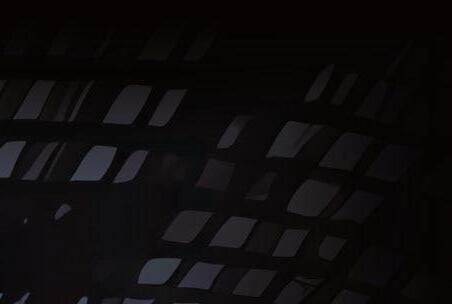







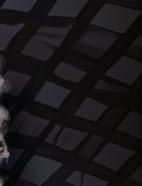


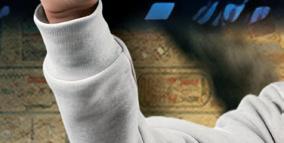

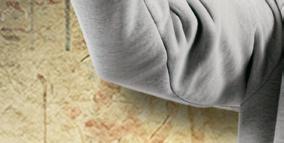





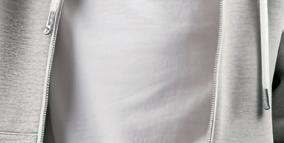
• to increase parental involvement;
• to improve teacher health and wellbeing by reducing stress levels
We believe in bringing together parents to support students and teachers in the school environment. ApsisVR has already built these relationships with parents and students outside the school environment.

Host up to 20-30 students per 90 minutes.
Close to SeaLife, Yarra River and the Immigration Museum.















VR Event Day up to 180-200 students.
Educational and Non Educational content for fun learning.


Extended Reality Micro Certification PD Program.
Aligned to HITS and prepare yourself to improve student learning.

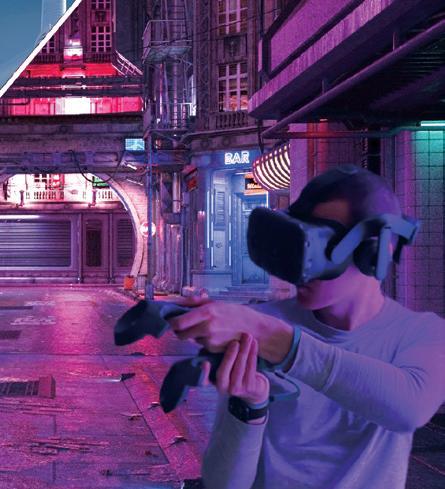

Host special weekend learning and fun activities.
Play Games, Escape Room or learn better with VR educational content.
Schools partner with ApsisVR to launch an innovative Learning and Play VR programme for students with parents’ support that reduces stress on teachers and schools. Our Pilot Virtual Reality School Learning Program can be started in 2024 as a trial and extended into a full program in 2025.

Improve engagement and interest for Critical and Creative Thinking, Digital Literacy, Personal and Social Capability, Sustainability and STEM subjects with virtual reality based learning.


 By Gemma Easton, Editor
By Gemma Easton, Editor
We boast a broad range of museum spaces throughout the country, dedicated to history, the arts, culture, science and technology, social sciences and more.
These spaces can bring subjects to life and help to reinforce classroom learning.
Benefits of visiting the museum, though, extend beyond explicit learning and teaching, as students develop imagination and curiosity, and are inspired to become life-long learners.
Museums are trusted sources of knowledge and are the authoritative source in their area. Often, specialised staff with in-depth knowledge of the subject area will be available to lead your school group. These staff will be able to curate a visit for your group, showing them the most relevant exhibits and maximising learning outcomes.

A visit to a museum will build more than just an explicit understanding of subject matter with benefits that extend to all curriculum areas.
Museums offer plenty of opportunities for students to compare, contrast and analyse situations, which can help to develop their critical thinking skills. Comparing models of bird species, for example, students can point out similarities and
differences, and infer why these exist. This process can be reinforced through conversations in the classroom, with teachers.
Historical empathy and cultural sensitivity can be fostered through museum visits, as students can explore how people lived in a different time and place. This broadens their understanding and worldview beyond their own, helping them to understand and accept people’s differences.
To help students learn to the best of their ability, it is important to
present learning material in a variety of ways. Tactile learning –allowing students to touch, feel and interact with objects – can help link neurological pathways and create better understanding, memory, and retention. It can also help students with short attention spans to focus. Museums can provide tactile learning experiences, with some items available for interactivity.
When learners can engage directly with their learning and take a proactive approach, they retain information more readily, and can develop a longer-term interest in the topic. Allowing students to explore the museum with little or no direction will give them some agency over their learning, as they make choices about which items or experiences to pursue. Encouraging students to form their own inquiry questions, then investigate and draw conclusions can lead to strong learning outcomes.
For some students, visiting a museum is not something they would do on their own, without a school group. It might not be something that interests them,

or there may be other barriers, including cost, accessibility, and time. Including a museum visit in your learning program may help introduce students to the joys of such an excursion, and leave them with the desire to return.
As with any external learning venture, a museum visit will help reinforce students’ soft skills. Students will need to respect and adhere to the site’s rules and regulations, and follow the directions of school and museum staff. As representatives of their school, students will need to behave appropriately, both in the museum and moving to and from it.
Some providers shared with us what they offer for school groups.
The Old Treasury Building is a unique resource for your school, providing an opportunity for students to explore history in the place where it happened. Students can visit the historic Executive Council Chamber, where for more than 160 years, the Governor of Victoria has met with Government Ministers to sign our laws.
The gold vaults showcase the structure of the building.

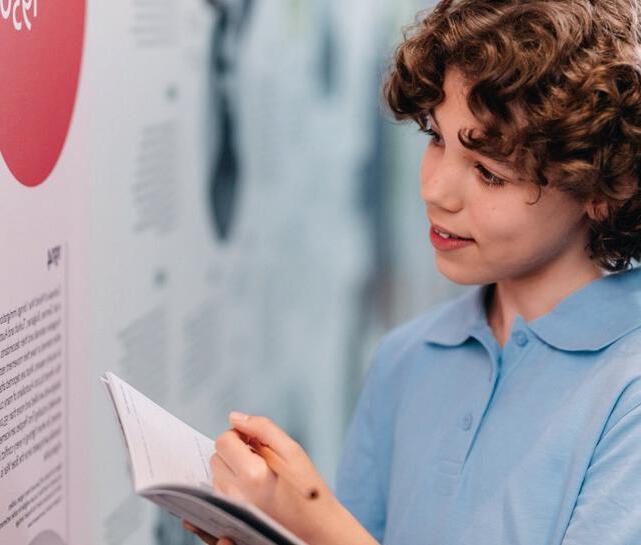

Using objects and stories from the museum’s collection, students learn about migration, diversity, and identity. Programs are connected to the Victorian Humanities and English Curriculum and Intercultural Understanding.











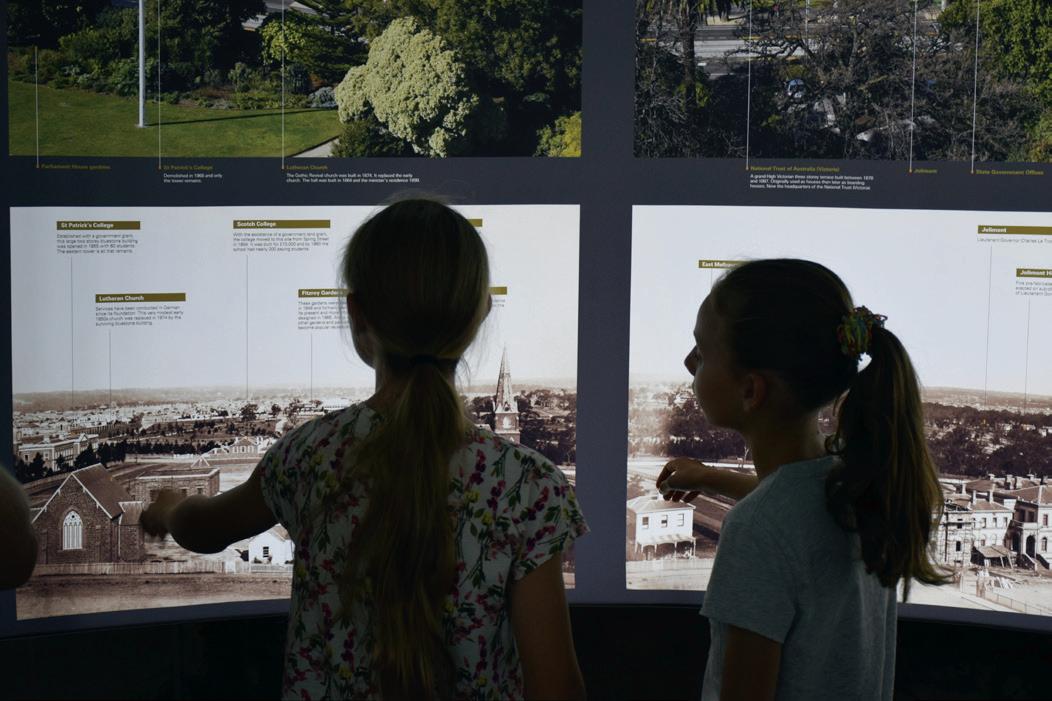
As Melbourne was built on gold, so was the Old Treasury Building. Originally conceived as a safe and secure place for the government to store their precious metal reserves, the money it generated fuelled the creation of many extraordinary buildings, including the Old Treasury. Students enter these original gold vaults to discover the journey people took from their home countries to Victoria and the hardships and rewards it held, including the Eureka Stockade.
In the early Melbourne program, students will discuss how Melbourne evolved from early settlement to Marvellous Melbourne and expose the underbelly of how colonisation impacted the local First Nations peoples. The steps to Federation will be explored and the early years when Melbourne was the national capital, and the changes which came about including women’s rights and the fight for First Nations recognition.
In addition to the Old Treasury Building’s one-hour paid programs, extensively researched articles covering a multitude of topics are available free online.
Museums Victoria’s venues and learning experiences offer your school wondrous worlds of science, history and culture. Explore curriculum-linked programs across the museums or bring a Museum in a Van incursion direct to your school. The friendly Museum Bookings
team can help you create an accessible and inspiring museum experience for your students, with opportunities across Melbourne Museum, Immigration Museum, Scienceworks, the Royal Exhibition Building and IMAX Melbourne.
In the heart of Melbourne, plan a day at the Immigration Museum to engage students in stories of migration from the 19th century to the present day through interactive sessions and exhibitions.
Discover Scienceworks and the Melbourne Planetarium, and delight your students with the new Lightning Theatre shows offering electrifying demonstrations of energy.
There are new experiences every day at Melbourne Museum, from moments of curiosity to moments of wonder. Across from Melbourne Museum visit Melbourne’s only World Heritage site, the Royal Exhibition Building and Carlton Gardens. Your students can visit this extraordinary place to experience the rich history, art and architecture of the building and to enjoy breathtaking views of Melbourne from the iconic Dome Promenade.
Within Melbourne Museum, the Bunjilaka Aboriginal Cultural Centre tells the story of survival against the odds and celebrates the vibrant cultures of Indigenous Australia with rich traditions of performance, storytelling and artwork.
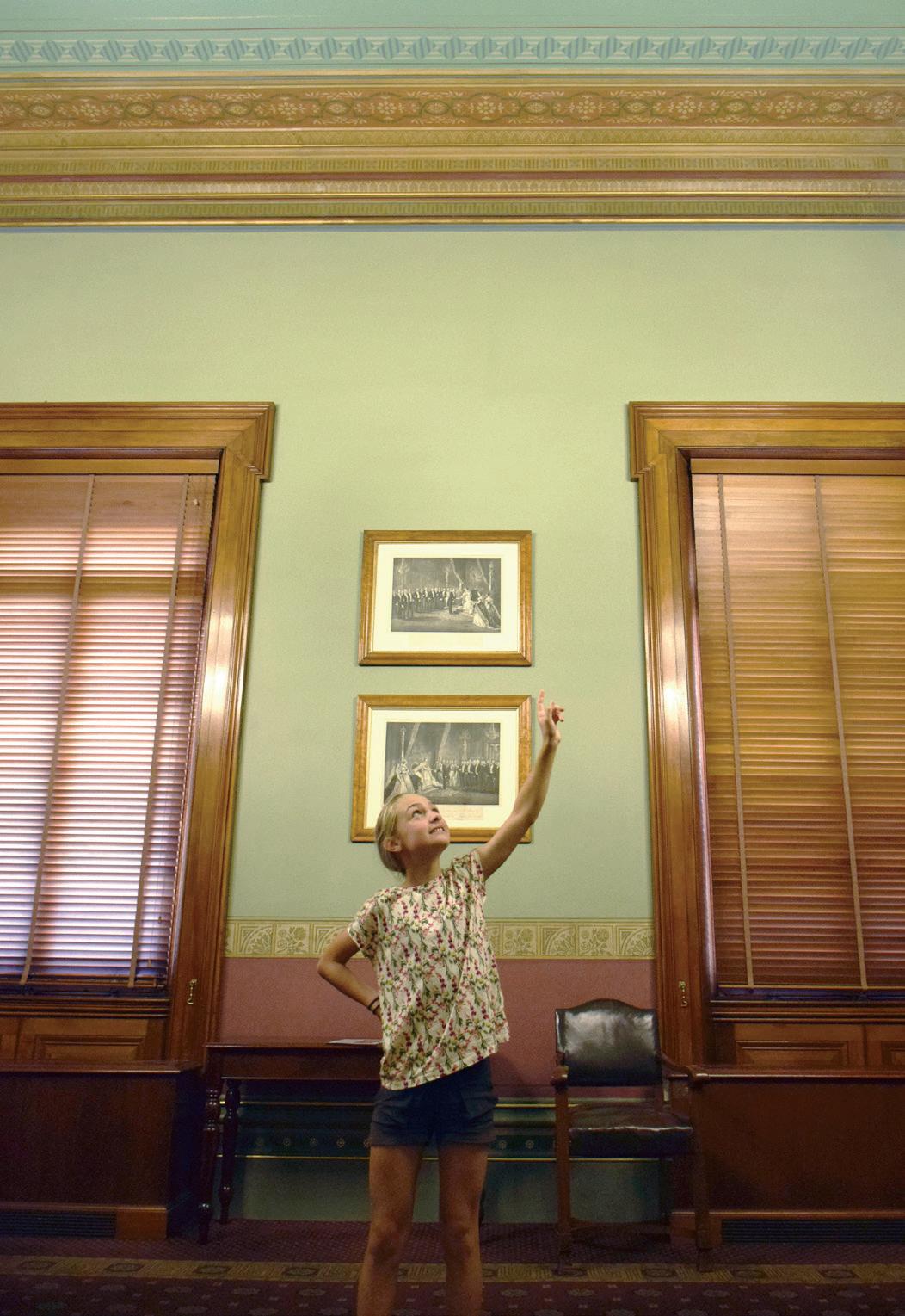
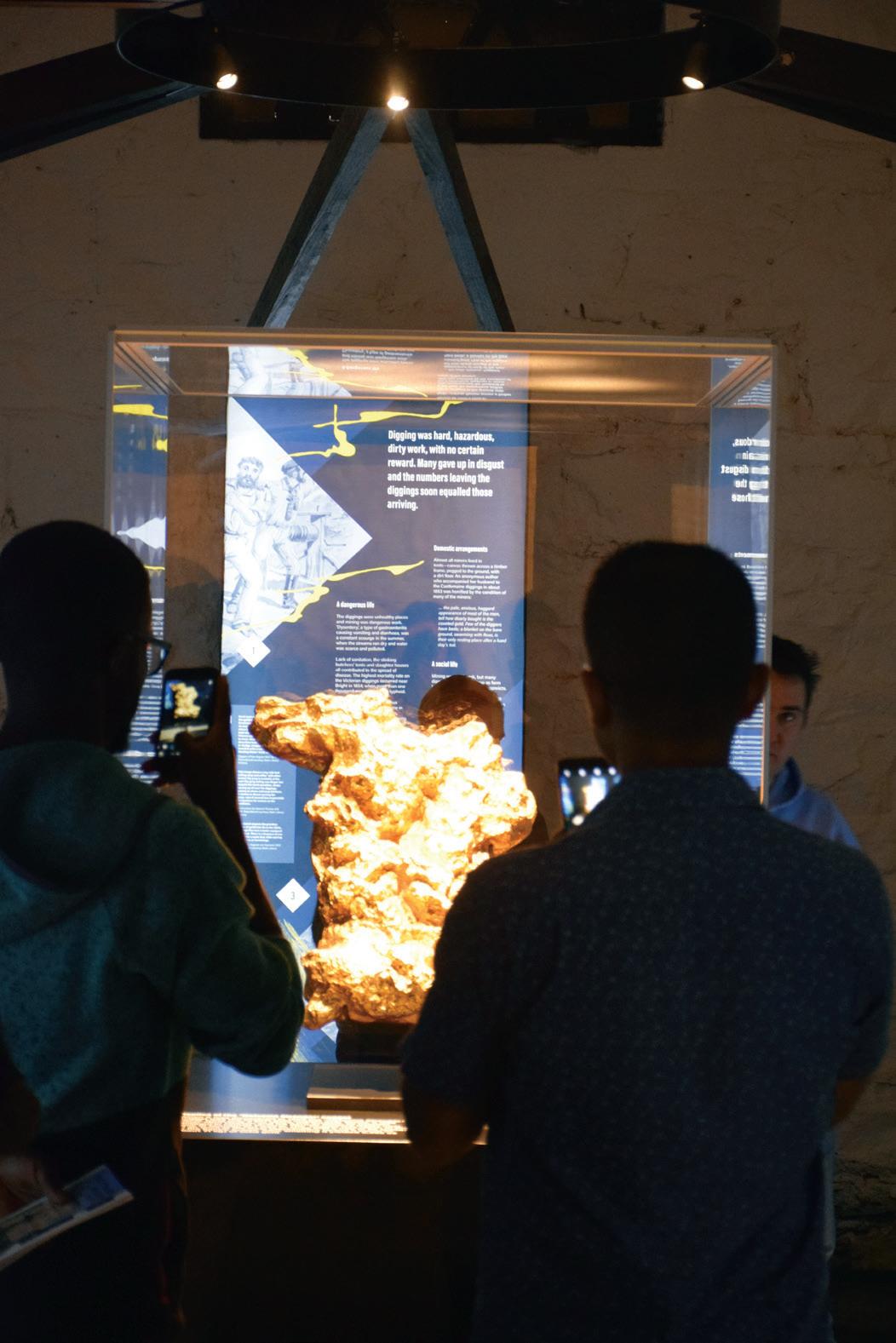






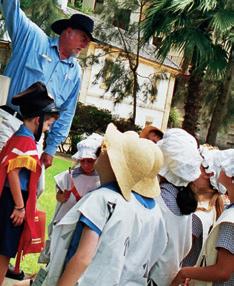



The Rocks Walking Tours has been operating since 1978 and has introduce many students from schools Australia wide as well as International, to the history and heritage of Sydney’s oldest neighbourhood - The Rocks - an integral part of Australia’s colonial history.



Our Primary (Stage 1 - 3) and Secondary (Stage 4 - 6) school educational tours are conducted to focus on the heritage and history of The Rocks, Millers Point and Circular Quay.
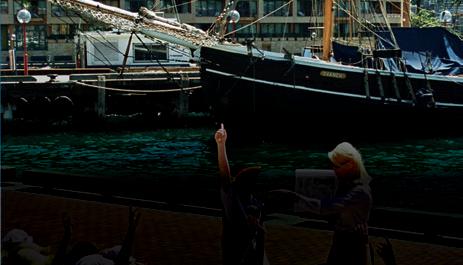



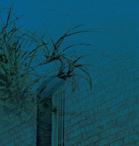







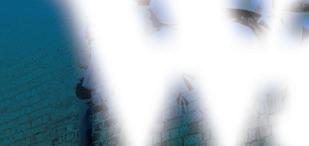
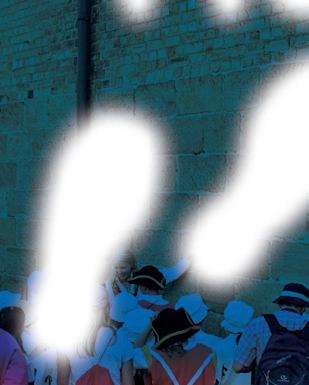
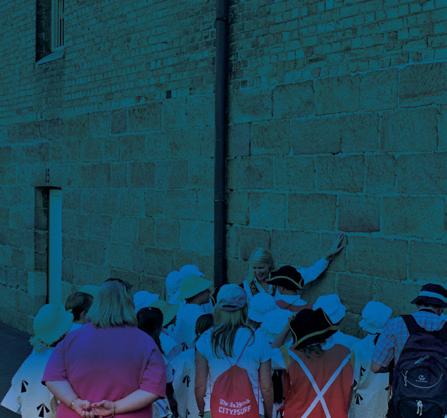




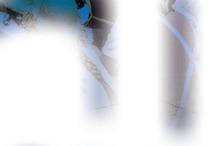









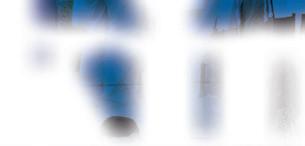







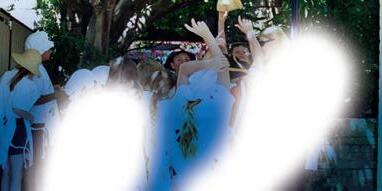
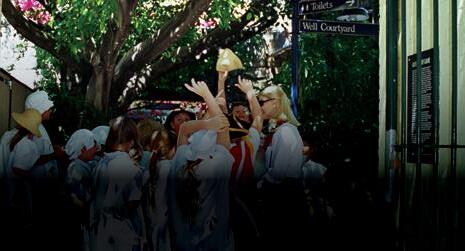
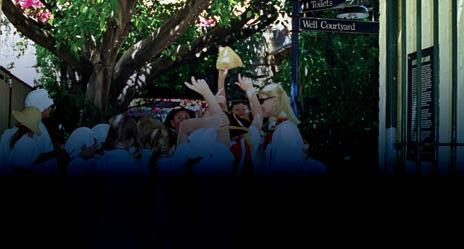
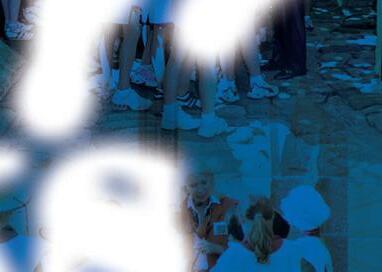


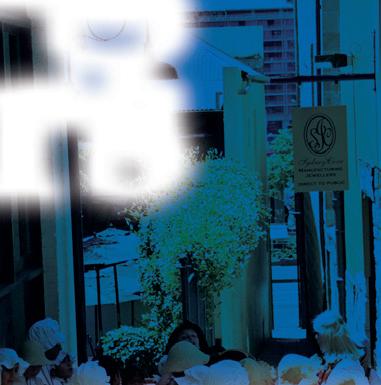




This historically significant area encourages ongoing learning and o ers a valuable outdoor educational experience to students.
Students will be encouraged to:
• Discuss accounts of past times, expressed through events and the interpretation of significant sites
• Observe and analyse the heritage of Sydney’s past and present
• Identify the stories and events that relate to the interaction between the people that lived in this unique built environment




Our professional and well researched guides use images, early photographs, maps and sketches throughout the tour to contrast past and present and stir the imagination. Their knowledge and the stories that are shared bring the area to life for the students.


The tours o ered within our Educational Program are regularly reviewed ensuring relevance to the current curriculum and Key Learning Areas (KLA) of Human Society and It’s Environment (HSIE), History, English, Geography and Religious Studies.
For more information please contact our friendly team at The Rocks Walking Tours
Shop 5 – Clocktower Square
Cnr Argyle & Harrington Streets
The Rocks NSW 2000, Australia
Tel: +61 2 9247 6678
Email: info@rockswalkingtours.com.au
rockswalkingtours.com.au
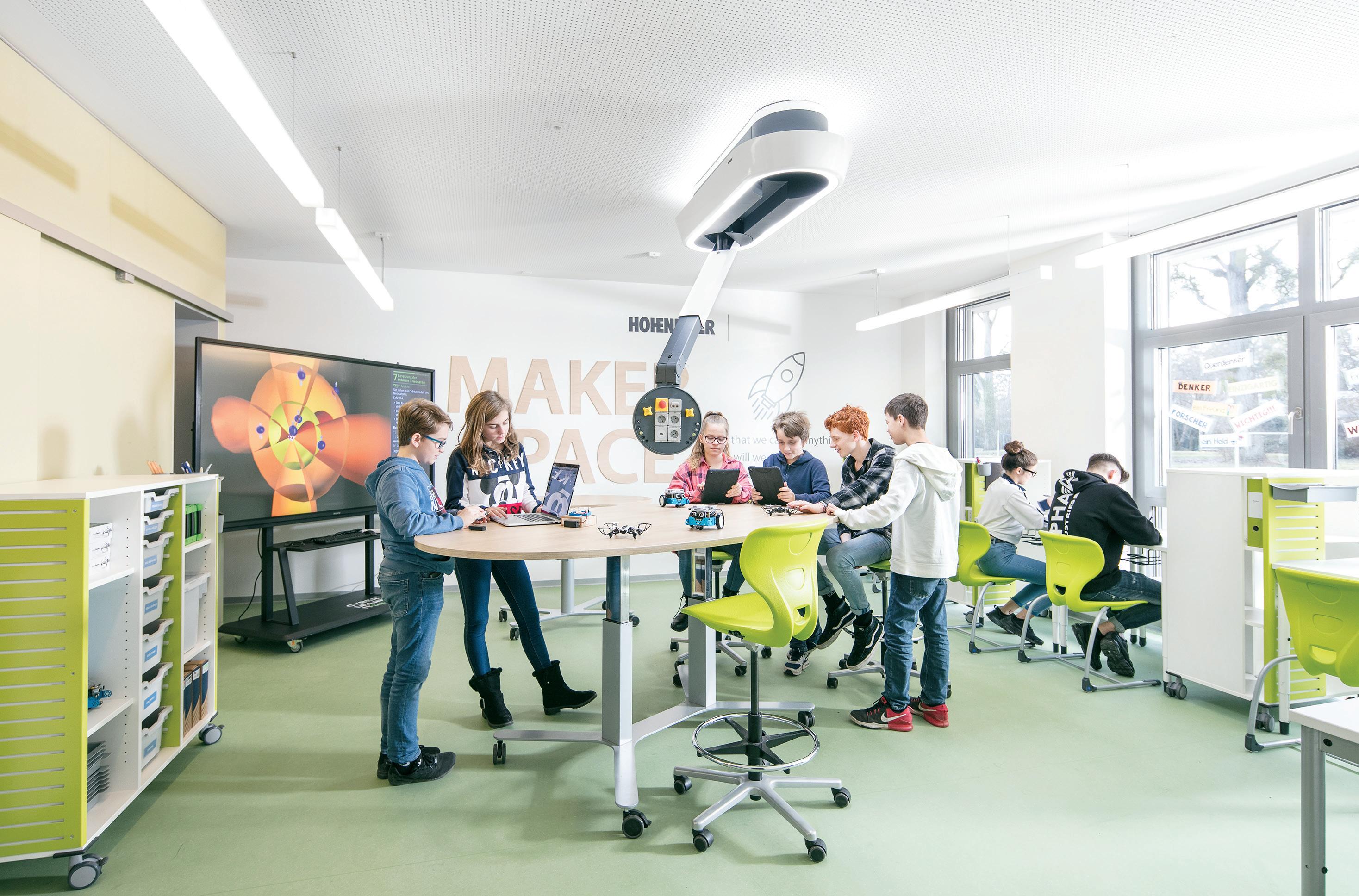
From dissecting organisms to discussing and observing chemical reactions, everyone has a fun memory from their school science class.
Teaching science, and designing a functional science laboratory, though, can prove challenging. Unlike general learning areas, science rooms need distinct spaces for hands-on experiments, and for theoretical teaching and learning. The evolution of the science curriculum over the past decade may mean that your science area needs an update.
Different states may have different mandatory and recommended safety procedures for science experiments, laboratories, and equipment. Make sure your school is compliant with all necessary regulations in regards to safety, chemical storage, appropriate surfaces, and general health and safety guidelines.
All science learning environments should be equipped with appropriate Personal Protective Equipment (PPE), including lab coats, safety googles, face shields, gloves, and coveralls. Even in the early years, where experiments may not pose any actual danger, it is a good idea to get students into the habit of using PPE for science activities.
In case something does go wrong, it is important to have well-maintained emergency showers and eyewashes that are compliant with Australian Standards. Sufficient hand washing facilities should also be available, appropriate to the number of staff and students in the space, and the activities being undertaken.
Legislation requires that, if dangerous goods are stored on your premises, employers must ensure health and safety by guaranteeing that goods are packaged, labelled, and contained correctly, in accordance with relevant codes and regulations. Correct storage will also minimise any damage from spills and leaks. Locked cabinets are the best solution for this, with models available to suit flammable liquids,
corrosive substances, and items which must be kept chilled.
Depending on the experiments conducted within the laboratory and the use of potentially volatile substances, schools should consider specialised science equipment such as dedicated fume cupboards. These are designed for use with substances that are volatile, which means they readily become gaseous when exposed to air. Schools planning on undertaking experiments with volatile substances should invest in compliant ventilation systems, which can be configured to suit teaching needs.
It is important to note that, as with all protective and safety equipment, the efficacy of fume cupboards in protecting staff and students from unwanted
The development of literacy is closely tied to the practice of handwriting, which integrates with the learning of letter names and sounds.
The path towards literacy begins with preliteracy, which involves familiarity with the alphabet, letter names and letter patterns to represent written sounds (phonics). However, there is much controversy surrounding the order in which letter names and letter sounds should be introduced.
Research indicates a strong correlation between children’s ability to identify letter names and their future success in reading skills, establishing it as a crucial early predictor of future reading achievement (Trieman & Wolter, 2020). Furthermore, the more letter names a child knows, the better their chances of success in decoding with an understanding of letter names significantly boosting their grasp of letter sounds (Share, 2004). This is due to the role of letter names acting as a “hook” or “anchor,” connecting the sounds children hear to the spellings they write down, thus providing essential labels for letters.
Although many argue for the
teaching of ‘letter-sounds’ first, this ‘letter-sound’ label can be detrimental for young learners. For sustainability in phonics teaching, letters must be labelled by name to enable the ongoing teaching of the whole phonics code of English.
The labelling of ‘letter sounds’ does not allow the understanding that multiple letters can represent the same sound in English or
that the same sound can be represented in multiple ways.
Using letter names is therefore a reliable way to refer to and teach spelling patterns (graphemes) and provide clarity in understanding how to write phonics patterns (graphemes) in words. In English, letter names provide a stable and consistent property that supports students’ understanding, given letters do
not have a single sound value.
As such, we suggest teaching alphabetic knowledge in a sequence that begins with letter names, then letter shapes, and finally phonemegrapheme correspondences and grapheme-phoneme correspondences.
Undeniably, there exists a complex connection between letter name knowledge and phonics knowledge, where recognising letters - the symbols of our written language or codeis essential. But, if the focus on early literacy education is purely on teaching ‘letter-sound’ phonics, a process where each letter of the alphabet is given one corresponding sound, it risks undermining the teaching of handwriting as well as comprehending the written code. Explicit teaching of handwriting instruction, with a focus on learning both letter names and phonics, can be experienced concurrently allowing for the benefits of both approaches.
Practical Implementation: Why educators should refer to letter names when teaching handwriting and reading
Physically writing letters is crucial for building a solid cognitive understanding of how the phonics code works. By learning and practising handwriting, students gain more confidence, improved dexterity,
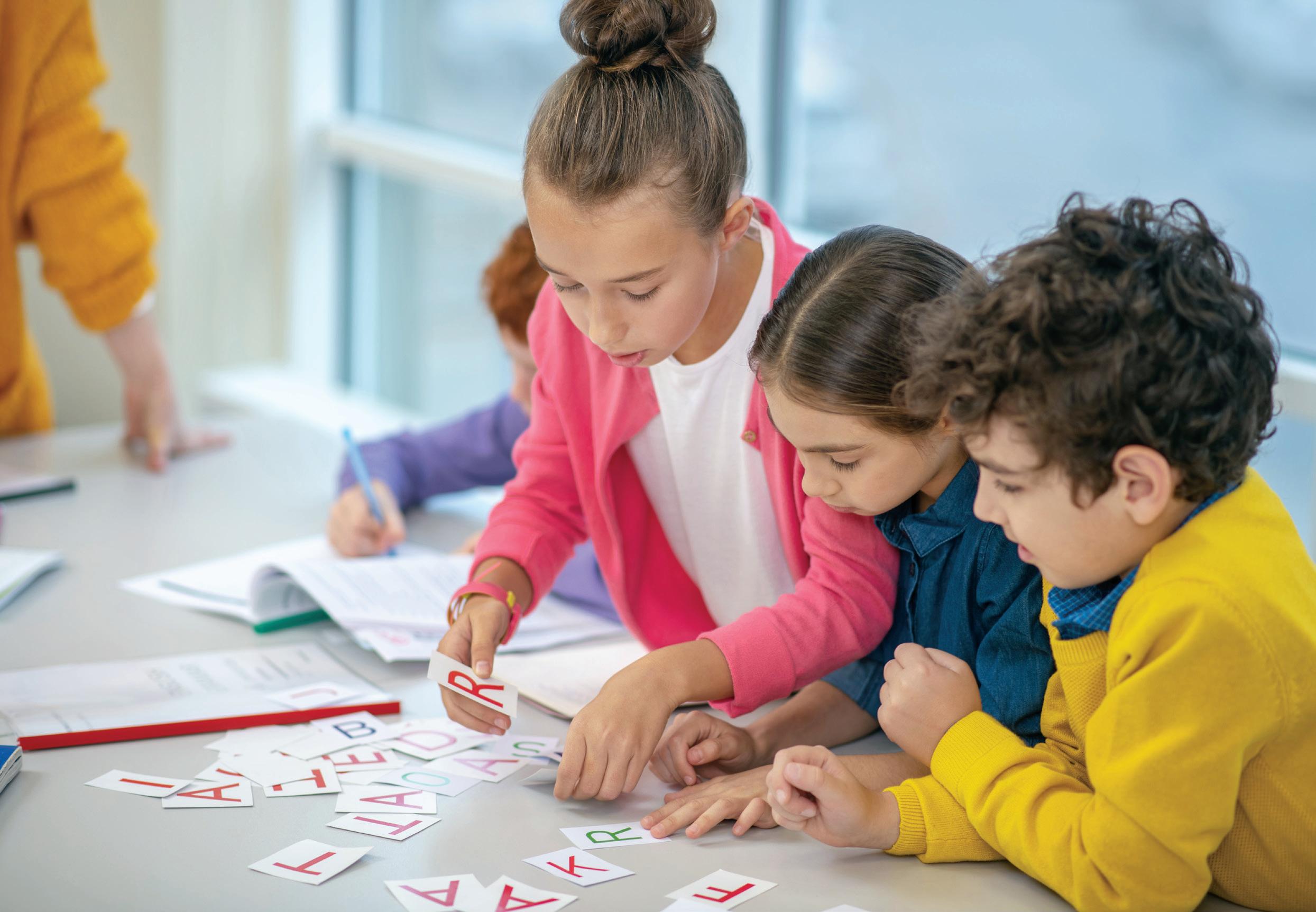
better recall and enhanced memory, all of which are vital for phonics instruction. When students learn to write letters correctly and can recognise them by name, they not only improve their handwriting skills but also advance their ability to identify and read letters fluently. The physical act of forming letters helps children internalise the shapes, curves and details of each letter, which in turn enhances their ability to recognise and differentiate letters when reading (Jones et al., 2013).
Therefore, it is important for young learners to have daily and deliberate opportunities to practise forming letters while connecting them to their corresponding phonemes, enhancing students’ retention of grapheme-phoneme correspondences. This integration nurtures cognitive abilities such as letter recognition, reading, spelling and word knowledge.
References
Jones, C. D., Clark, S. K., & Reutzel, D. R. (2012). Enhancing alphabet knowledge instruction: Research implications and practical
strategies for early childhood educators. Early Childhood Education Journal, 40(2), 101-107.
Share, D. (2004). Knowing letter names and learning letter sounds: A causal connection. Journal of Experimental Child Psychology, 88(3), 213–233. https://doi. org/10.1016/j.jecp.2004.03.005
Treiman, R., & Wolter, S. (2020). Use of letter names benefits young children’s spelling. Psychological Science, 31(1), 43–50. https://doi. org/10.1177/0956797619888837
Katharyn Cullen is an experienced Head of Junior School, innovator and curriculum specialist who is currently completing her PhD in multiple-linguistic word-study instruction. Katharyn regularly shares her work at both state and national conferences and actively demonstrates and supports teachers in classrooms across Australia.
Denyse Ritchie is an Honorary Chair of Literacy and Fellow at Murdoch University, WA and has over 40 years of teaching experience. Over the past 25 years, her focus has been on the teaching of literacy and the role of phonics in both foundational literacy and across the grades. Denyse is the co-author and developer of The THRASS Specific Pedagogical Practice and, Principal of The THRASS Institute, Australasia and Canada.

We know we have fantastic teachers in Australia, and Professional Learning Development is keeping them on top of their game.
PLD can help develop new ways of thinking about content, and encourages teachers to explore new approaches to their craft. Teachers acquire new knowledge through PLD, and then modify their existing beliefs and attitudes in relation to their teaching. This will benefit student achievement over a period of time.
Learning opportunities should be assessed upon staff completion, and student outcomes measured or observed. It is crucial to ensure a change in teaching practice strongly correlates with the improvement of defined student outcomes.
Each state and territory has its own regulations for PLD, though all require teachers to undertake some form of professional learning to maintain registration. Make sure you are aware of the requirements in your jurisdiction. Engaging in professional learning is also part of the Australian Professional Standards for Teachers, as well as the Australian Professional Standards for Teacher Aides.
For PLD to be effective, ensure the content, format and duration of the PLD will meet the needs and goals of participants. In some instances, this may require engaging an external provider to tailor a programme specific to your context. This could be presented to the entire cohort of teaching staff, or to

specific curriculum or year level groups. Partnering with other schools in your area to provide tailored PLD opportunities may help reduce costs.
Some providers offer a suite of learning opportunities, with sessions for teachers, students, and parents. Sessions on digital literacy, study methods, or respectful relationships, for example, are important for all education stakeholders, and can be adapted to suit the intended audience.
The Federal Department of Education suggests online
courses may be an effective form of PLD. These courses can be done at the learner’s own pace, and can work in with your personal schedule. They also offer the flexibility to take a course offered outside your geographical area, expanding the options for learning.
Some courses connect participants with others undertaking the course, helping to build learning communities, and extend teaching practice conversations beyond an individual’s school. The department cautions, though, that the wide range of types
and quality of online courses mean it can be difficult to assess their effectiveness. Look to reputable institutions, with good reviews and demonstrated benefits to teachers.
In some instances, it may be necessary to explore PLD opportunities outside of learning and teaching. School principals and other leaders may benefit from management and communication training, as well as leadership workshops.

Workplace health and safety, efficient use of technology, and first aid courses can all be valuable for teaching staff.
Teacher aides provide invaluable assistance in the classroom, and to individual students. Similarly to teachers, they must ensure their skills remain up to date, and in line with current best practice.
When considering PLD opportunities for these staff, make sure you are addressing the needs of your school, and off ering staff something they feel is of value. You may need to address a shortfall in your school’s ability to cater for students with English as an additional language, or from diff erent cultural backgrounds, or a staff member may be interested in learning how to better support students with specific learning needs.
All staff should be encouraged to seek out opportunities to further their skills, so remember to include non-teaching staff in PLD conversations. A strong support team, that feels valued and respected

equally to teachers, will enhance your school culture and learning outcomes.
Established in 2013, the FREEDOM Wellbeing Institute is the exclusive global provider of research-based services and capability programmes underpinned by the Universal Wellbeing Model. This Model
Enrolments now open for May, and July 2024 intakes.
Build the capacity of staff to implement the researchbased Universal Wellbeing Evaluation Tool and learn to lead a whole of organisation Universal Wellbeing system through professional capacity building Certificates in: Universal Wellbeing, Coordination, Facilitation, Coaching and Leadership.











See program information at www.freedom-ihe.ac.nz professional-wellbeingaccreditation-programs.
has emerged from a 15-year wellbeing research programme which was supported by two national Best Practice Research Awards.
Annual professional development off ers include interactive online, and face to face community of practice, webinars, workshops, resources, and an annual conference.
The Universal Wellbeing Evaluation Tool Accreditation
Programme will help your staff achieve measurable improvements in engagement, achievement, and equity.
Invest in building the capacity of your staff to implement the Universal Wellbeing Evaluation Tool with FREEDOM, and build a whole of organisation Universal Wellbeing system through professional capacity building coordination, facilitation, coaching and leadership programmes.










Annual CPD offers include: Community of Practice, Webinars, Workshops, Resources, and Conference.
Email: contactus@freedom-ihe.ac.nz or call +64 27 386 9296 for information and to enrol.







When was your outdoor sports surface last seen by a maintenance expert?
The look, feel and condition of an outdoor sports surface can make all the difference to the team playing on it. Not just a matter of pride, the condition of a school sports surface should be maintained to standards which encourage participation and enthusiasm in health and physical education. Improperly maintained surfaces may even become hazardous as the court withstands the harsh Australian weather, from sun to wind and rain.
Apart from the practicalities, having a visually attractive sports court is also a matter of morale and motivation. Schools with competitive sports teams may be searching for one factor that might just give your team a boost: a well-maintained surface may be the answer. Whether it’s providing players with stronger

footing, or resistance, or simply enabling a variety of sports and activities, perhaps it’s time to consider if your sports surface is due for a renewal or an upgrade. Differing sports, by their nature, will require different surface conditions. Yet one sports surface can cater to many sports and activity options depending on the space available and finish of the surface.
For instance, many sports require appropriate grip for executing sudden turns and manoeuvres; tennis, badminton, netball and basketball among
others. This type of finish also has the additional advantage of being suitable for health and physical education sessions or team-building games. Properly finished surfaces are important as poor grip or a slippery surface may result in injuries, especially if games are occurring in wet weather. Matte surfacing is another factor to consider as glare may be a barrier to players depending on what time of day the surface will be used. Sports surfaces can be appropriately cushioned to minimise impacts on joints and injuries from any falls.
Appropriate cushioning could also be a matter of inclusivity and accessibility to the court, and to sports in general.
Another practical concern is the possibility of saving money for other projects in the future. For instance, field maintenance can be difficult and a significant ongoing expense for schools, and some areas can get quickly bogged down in mud during the colder seasons. An artificial turf can present several benefits in such cases, optimising the availability of outdoor spaces in all seasons.
Having appropriate and attractive sports spaces is one way to invest in the culture of a school, too. Having fun, quality sport experiences are key factors for young people to stay interested and involved in sport, which includes access to safe surfaces for playing sport. A wellmaintained court is therefore key to providing enjoyable sport experiences for students, enabling the myriad of other wellbeing benefits that sports and physical activity provides.
Throughout the school holiday period of December 2023 to January 2024, the team from Grassports undertook a refurbishment of the Year 7 basketball court area. Grassports – an APT Asia Pacific agent – worked hard to ensure that the renovated court was ready for the start of the 2024 school year. Inspired by the school’s colours of red, gold, and black, and driven by a spirit of student voice and advocacy, Grassports was proud to deliver a vibrant multisport area adorned in the stunning Aboriginal flag

colours. The collaboration with St Joseph’s College was a natural alignment as Grassports shared their commitment to “deliver an inclusive, safe, and diverse culture.”
Grassports supplied and installed 855m2 of Australian-
made SYNLawn Coolplay synthetic turf, manufactured in Melbourne by APT Asia Pacific. The versatility of this surface enabled Grassports to perfectly capture the essence of the school’s identity. The full-size basketball court, mirroring the
Aboriginal flag, stands as a symbol of unity and diversity. The custom-made school crest added a bespoke quality and is a source of pride for the student body within the space.
Andrew Dowd, Business Manager at St Joseph’s College praised the Grassports team for their professionalism, service and attention to detail. “Whilst onsite the team were always extremely professional and efficient in their work and went over and above in the skilled manner in which they cut our College logo into the surface to ensure that the aesthetics of the entire project were spot on.
“I would have no hesitation in recommending Grassports for any projects of this kind and we look forward to future opportunities of working with your team again.”








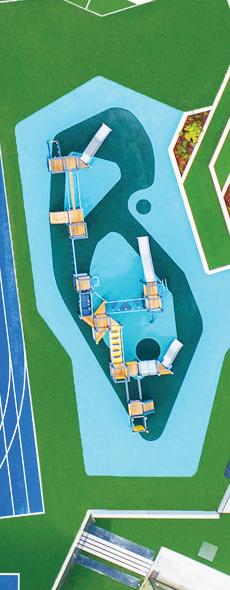
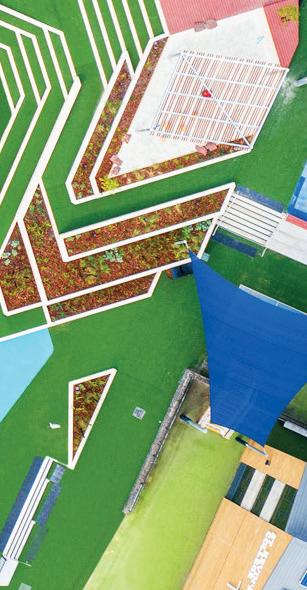

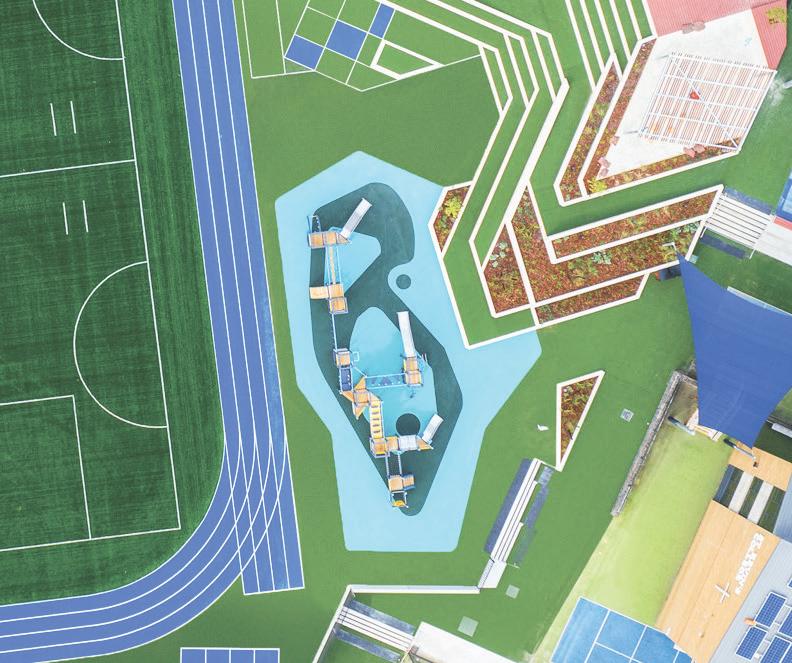
From the most prestigious sporting events to your local school, APT manufactures and installs more artificial turfs, courts, playgrounds and tracks than any other business. Made in Australia from renewable resources, our artificial surfaces are backed by warranties of up to 15 years.
Scott McFarlane from Kangaroo Courts highlighted several things schools should consider before installing a new sport surface, or upgrading an existing court.
“What are the schools’ desired sports to play in the new area? Will the area be used only for sport or used for other purposes which may include vehicle traffic? This will determine the appropriate surface to install.
“The safety and maintenance checks required will be determined by the surface recommended and installed. Some surfaces can require more maintenance than others, as an average every 12 months,” Mr McFarlane said.
Ensuring a functional and aesthetically pleasing surface, Mr McFarlane said, will be influenced by the construction of the area, adequate drainage, whether the surface is under a covered outdoor learning area, the type of surface installed, and attention to maintenance requirement.
Victoria Brockett from Sport Group said for artificial surfaces, a lot of imported products do not offer the same level of quality,
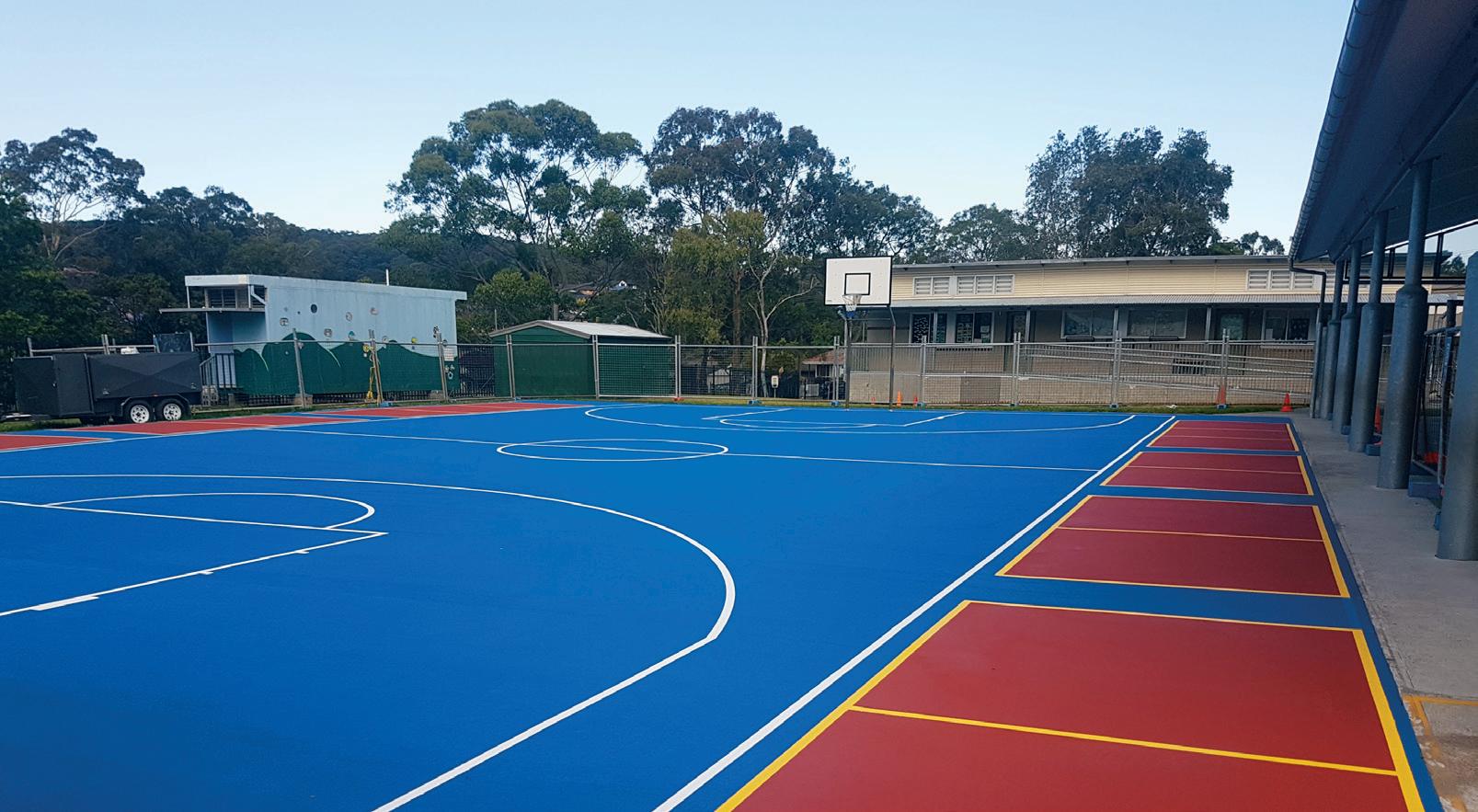
nor substantial warranties, as local products. “Always go with Australian made products because they are designed, developed and tested specifically for Australian climates.
“Safety is important when considering the quality of a sport surface. Surfaces should be free of toxic chemicals, meet all Australian safety standards and offer things such as slip resistance, non-deteriorating materials and UV resistance.”
Ms Brockett said natural and artificial surfaces offer both pros
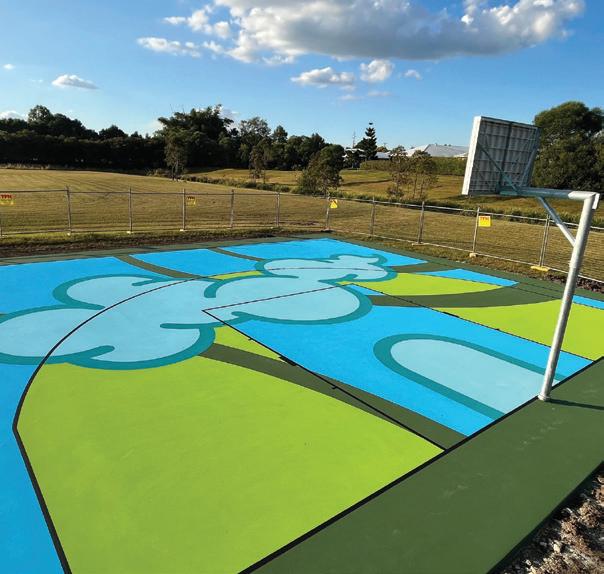
and cons. “Synthetic surfaces are great for all-weather use, particularly in regions or areas in a school where natural grass is difficult to grow or maintain. It is also excellent for multi-purpose use, where a school wants to cater for several applications and requires multiple line markings, for example, schools with spatial limitations.
“Whilst the initial investment can be a bit higher than natural turf, artificial surfaces tend to require less money and time to maintain over the lifetime of the surface. Artificial surfaces, if maintained
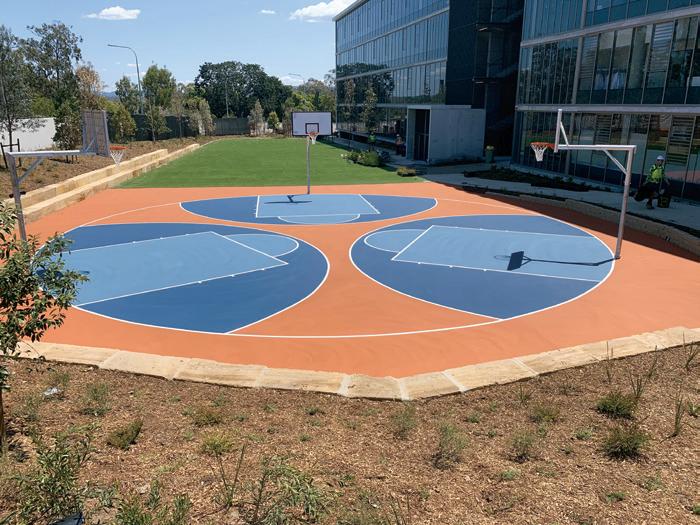
well, generally offer a more consistent and even playing surface than natural grass, attributing to fewer injuries.”
For schools with spatial or budget constraints, Ms Brockett said multi-sport surfaces are popular. “Artificial turf, acrylic hard courts, soft-fall and indoor polyurethane courts, all accommodate multiple line markings to cater for different sport and leisure applications. Multi-sport surfaces are also a very cost-effective solution – one court or field can tick lots of boxes!”
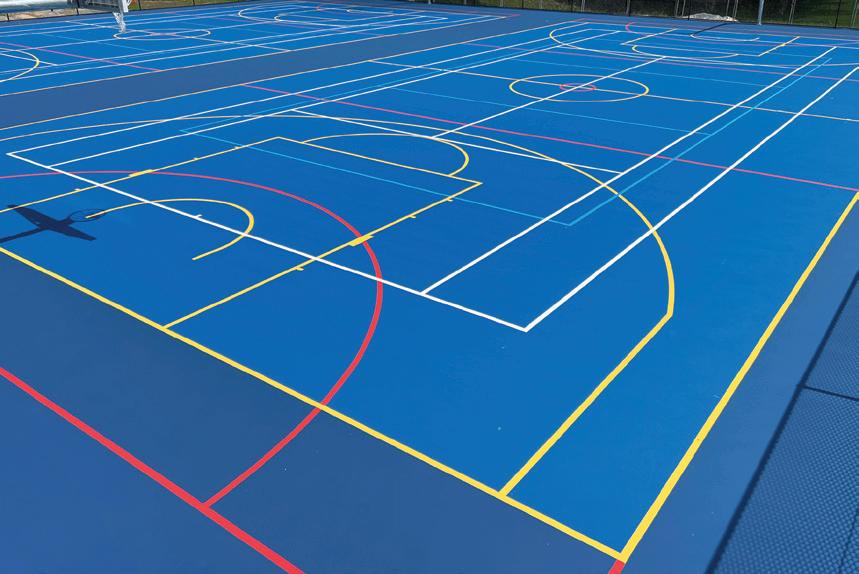
With an outstanding reputation in the
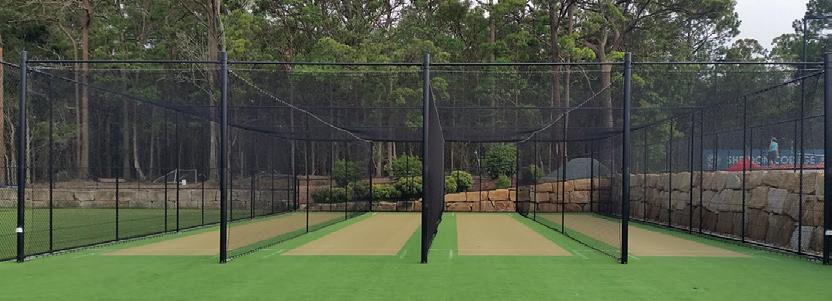


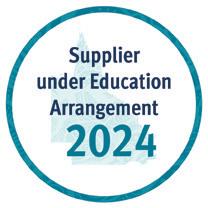


Kangaroo courts has been installing all weather sports surfaces for almost 20 years, installed mainly on the eastern seaboard of Australia from Emerald in QLD & Lorne in VIC.
Our sports surface System is a multiple product, non-slip, colour surface treatment. It is based upon the application of successive cushion, texture, and colour coats. When applied over asphalt and concrete surfaces

it provides an aesthetically pleasing all-weather surface. Utilising 100% acrylic and high-quality resins, flexibility is inherent to all our systems.
• Court Resurfacing
• Court Refurbishment on aged concrete & asphalt surfaces
• Court Construction
• Court Line Marking
• Court Maintenance
• Indoor & Outdoor nonslip applications



The Blank Canvas – Eyesore to amazing, arriving at a project which could be brand new, or existing our teams are tasked with transferring the area to a functional space for sport and recreation. This a very rewarding experience.
Sport forms part of the social fabric – Many of our projects are undertaken for schools and communities who often spend years gathering funds through P&C activities or government grants. One recent experience was “Ungarie” South Western

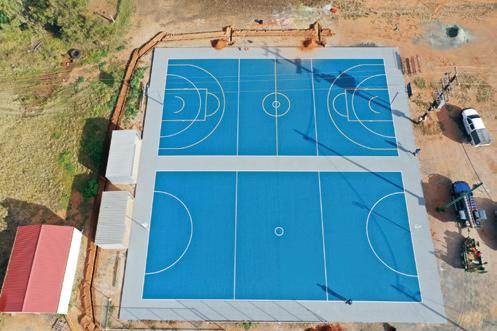
NSW were 2.5 years of fund raising we were able to build to new courts for there club. They are sporting events can attract 500+ people who could travel for up to 300kms to attend and catch up with their friends and colleagues.
Dreaming Big – Many of the projects we work on are at schools. The students are always excited about having a new court they can play on. Desperately waiting to jump on show their friends they have the skills like Lebron, Jordan & Shaq


 By Gemma Easton, Editor
By Gemma Easton, Editor
Participating in school sport positively impacts students physical and mental health, and provides valuable social connections. Physical activity has also been shown to stimulate brain function, and is likely to increase academic performance.
A student’s soft skills are developed through participation in extra-curricular school sport, including time management, confidence, and organisation. These are valuable skills which will benefit students throughout their educational journey, and beyond.
Evidence suggests that organised sport correlates strongly with improved wellbeing. One hypothesis is that sports enmesh students in their community, creating a strong sense of “relatedness”. Another suggestion
Fit Education has successfully delivered fitness qualifications for the last 20 years.
Collaborating closely with schools, Fit Education offers students pathways to achieve certifications such as Certificate II in Sport Coaching or Sport and Recreation, Certificate III in Fitness, Certificate IV in Fitness, or even a Diploma of Sport while still in school.
These qualifications not only equip students with essential skills and knowledge but also pave the way for promising


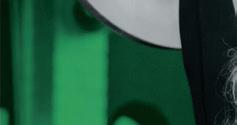







careers in the sporting industry.
Moreover, students who opt for tertiary education can benefit from receiving credits towards higher studies, facilitating smoother transitions into advanced academic pursuits.
Fit Education’s tailored programs not only nurture a passion for fitness but also provide tangible opportunities for students to excel, shaping a generation of skilled professionals poised to make significant contributions to the sporting realm.
is that sports promote a healthier relationship to physical activity, that goes beyond the sport itself.
The Australian Government’s Sporting Schools program offers grants to schools to support the delivery of sport-based programs. The Australian Sports Commission has partnered with 35 national sporting organisations, and national sporting organisations for people with disability, to ensure programs are delivered free to students and their families.
Your local or state government may also provide grant funding or community partnerships to facilitate sporting opportunities in schools.
Partnering with a local sporting club is another great way to get your students excited about sport. Your students would benefit from the expertise of the club’s coaches, players, and perhaps even facilities and equipment, while the club may recruit some of your students for their teams. A partnership could also help to strengthen community connections and social cohesion.
Extra-curricular sporting programs, run by external providers, can extend sporting experiences for students. Special clinics could be run for a team or select group of students, helping them to further develop their skills, and learn some new ones. Introductory programmes can provide students with a taste of a particular sport, helping them to see if they like it before committing to a whole term or season.
School News asked some sports educators how they are
working with school groups to foster a love of sport.
Through its collaborative efforts with schools, Fit Education is shaping a generation of active, empowered individuals poised to lead healthier and more fulfilling lives and create a healthier Australia.
The Fit Education School Certificate Program integrates fitness education into the school curriculum, engaging students in sports and fitness by fostering a deeper understanding of the benefits of physical activity.
Students gain a qualification and can move into work in the sport and fitness industry after school or into one of the many pathways that the qualifications allow:
• Further study with Fit Education
• Further study with partner Universities
• Brian Kerle Basketball Academy
• Women’s Sports Academy
• Dundee’s Boxing Academy
• GC Strength and Conditioning Academy
Fit Education programs train students with the skills and qualifications to become sports coaches, gym instructors, group fitness instructors and personal trainers.
The increased awareness on the importance of health and fitness post COVID, combined with the upcoming 2032 Brisbane Olympics and the rise of women’s sport means there is more opportunity than ever before in the sport and fitness industry for young people.

Schools are a hub of activity, from the excitement of lunchtime to the liveliness of the sports field.
This means it is an environment that is prone to accidents like falls and cuts, or allergic reactions. First aid can reduce the severity of these incidents and ensure students, staff and visitors are safe while on school grounds.
First Aid Accident and Emergency is a registered Training Organisation for Australian organisations, including education facilities.
First Aid A&E Managing Director Scott Whimpey said that in most states, it is now a requirement for education facilities to have a minimum number of first aid trained staff on site as part of a school’s duty of care requirements.
“The most popular first aid course for teachers is HLTAID012 –Provide First Aid in an Education and Care Setting,” he explained. “This course is specific to schools and covers first aid specific to children as well as legal obligations and reporting of incidents to governing bodies.”
And while safety education is key, having the correct tools at your disposal is essential when caring for a sick or injured student or staff member. An accredited and approved first aid kit may look different according to regulations between different states and territories, but Mr Whimpey said there are some key considerations that all schools should heed.
When selecting a first aid kit, Mr Whimpey said that schools should consider how many people are on site at any one time, how large the site is, how far your school is from emergency

services and how easily you can contact emergency services. He added that it is also important to take note of any injuries or incidents from the past five years.
From there, schools can select the right first aid kit for their circumstances- from a Level 1 Personal Kit to a Level 7 High Risk Kit.
“Our most popular kits are the Modulator Range as they are compliant for 50 people, allowing you to scale up with additional kits if required,” Mr Whimpey said. “These kits are Australian approved, easy to use, and cost effective.
“The modulator comes in a soft transportable option for
getting to patients in a hurry as well as a wall mount option.”
In addition to first aid kits, defibrillators are becoming a common sight on school grounds across the country and are now mandatory in Western Australia. Defibrillators are the single way to increase survival of cardiac arrest from below 10 percent to upwards of 70 percent.
Mr Whimpey said that while some people may believe a defibrillator is not of use in a school environment, this is a common misconception.
“Outsiders think that it’s ridiculous to have to have a defibrillator on your site, as children should not need to

be resuscitated,” he said. “But most people don’t realise that your school is a community hub and there are a huge amount of people of all different ages and backgrounds coming and going from your school on a daily basis.”
In the event of a cardiac arrest, access to a defibrillator within the first three minutes is key. As such, having a defibrillator accessible at multiple sites across the school grounds is imperative. This is especially important if school grounds encompass a large area. Additionally, schools can invest in mobile defibrillator options for excursions, camps and for use on school buses.
For schools that choose to invest in a defibrillator, First Aid A&E offers free online training for all staff members as well as eight years of after-sales support and a comprehensive monthly check-list that administrative staff can easily implement into their monthly routine.
With years of experience working in the field, Mr Whimpey said that while awareness around first aid has improved, he still sees schools trip up occasionally.
“In most cases first aid training will cover how to manage situations as they occur,” he said. “However, often, I see situations arising when a relief teacher has not been properly briefed on the needs of students in their care. Ideally, a comprehensive handover should occur that identifies students with special needs, and the students specific medical action plan.
“An example would be for a child with anaphylaxis to nuts, the relief teacher should be told of this student’s allergies and shown the action plan for the specific student, as well as the school’s critical incident plan and who to contact in an emergency.”
If you require First Aid Kits, equipment or Defibrillators for your school, contact the experts at First Aid Accident & Emergency at sales@firstaidae.com.au
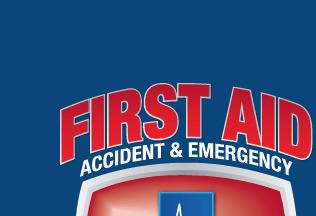
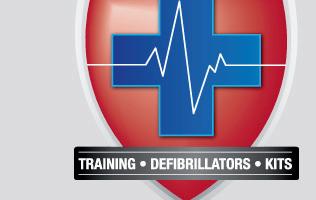


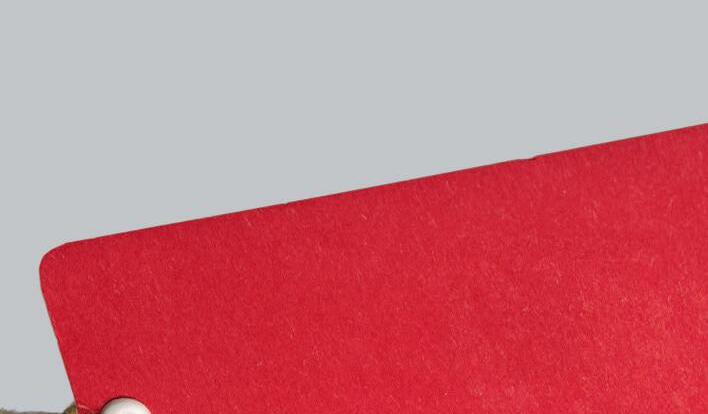









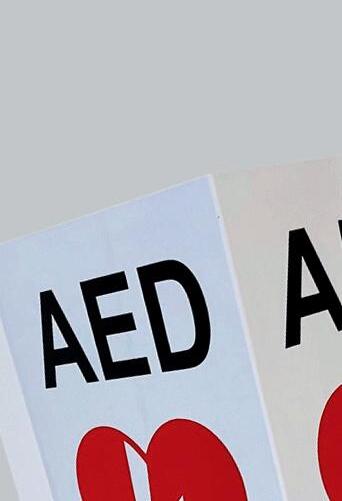




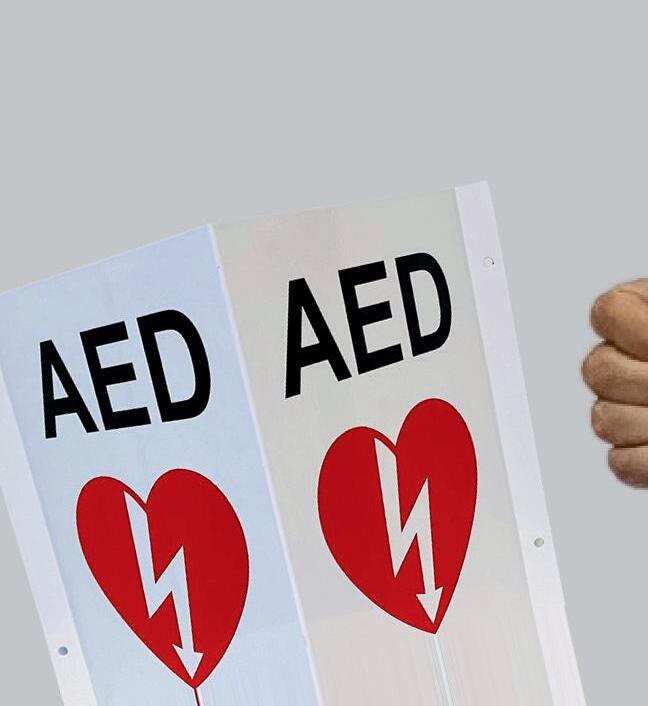




















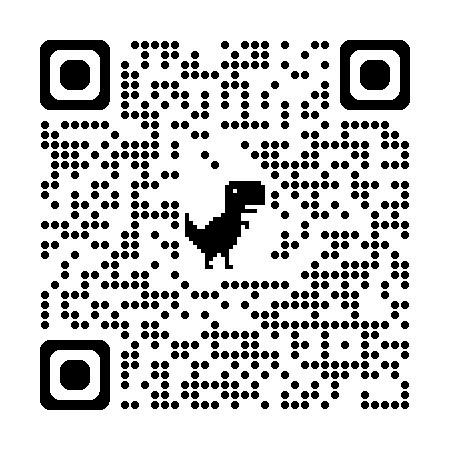
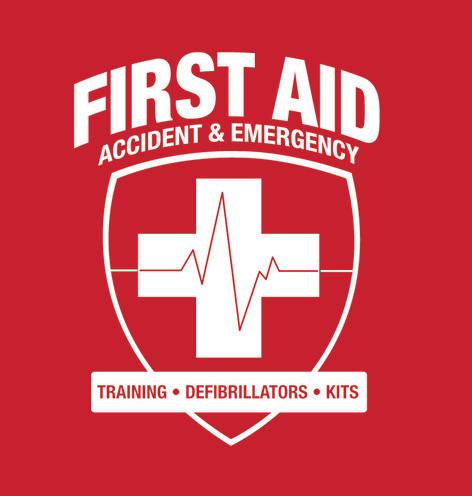
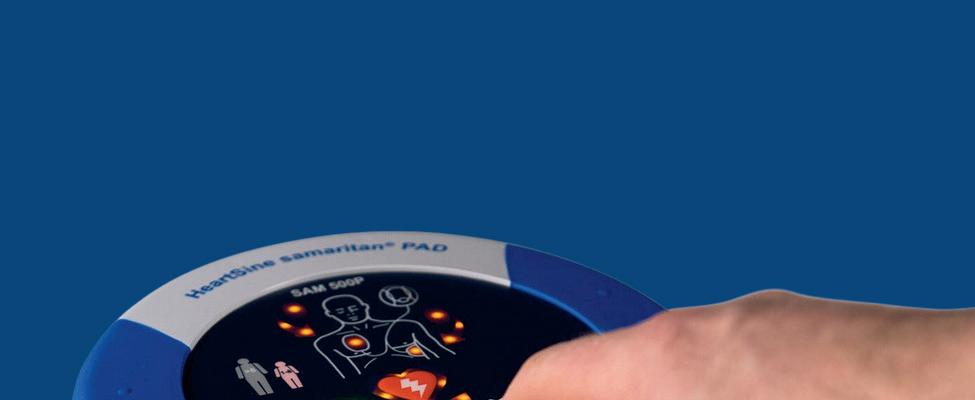


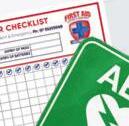



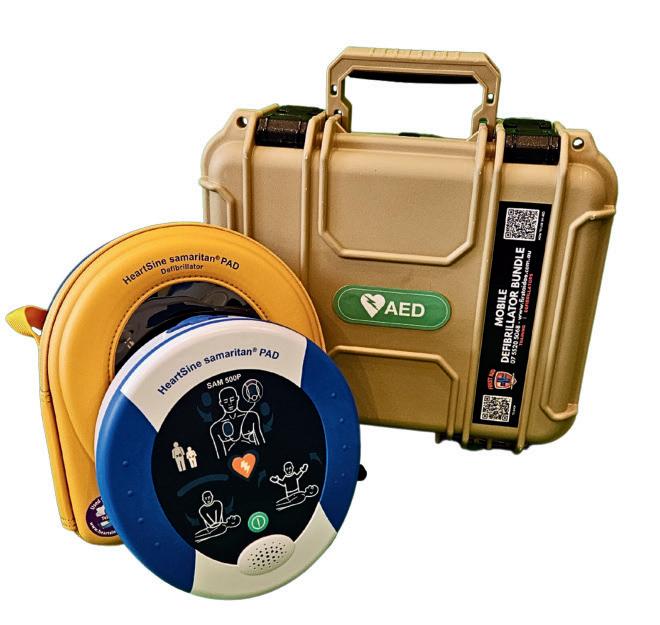

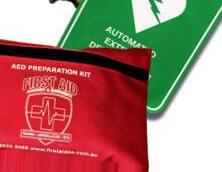
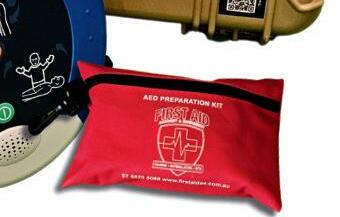




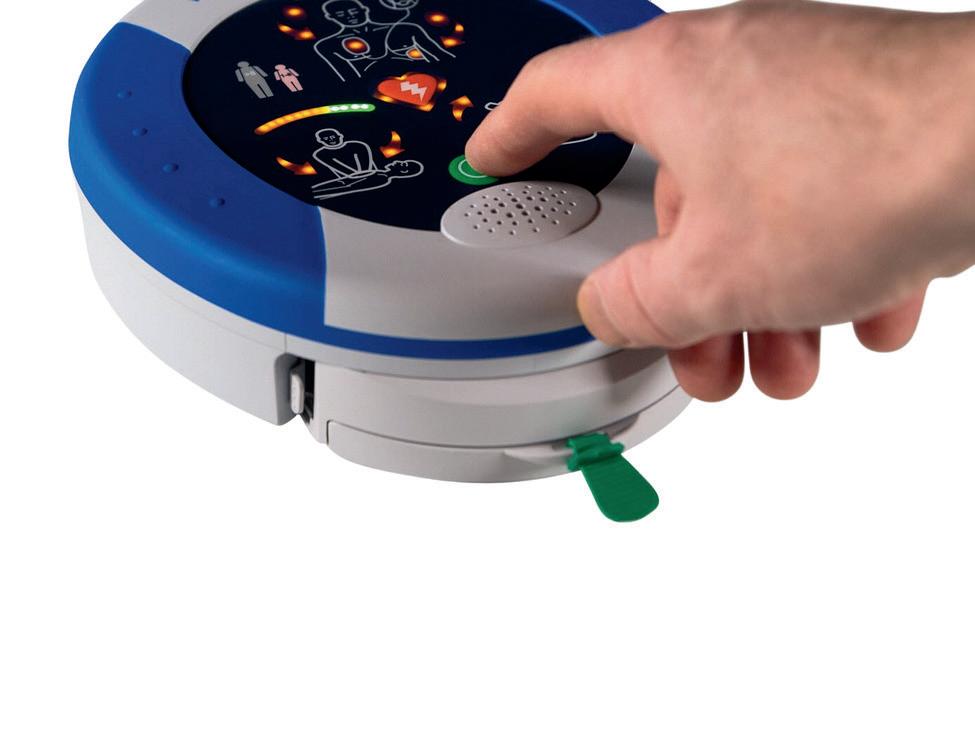
We have created a rapid response, all weather Defib Bundle, ready to be transported to an emergency or mounted on the maintenance buggy.
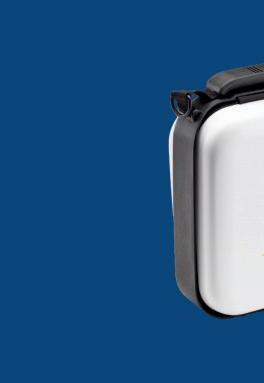





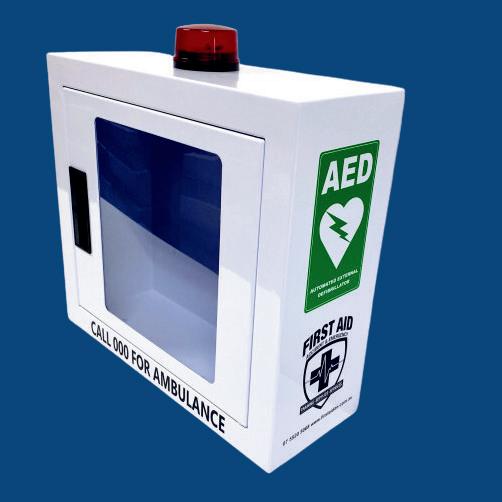

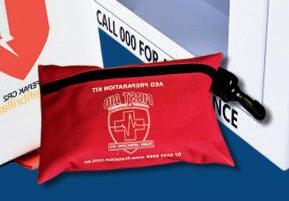

This Adult and Child Defib Bundle is ideal for mounting on the admin wall, comes complete with everything you need to be compliant.















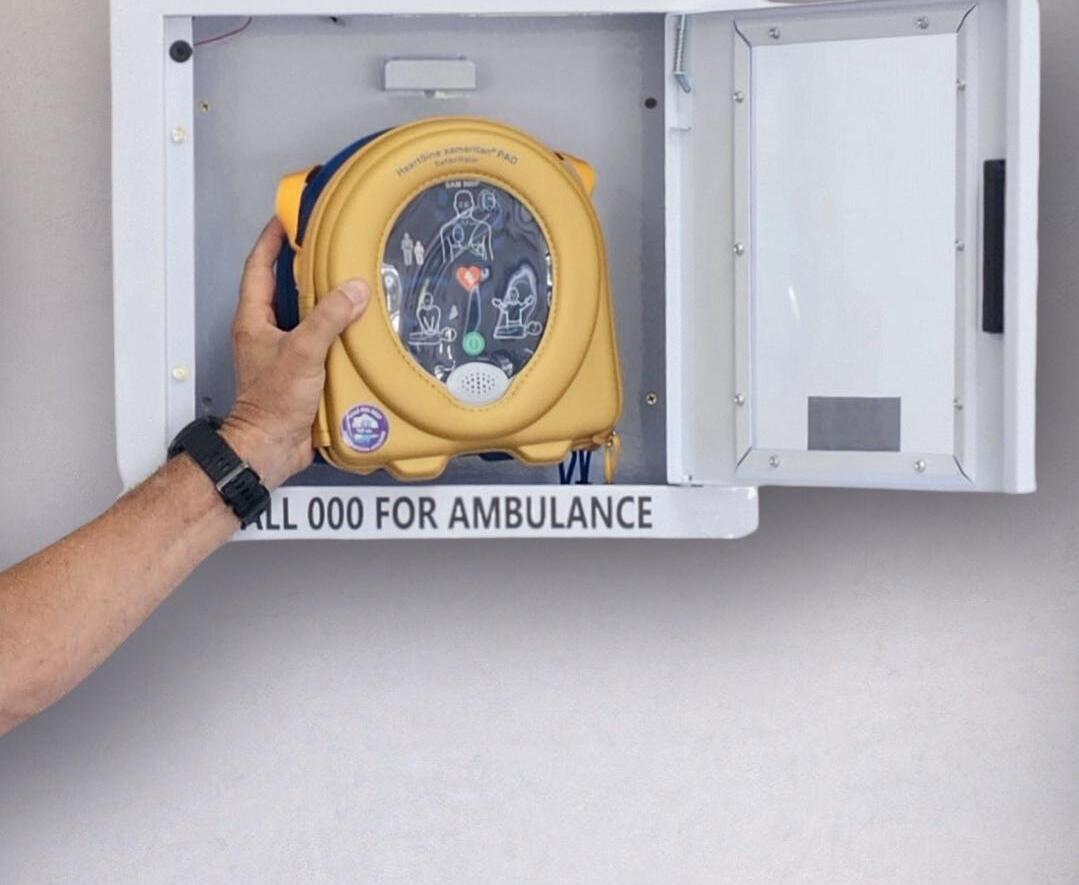


With classroom space often at a premium in schools, the great outdoors may provide a solution.
Green spaces are a critical part of a school’s infrastructure, and are often underutilised. Moving teaching and learning outdoors can provide extra space without costly and time-consuming building projects. Installing shade solutions ensures covered outdoor learning spaces are useable year-round.
Children need some sunlight each day to help with the production of vitamin D, which is essential for things like strong bones and muscles. In Australia, though, a healthy dose of sunlight may be as little as a few minutes, and two- or threehours during cooler or overcast conditions. Too much sun can be dangerous, and can lead to skin damage, eye damage, sunburn, skin cancer and a weakened immune system.
Schools, then, must provide sufficient shade for students to protect students while outside of their classroom. This will include space for students to utilise during
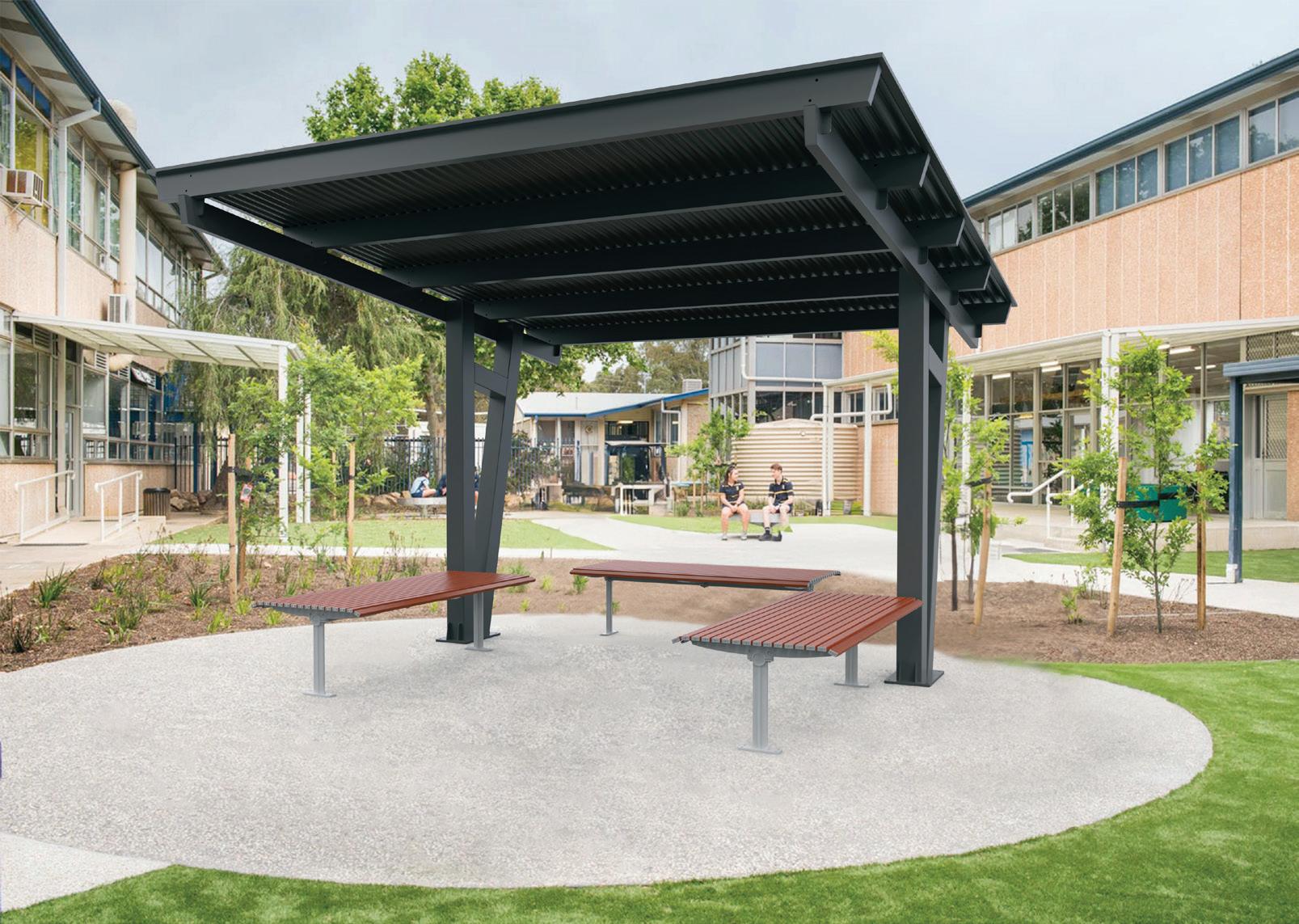
lunch breaks, and while walking between classrooms. Protection should be offered from the rain and wind, as well as the sun. Consideration should also be given to the shading of playground equipment, and sports courts.
Shade structures are versatile, and can be adapted to a range
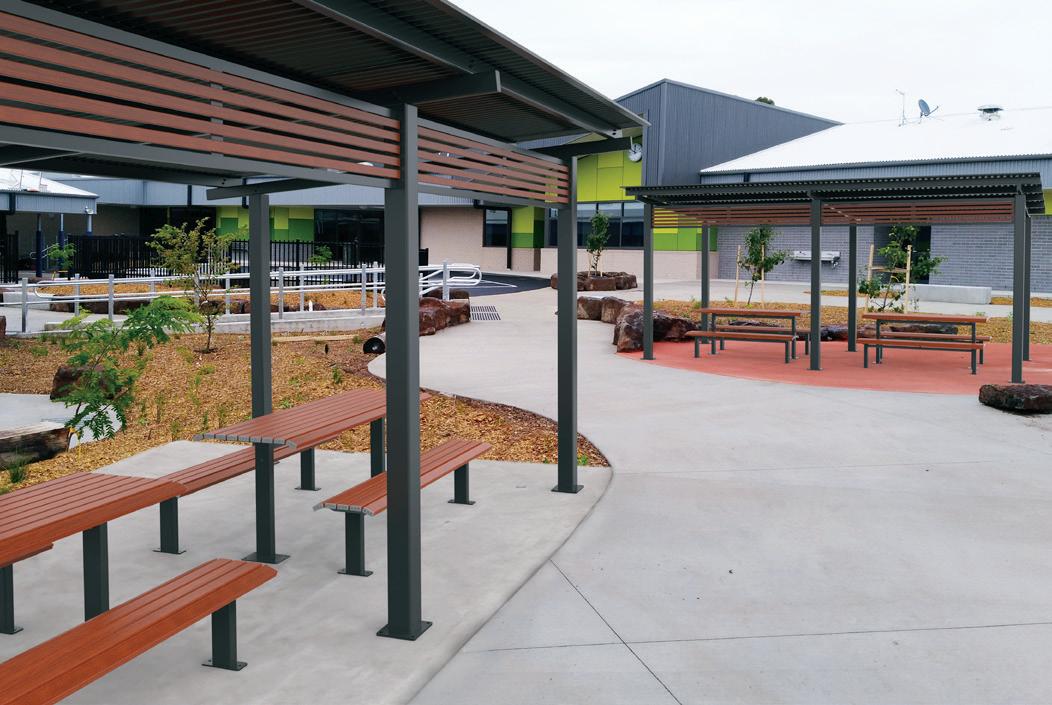
of applications. Moving a class outdoors, hosting large gatherings including summer assemblies and school market days, and creating covered outdoor space adjoined to the staffroom can all be achieved with the addition of shade structures.
Other practical applications include the protection of school bag storage and locker areas, creating a sheltered bus or pick up area, or using the additional
roof space to catch water for use in school gardens.
A sheltered outdoor space can give students a break from the classroom, encourage them to move around, help them to enjoy some fresh air and sunlight, and boost overall mood.
Covered outdoor learning environments can incorporate play activities like sandpits and loose parts nature play, tables and chairs and floor seating, as
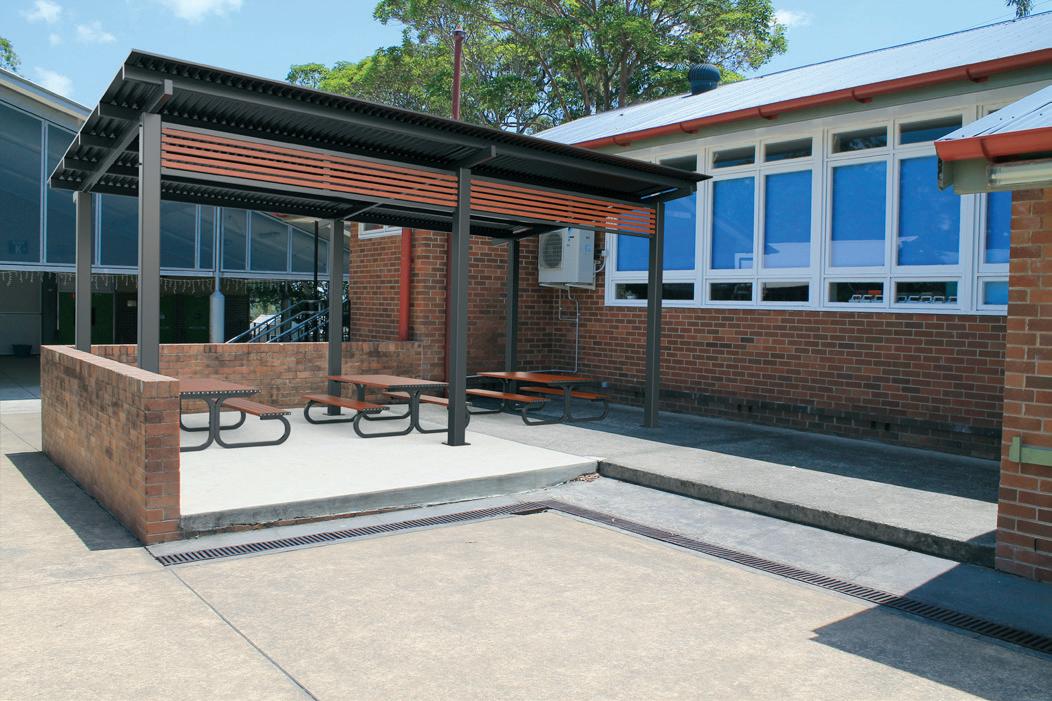
well as whiteboards, projectors, and other AV equipment. These features may prove particularly useful to occupy students on very hot days, or when it is raining or very windy.
Senior schools might use outdoor areas for woodworking and welding, while junior students might move to covered outdoor learning spaces for arts and crafts, and messy play. Protecting items in these spaces, as well as staff and students, from the elements is important, and shade structures provide an ideal solution.
Shade structures, including canopies and sails, are available in a range of sizes, colours, and materials. Design can be tailored to suit your school’s needs, with consideration of the size of the area, and what the space will be used for. The need for amenities like power, lighting and PA systems should also be addressed when planning your outdoor learning area.
Alastair Morris from MakMax said there are myriad options for shading in school, with different structures to suit different applications.
“Simple shade-mesh style structures are low-cost and flexible in design, needing only some posts in the ground or a building to attach a rigging screw to. A simple shade mesh can be used for providing some shade over playground equipment, however, a shade sail may not last the test of time when compared to a fully engineered shade structure,” Mr Morris said.
“Choosing a strong, safe and stylish engineered shade structure can provide more

permanent and architecturally attractive shading elements. Choose a high-quality architectural umbrella to provide a shady lunch spot in the playground or for a weatherproof covered outdoor learning area, a curved roof fabric COLA can be engineered to fit any square or rectangular playground space.
“For larger shaded areas, schools are frequently opting to protect students playing sports with a sports-court roof. Capable of covering one, two or even three basketball court-sized playing areas, a lightweight fabric sports court roof can span large distances and can accommodate multiple sports under the protective canopy.”
Mr Morris highlighted the customisable features of shade solutions. “For schools with a strong architectural vision, a bespoke fabric shade structure can lead to some truly exciting learning spaces. Lighting, large

screen displays, and PA systems can be integrated into these spaces, providing connectivity for the school population, offering a weather protected area for the school to livestream full school assemblies.”
Lindsay Stead from Astra Street Furniture said to get the most out of school shade structures, it is important to properly plan and design these structures for optimal protection.
“The location and weather conditions are important considerations. If you are in an area that normally experiences extreme heat or heavy rainfall, choose a shade structure that is durable and weatherresistant, otherwise you will have problems maintaining the shade structure. Australian made aluminium structures are maintenance-free and suit all environments.
“Shade structures provide safety from the elements including protection from
sunburn and heat stroke, storms and falling branches. Ensure that support systems do not pose safety hazards. It is a good idea to make them clearly visible and if located adjacent to sports courts, the uprights should be padded.”
Mr Stead said that while the design of shade structures is often selected based on aesthetics, there are some functional differences that suit different applications.
“Corner post shelters are a good all-rounder to suit most general applications. Cantilevered shelters are preferred for locations needing easier access, where front posts may be in the way for vehicles or pedestrian traffic, obscuring visibility or if large fixtures under the shelter need extra space around them.
Shade sails and large structures are best suited to broad areas of cover, especially if they need to fit an irregularly shaped area.”

School bathrooms can quickly become dated at best, or at worst, a barrier to student welfare.
In a 2021 study, 90 percent of students surveyed said that they had been impacted emotionally and physically by the poor state of their school toilets.
Based on research with more than 4000 parents and more than 3800 children in Poland, the UK, India and South Africa, the report highlighted that poorly maintained school toilets can not only make children unhappy, they can negatively impact their school achievement and wellbeing.
Significantly, 89 percent said their school toilets were ‘neglected’ with missing or broken items, and 78 percent felt unsafe in school toilets due to poor lighting or lack of doors.
The survey also revealed that poorly maintained school toilets were aff ecting children’s wellbeing and making them adopt unhealthy habits. Of the students surveyed, 30 percent reported ‘discomfort’ and struggling to concentrate during class due to ‘holding it in’ in an eff ort to avoid using school facilities. Alarmingly, 12 percent said they deliberately did not eat or drink at school in order to avoid using the toilet.
Within the Australian context, the School Toilet Project is working to reimagine Australian school toilets to help improve outcomes for students. The project has called for school administrators and governments to prioritise




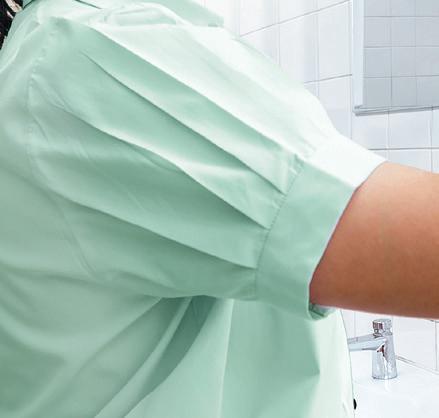


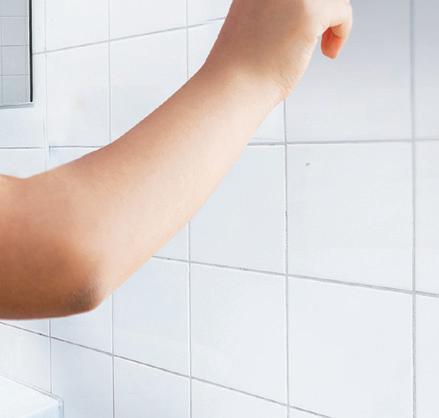
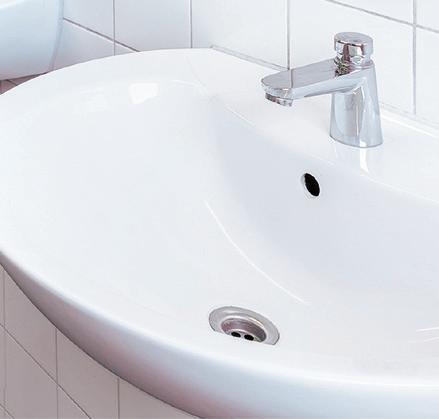
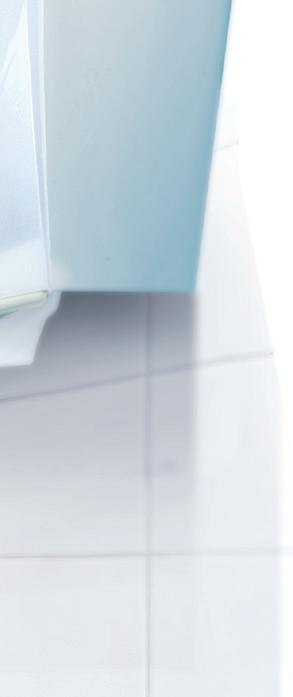

School bathrooms are often used as a hide-out
bathroom refurbishments, noting that the impact of poor design, maintenance and sanitation in school toilets causes a range of issues for students.
The project has also noted that school bathrooms are often used as a hide-out for students struggling with poor mental health. As such, schools can work to create bathrooms that double as a safe space by providing students with
details of crisis hotlines or other avenues of support that could help prevent self-harm. With this in mind, schools looking to refurbish their washrooms should note some key design considerations.
Firstly, striking a balance between supervision and privacy is paramount. Urinals are no longer the preferred choice in school washroom sett ings, as they are not able to provide students with adequate
privacy. Full height partitions allow students to use the toilet in privacy, helping prevent bathroom related anxieties. However, for schools with kindergarten or early learning facilities, lower partitions are preferred as they can allow educators to assist students if required.
While privacy is a top priority, preventing students congregating in the bathrooms is important in helping prevent
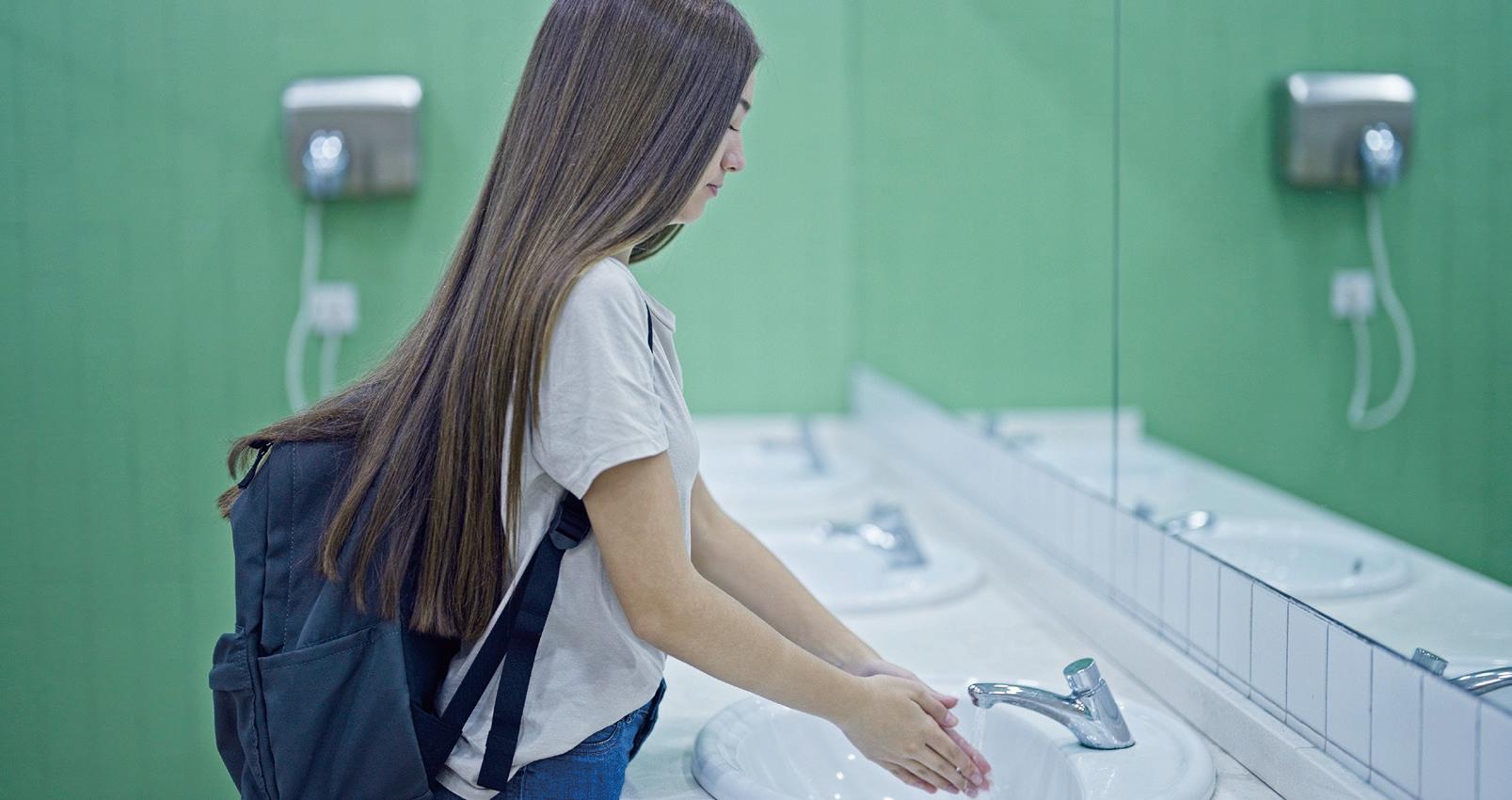
anti-social behaviour or bullying. Many schools are now choosing to create open ‘wash zones’ for washing hands. These zones allow for greater staff supervision and can help prevent students using the washrooms for alternative purposes.
With any school space, aesthetics and functionality must be balanced. Choose fi xtures which are hard-wearing, but have design appeal as well. Cubicle doors and walls can be coordinated to match the school colours, or inject a sense of fun into the space.
Mirrors in diff
erent shapes and sizes can also make the space more interesting.
Diff erent accessibility needs must be catered for, to accommodate students as well as teachers and guests. Consider installing bars or other mobility aids, as well as non-slip flooring.
A variety of paper towel, toilet tissue and soap dispensers are available for school washrooms. Commercial grade products will ensure dispensers are durable, and able to withstand frequent use, as will occur in schools.

Rob Graham, Head of Away from Home - Solaris Paper, said maximising the use of school budgets while maintaining high standards of hygiene is essential for creating a safe and healthy learning environment. “School procurement departments are being challenged with the responsibility to save money, while also raising hygiene standards. Savvy procurement departments are proving that both can be achieved, with high quality and innovative washroom tissue products available at aff ordable prices.
As students spend a significant portion of their day at school, it is important to maintain well-stocked washrooms with essential paper products for their well-being and overall experience. “Among these, toilet tissues stand out as cornerstone of cleanliness and convenience,” Mr Graham said. “A well-stocked washroom, equipped with quality toilet paper products, conveys a message of respect and care for the school community, striking the delicate balance between budget constraints, and maintaining high hygiene standards.”
To ensure economical use of washroom products, Mr Graham recommends a review of washroom tissue strategy, to make savings and raise hygiene standards “There are dispenser solutions to address the need for sustainable hygiene practices, whilst also focussing on waste minimisation, helping to control costs. Controlled dispensers regulate just the right amount of paper towels or toilet tissue dispensed with each use, cutt ing down on waste.”


